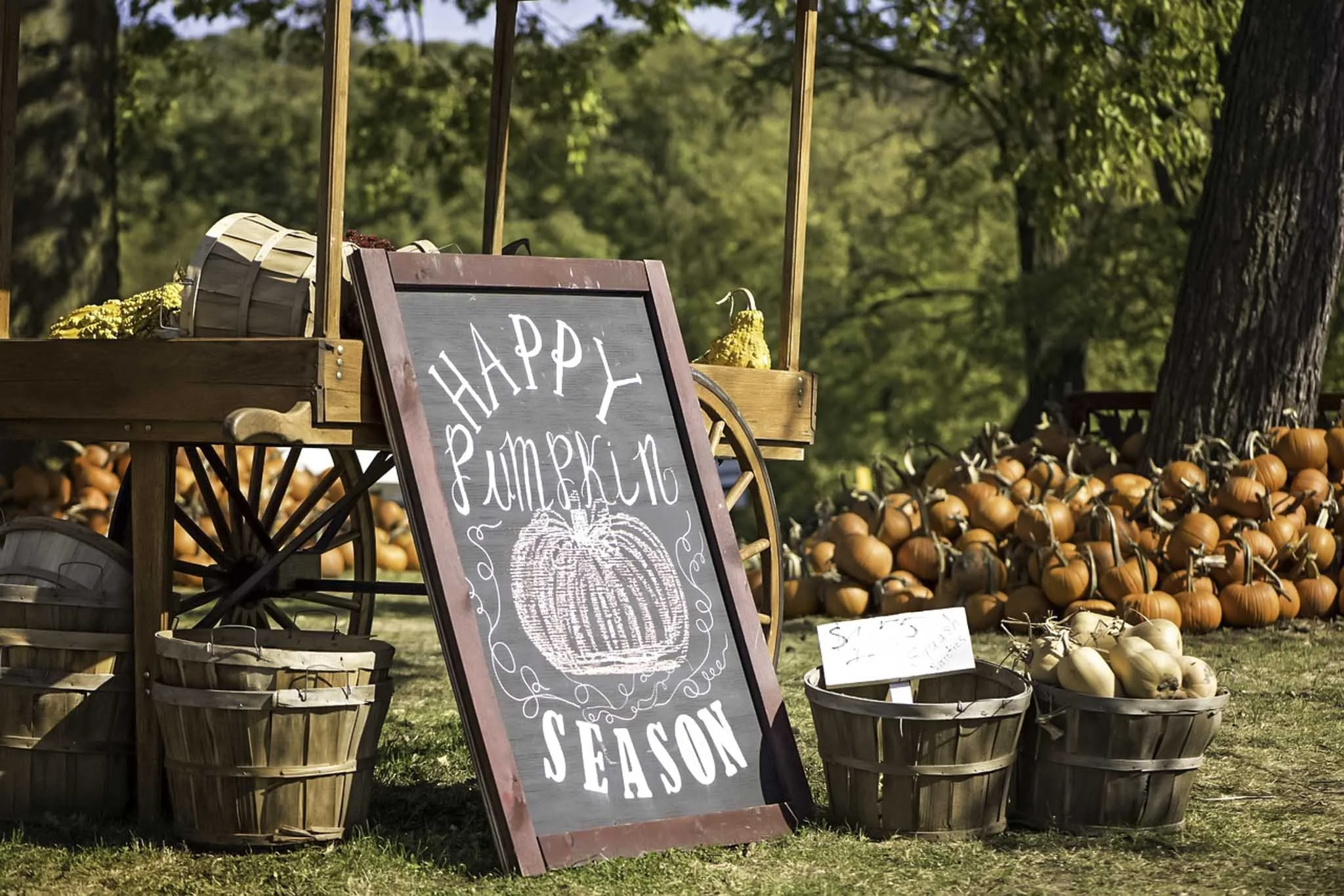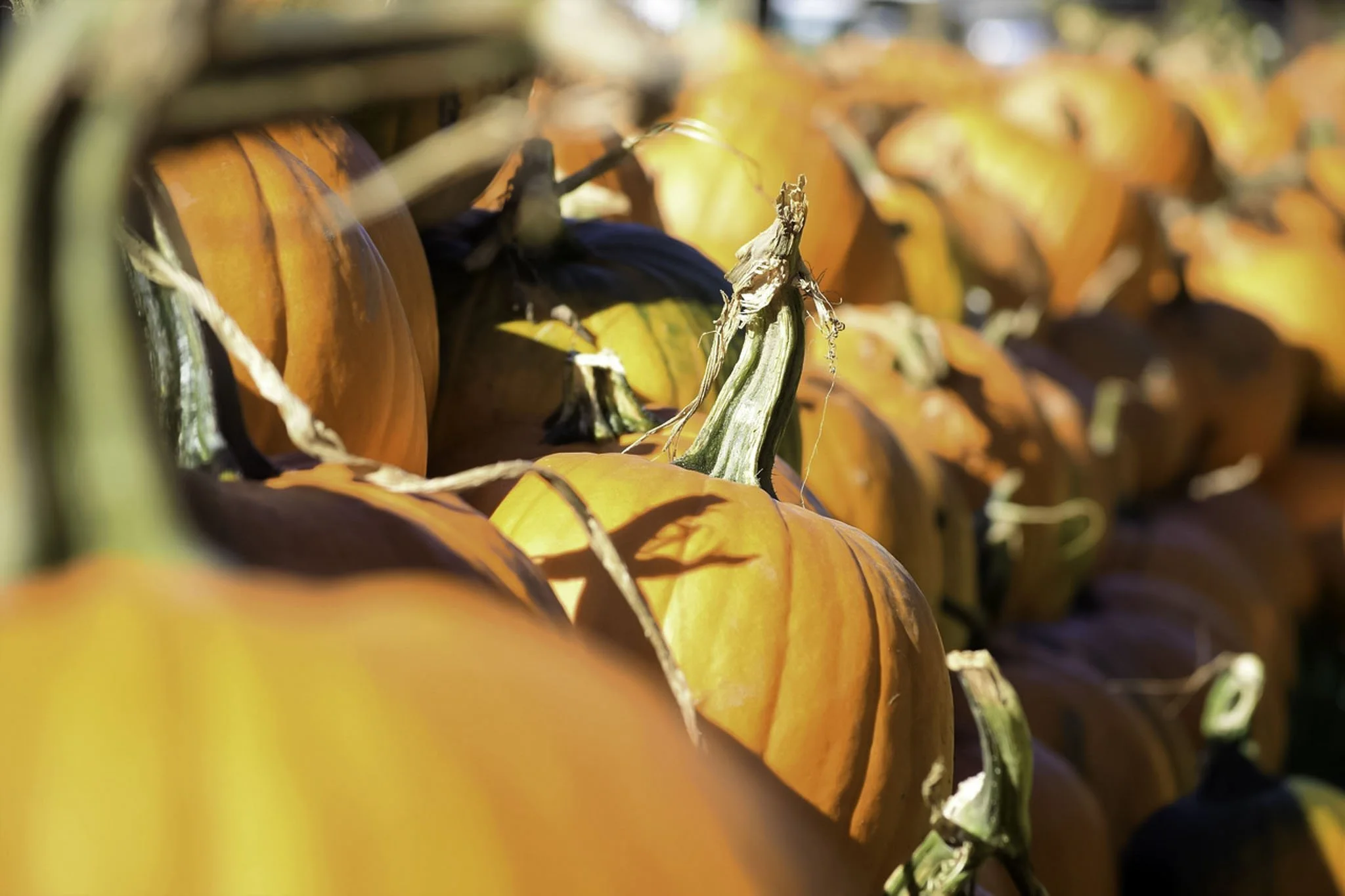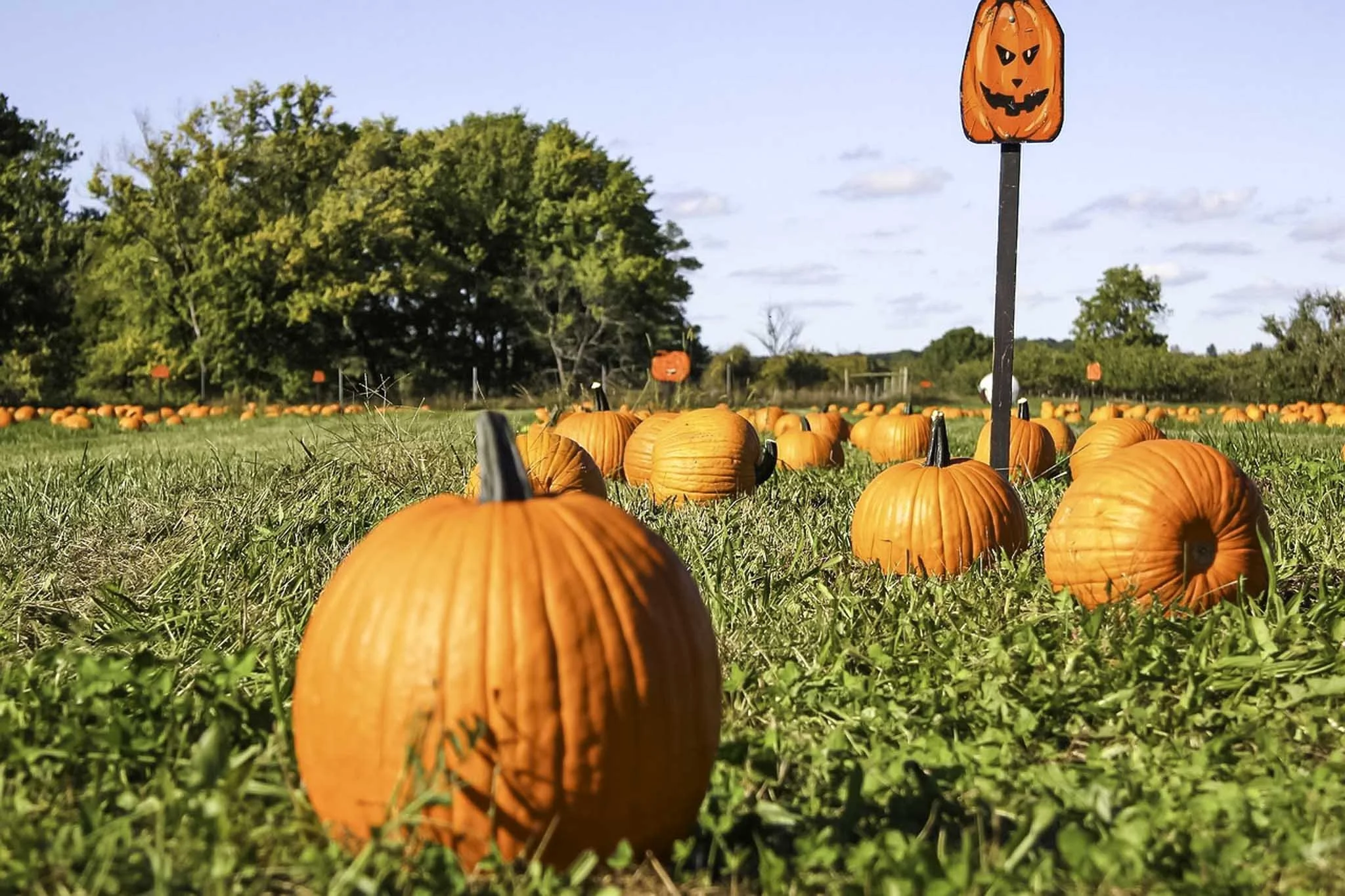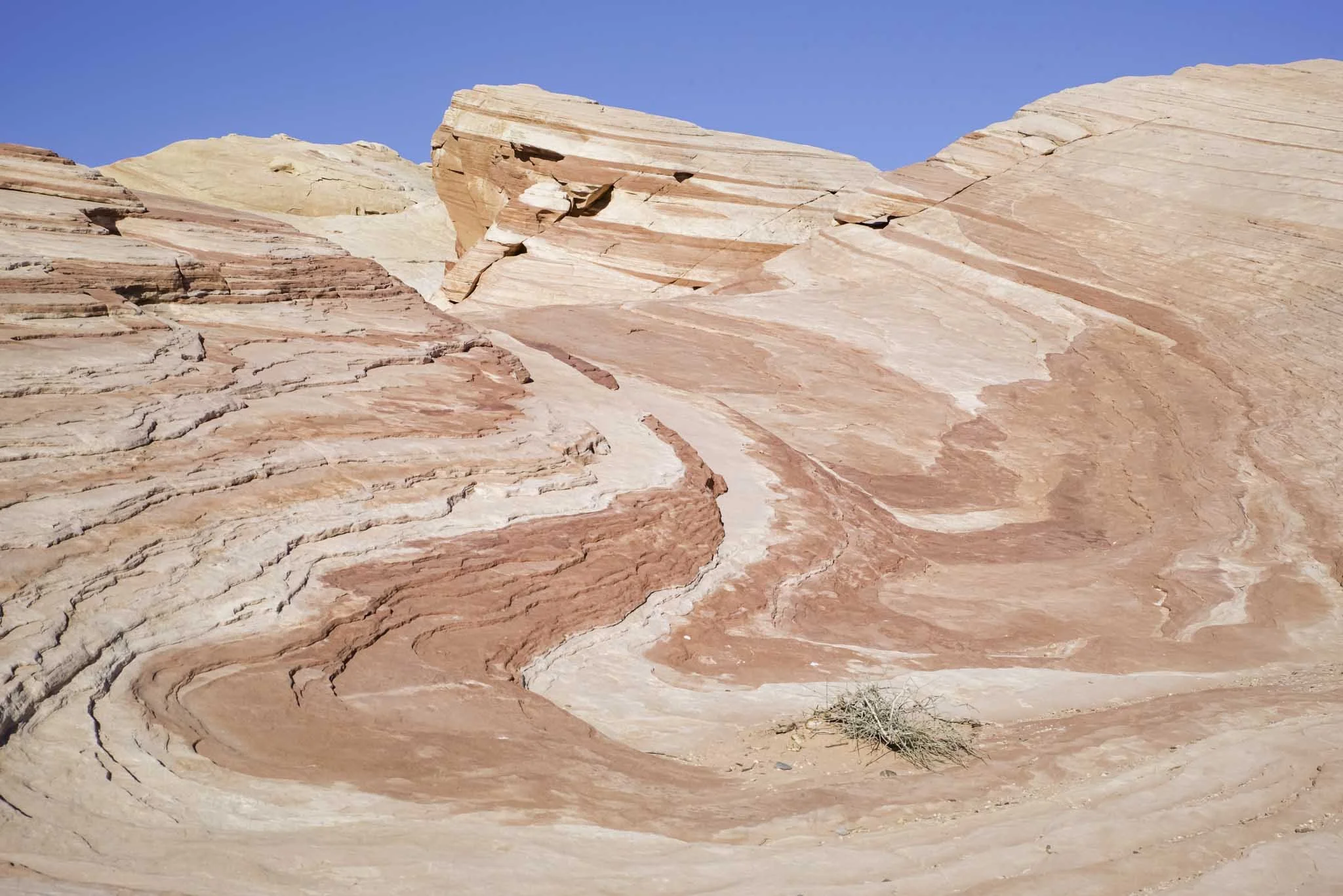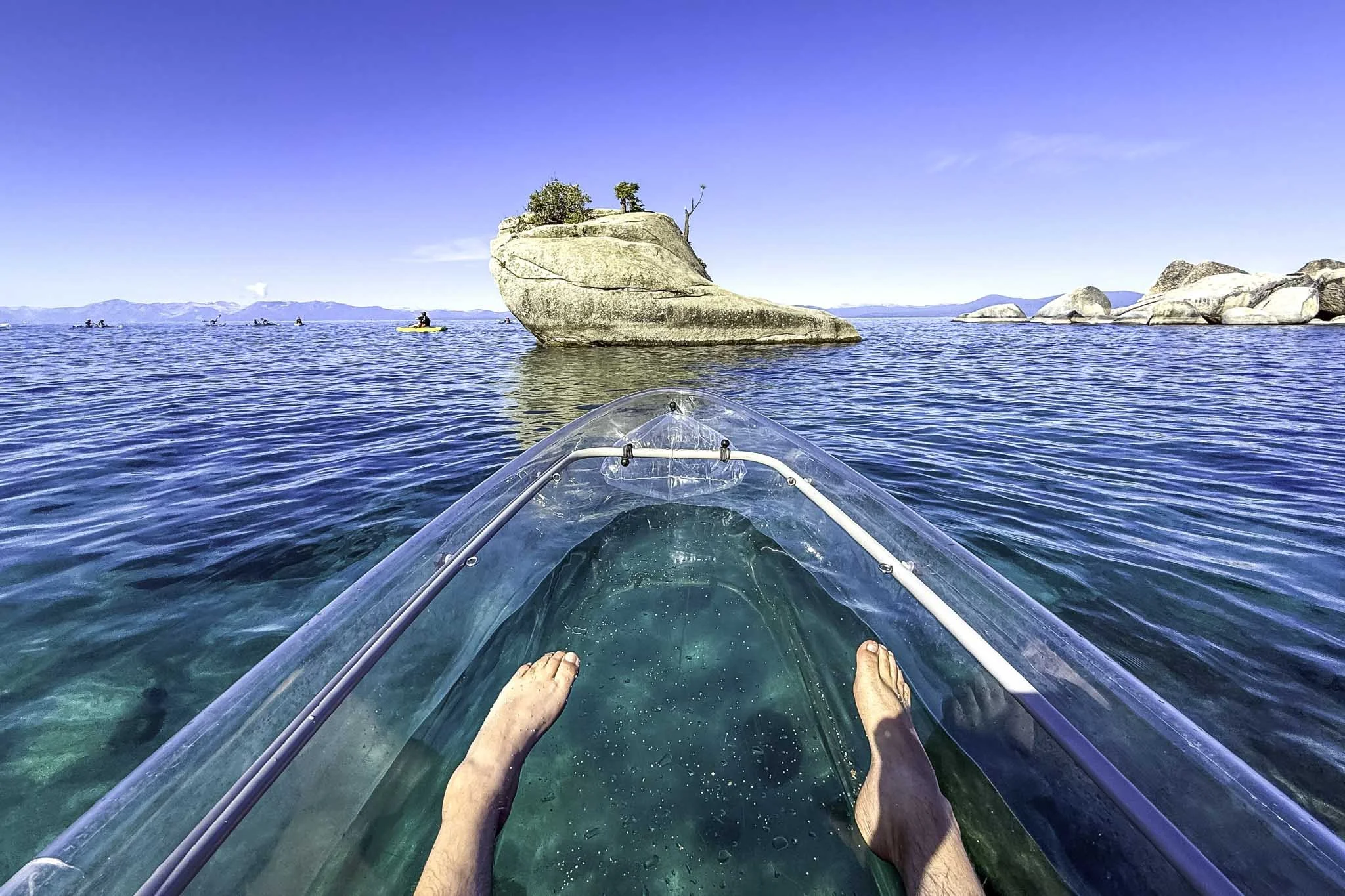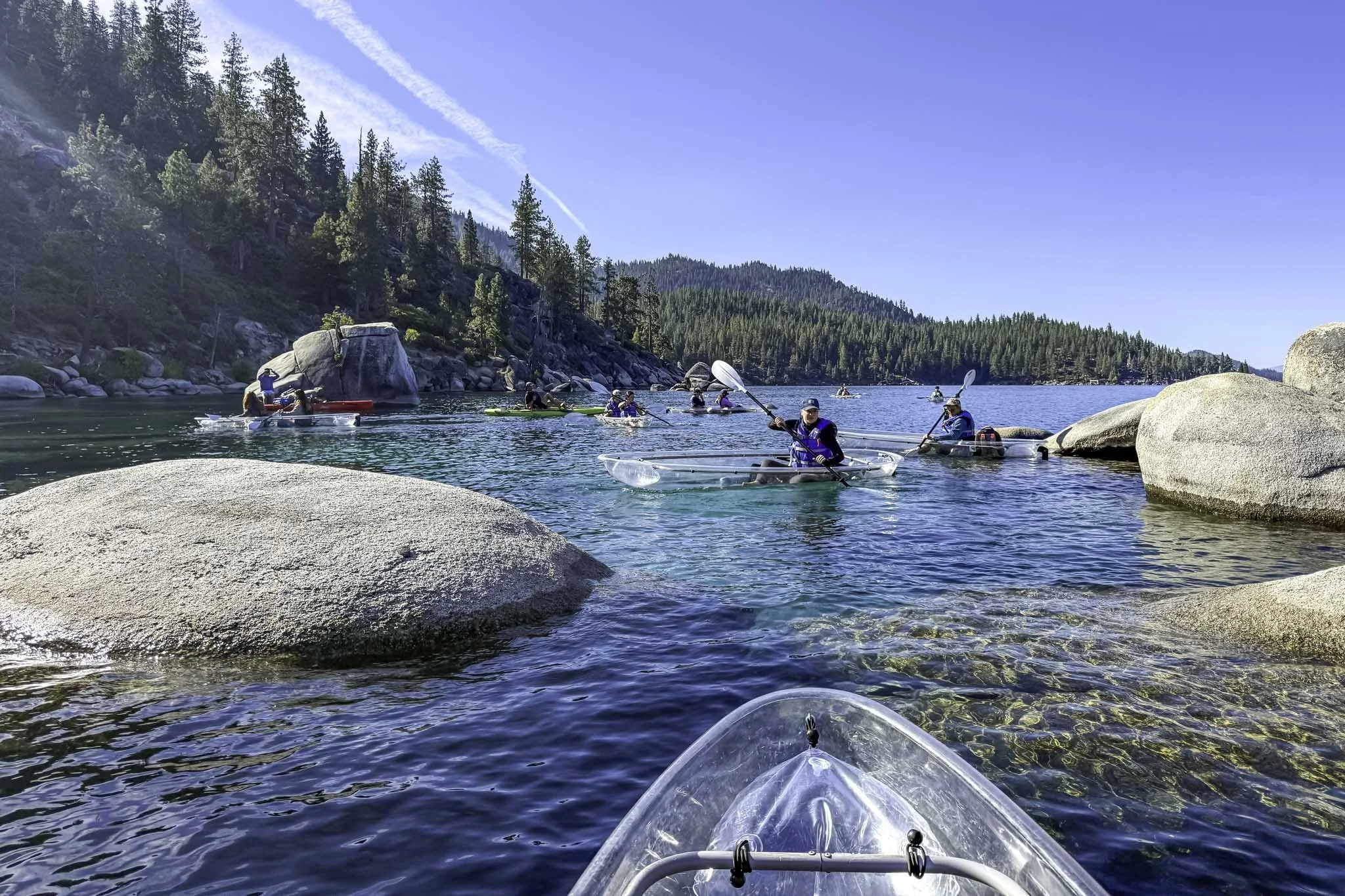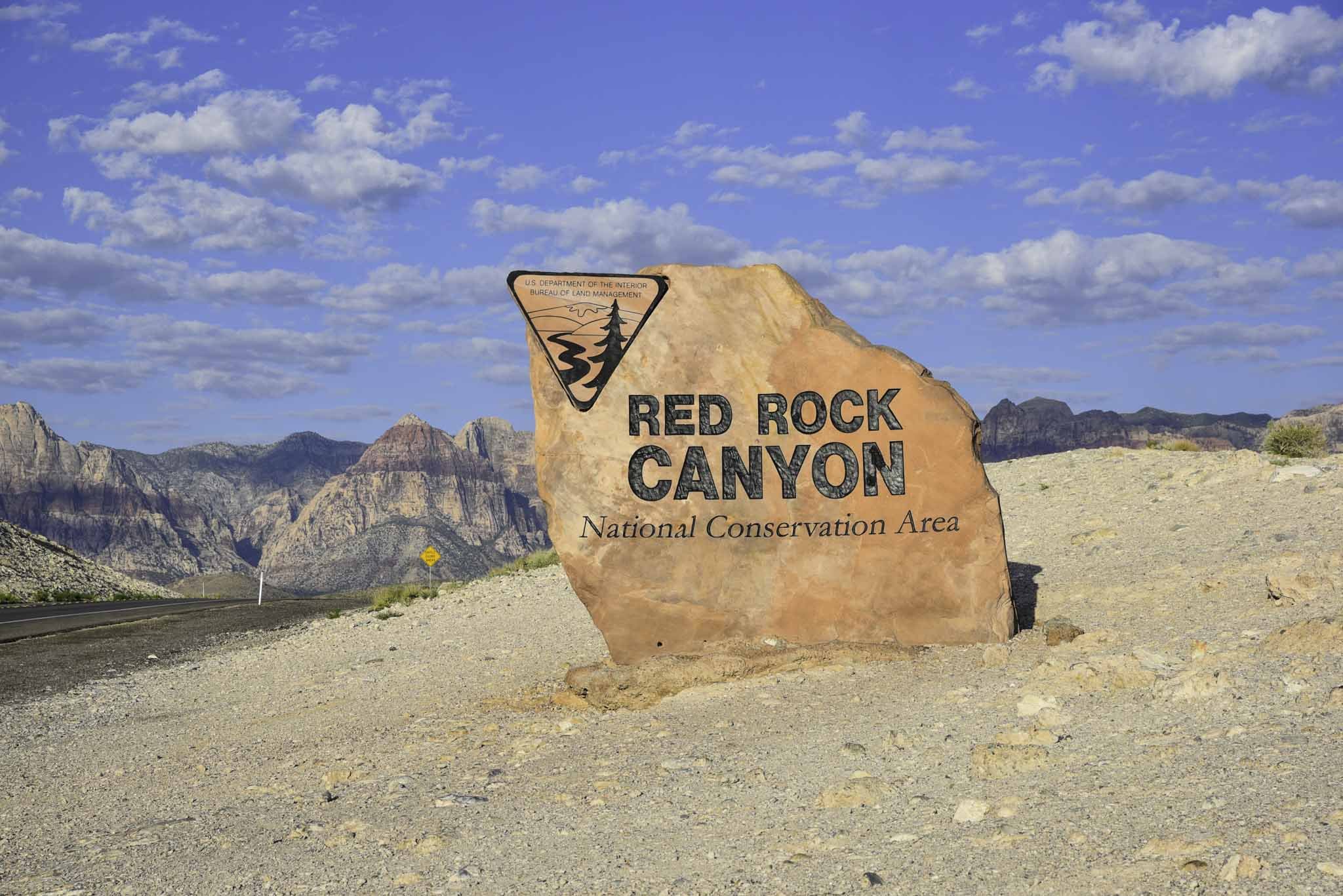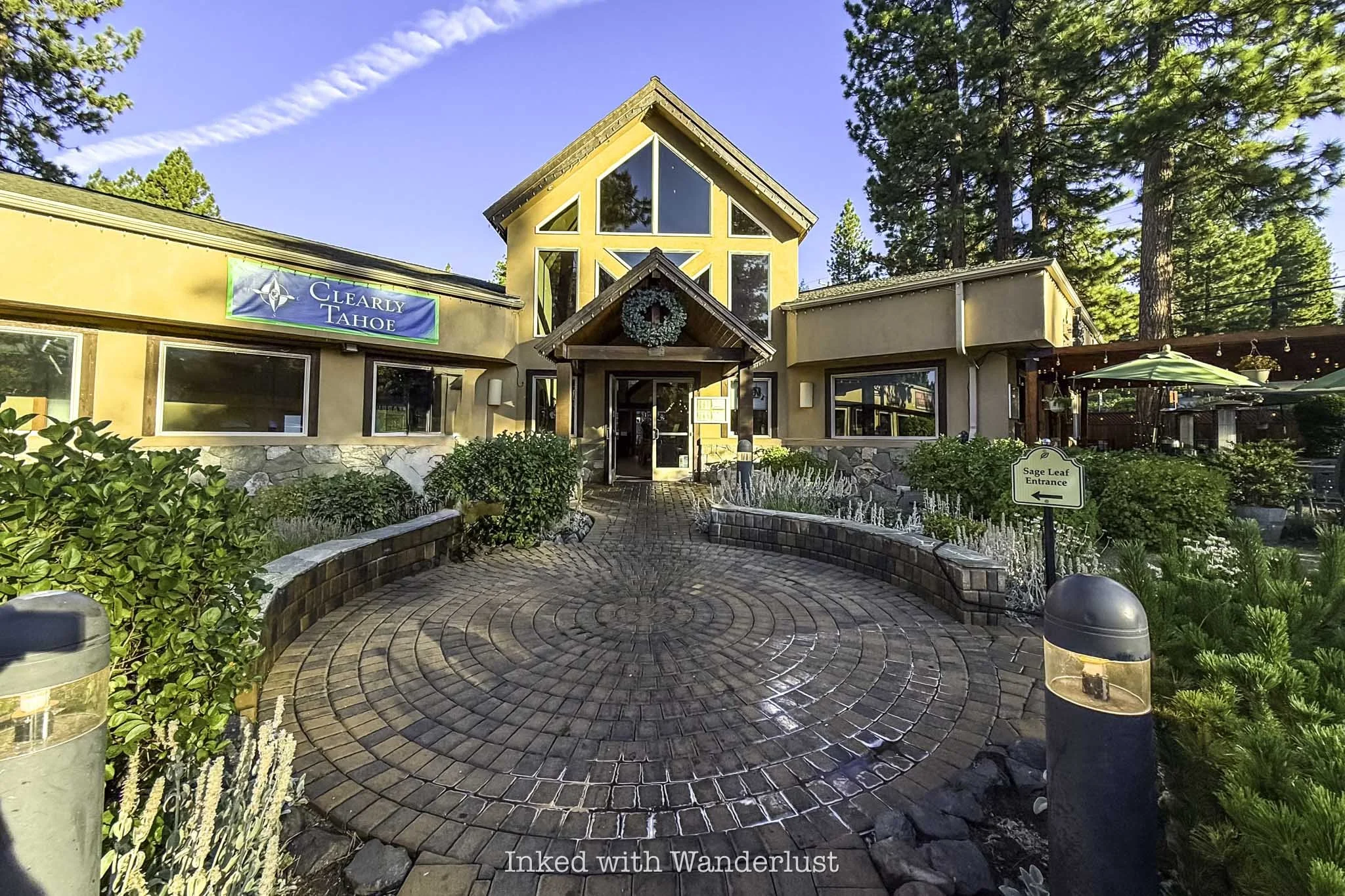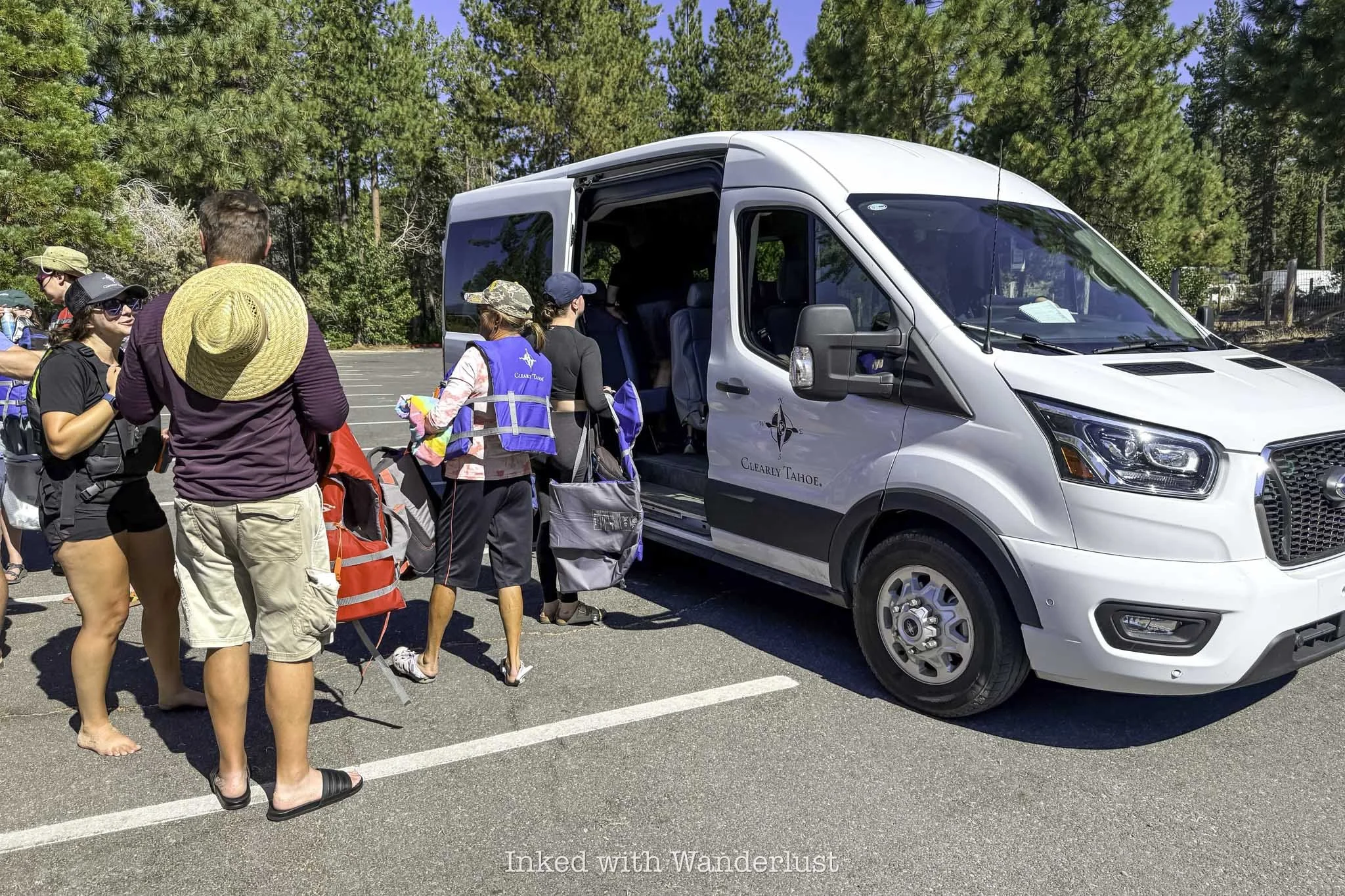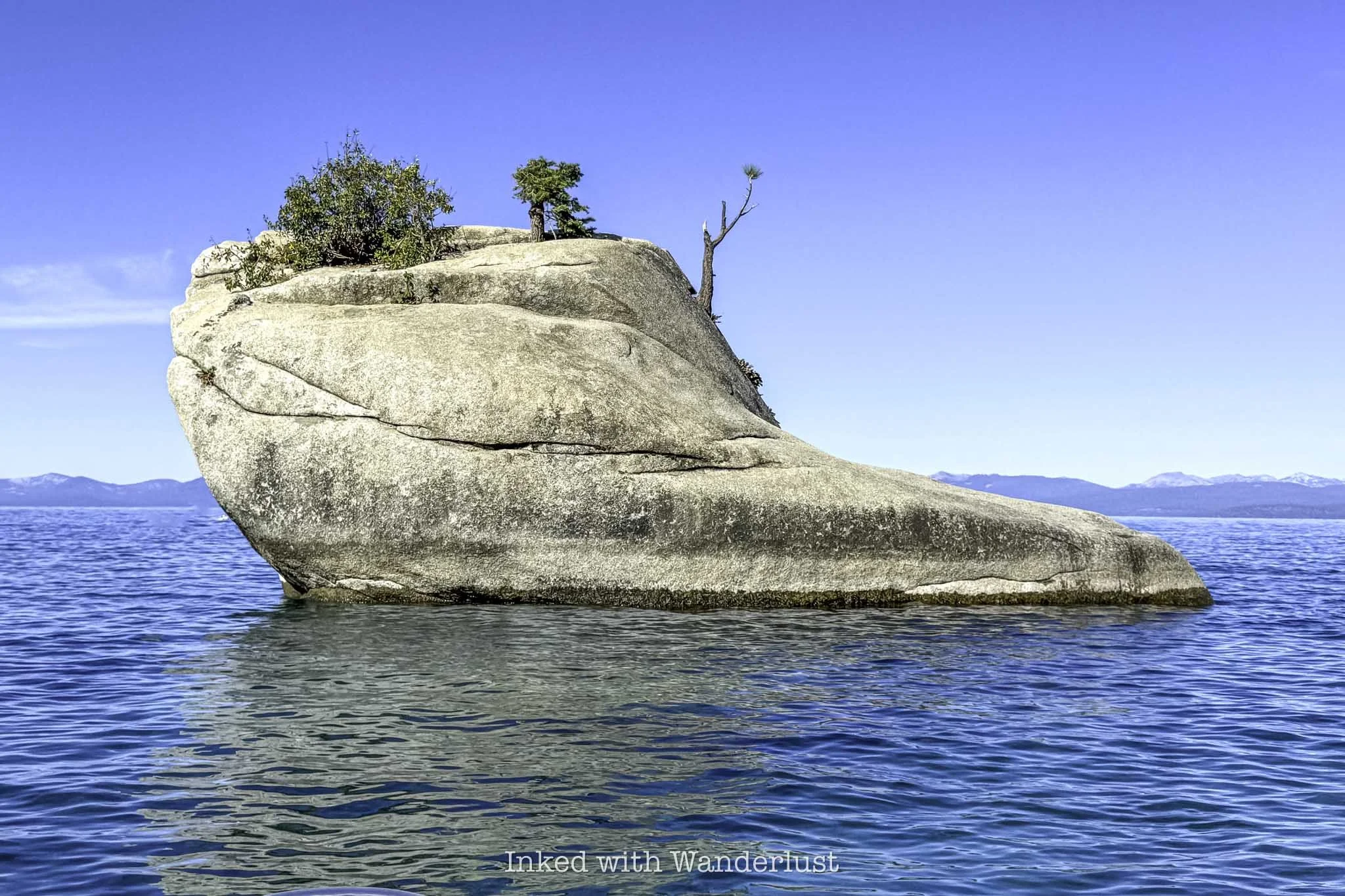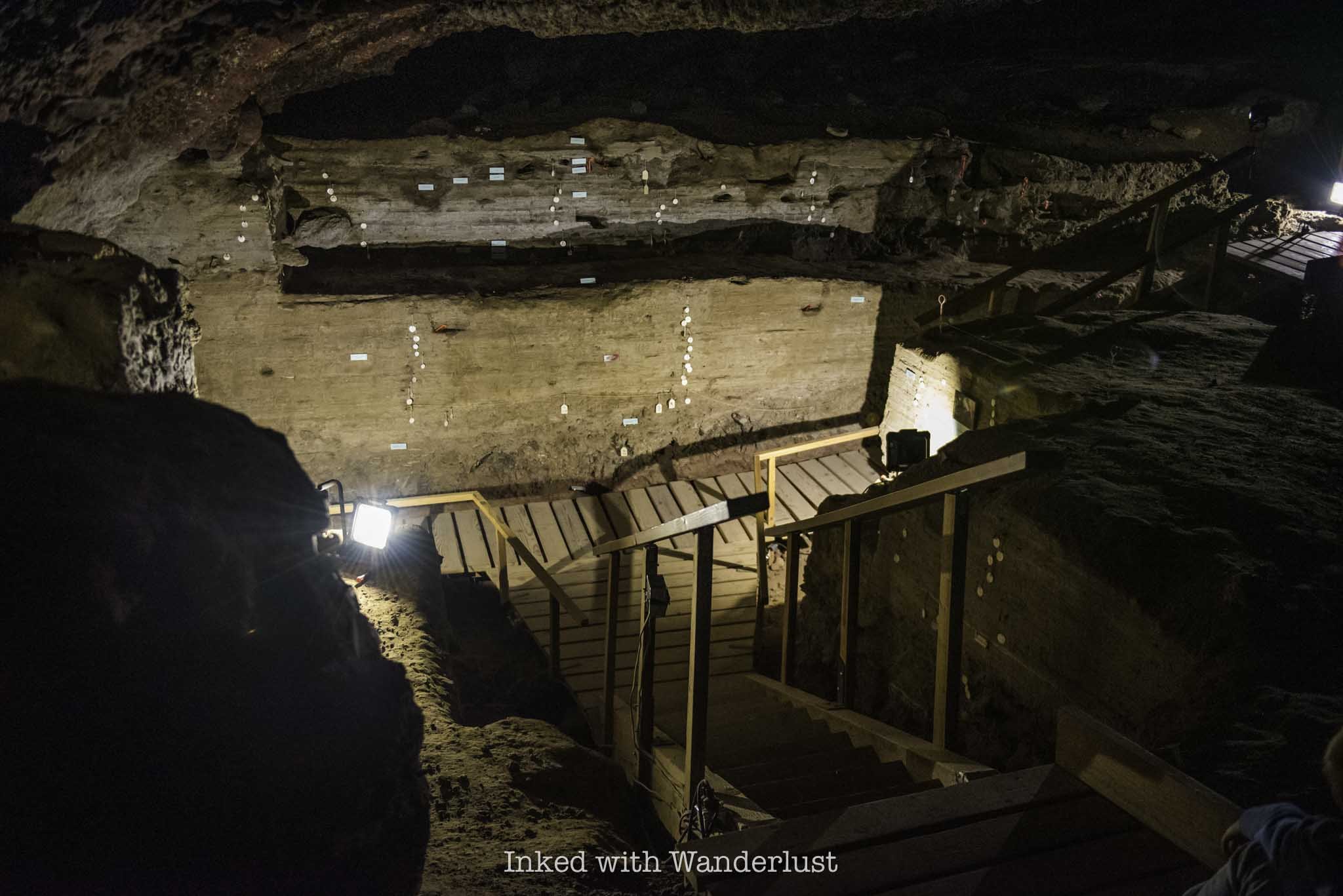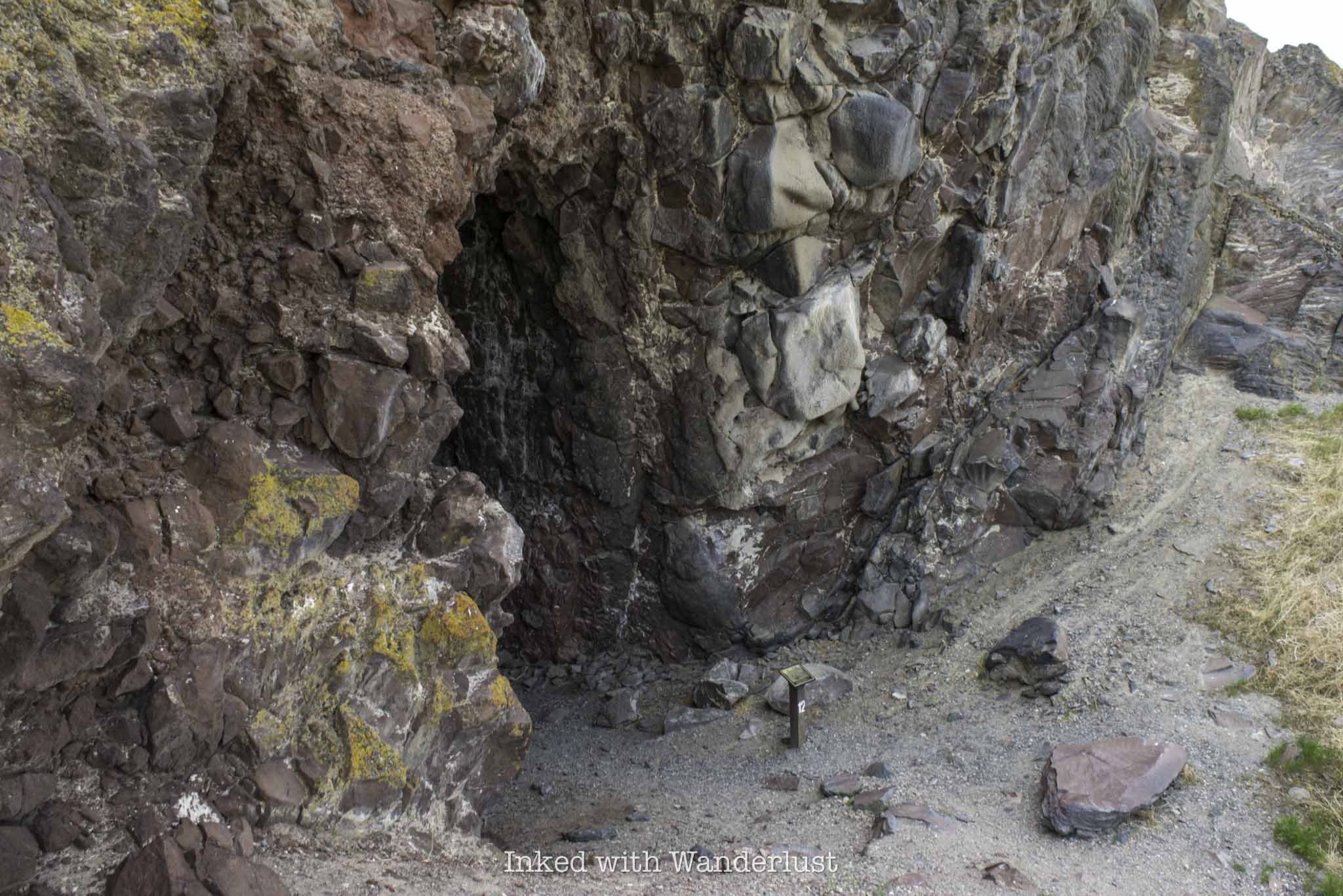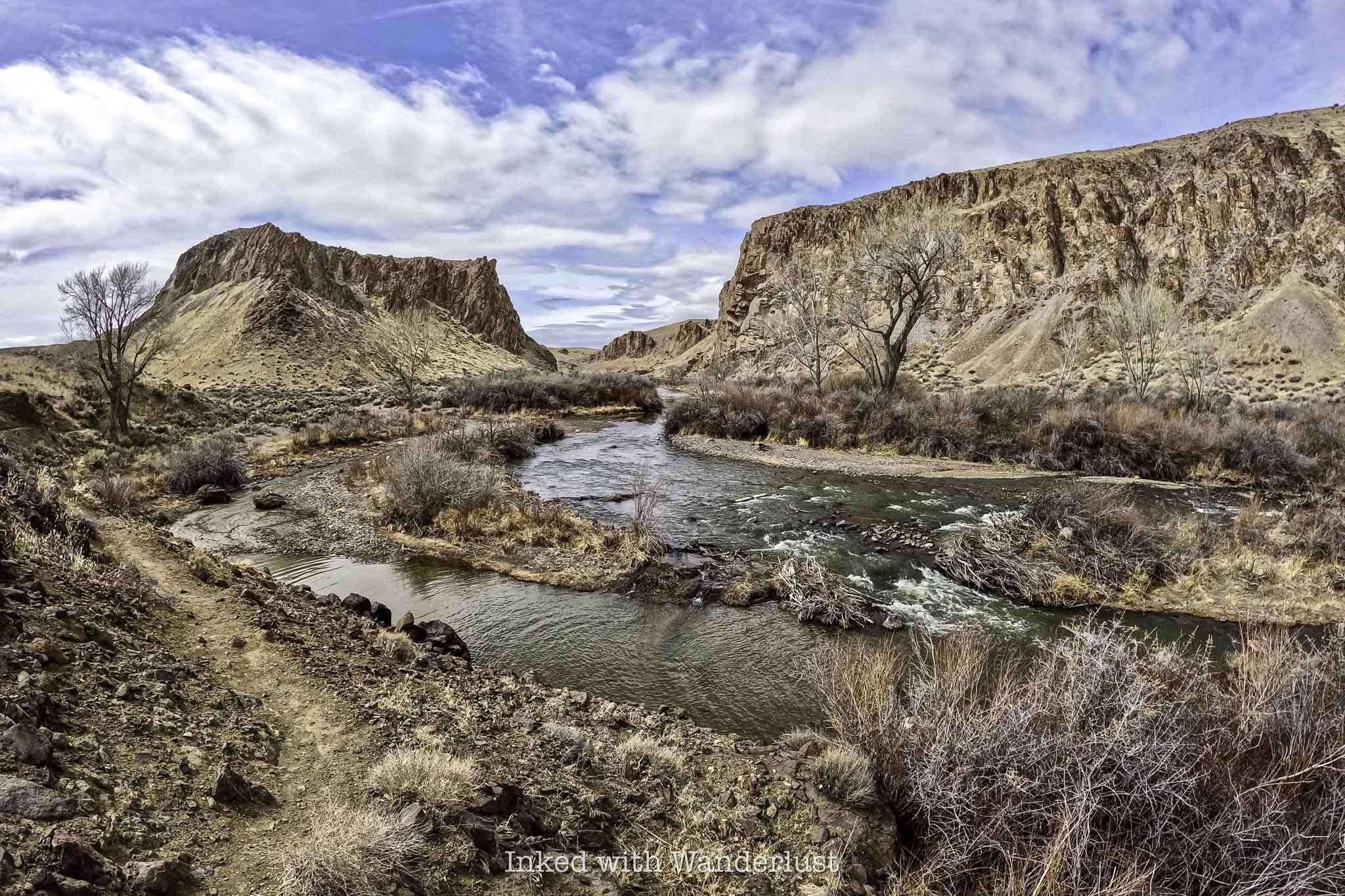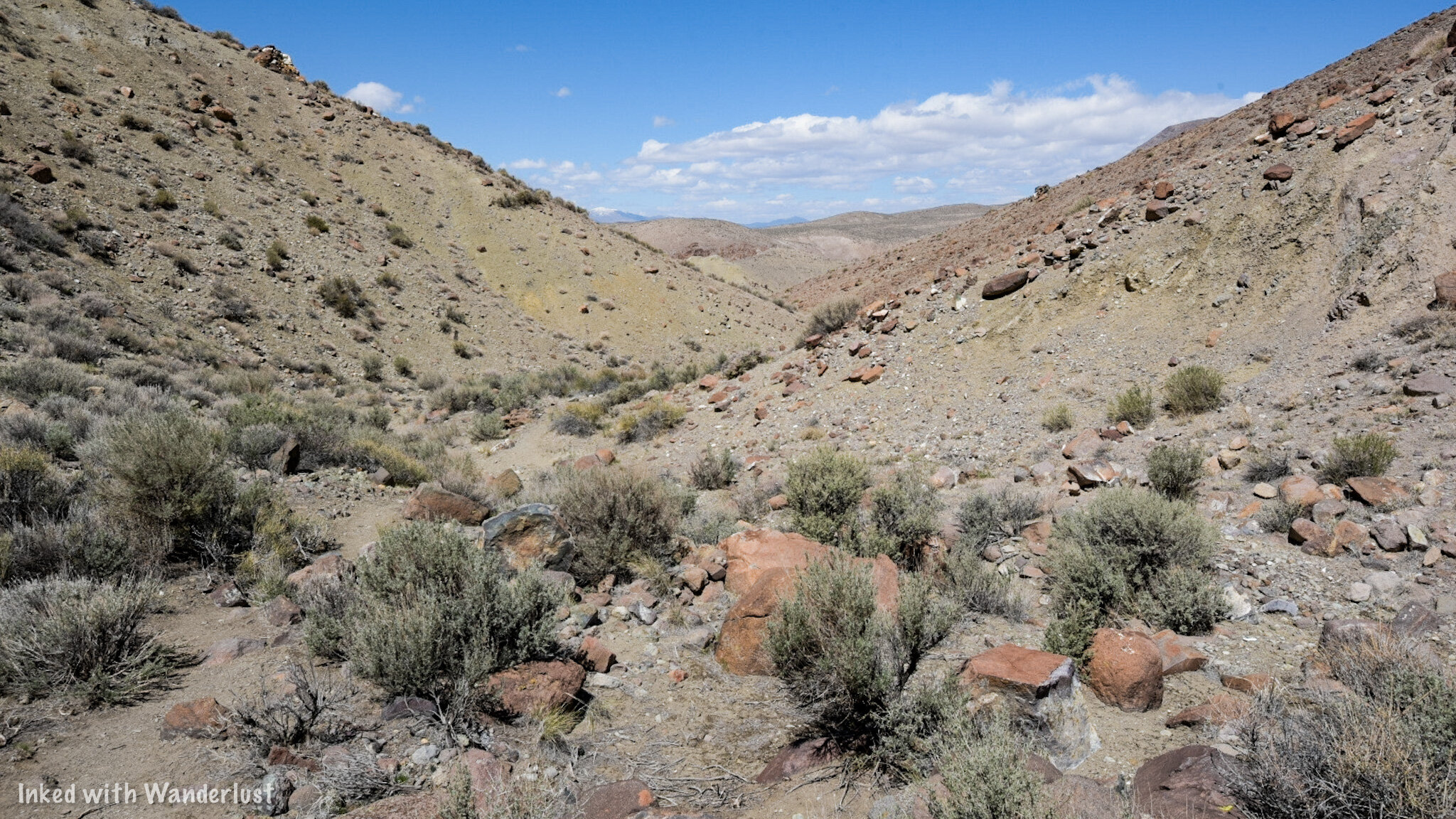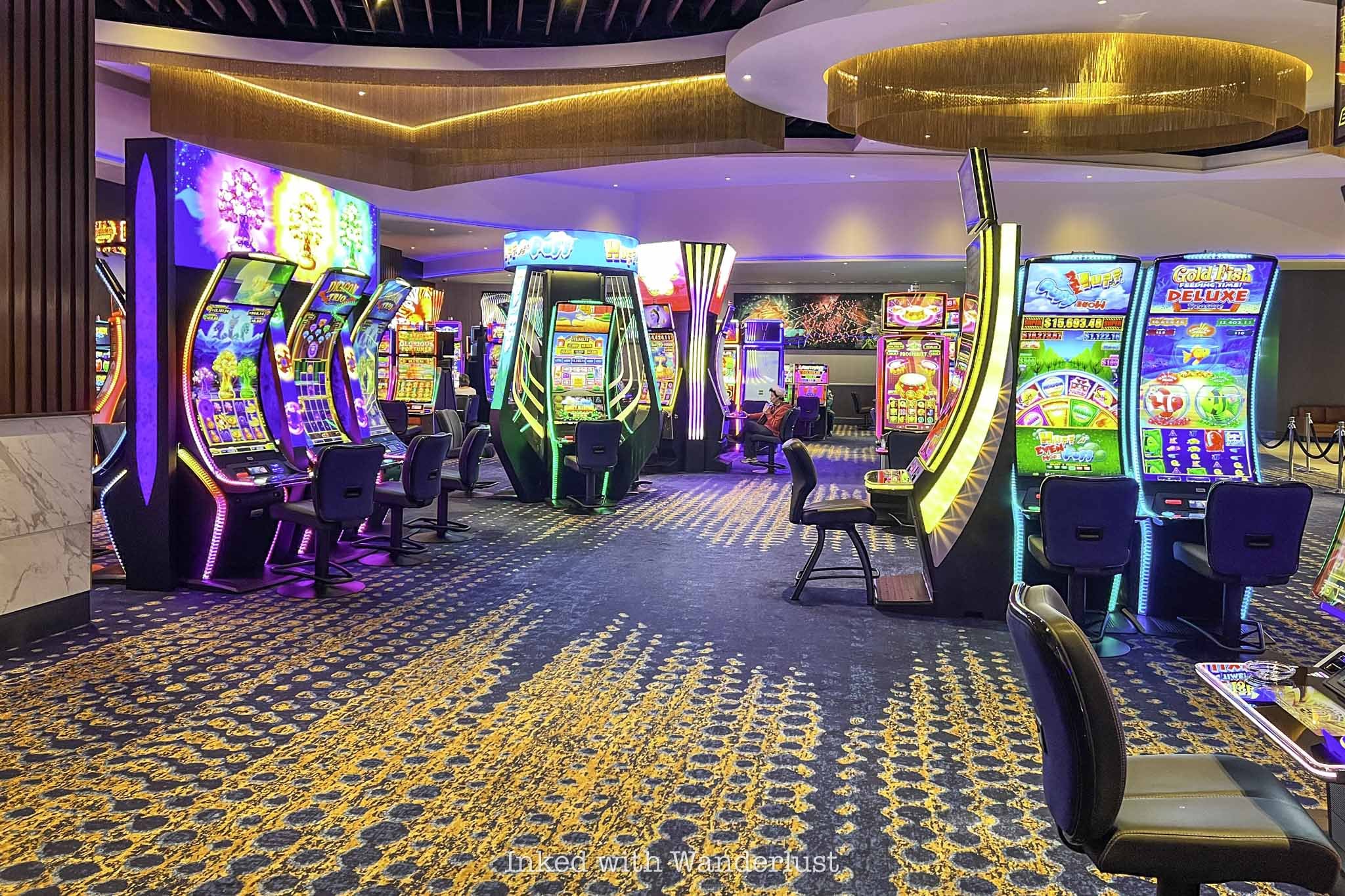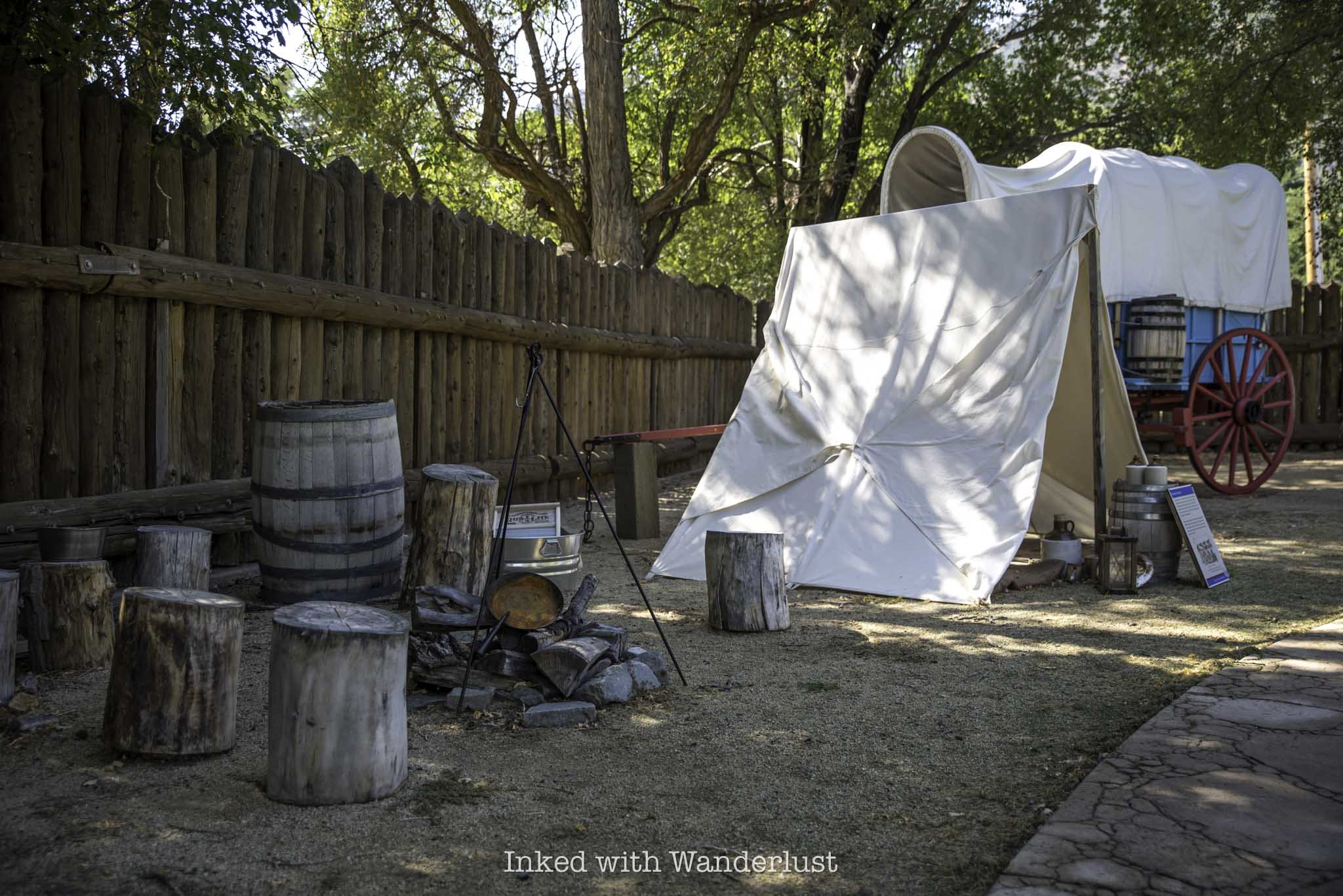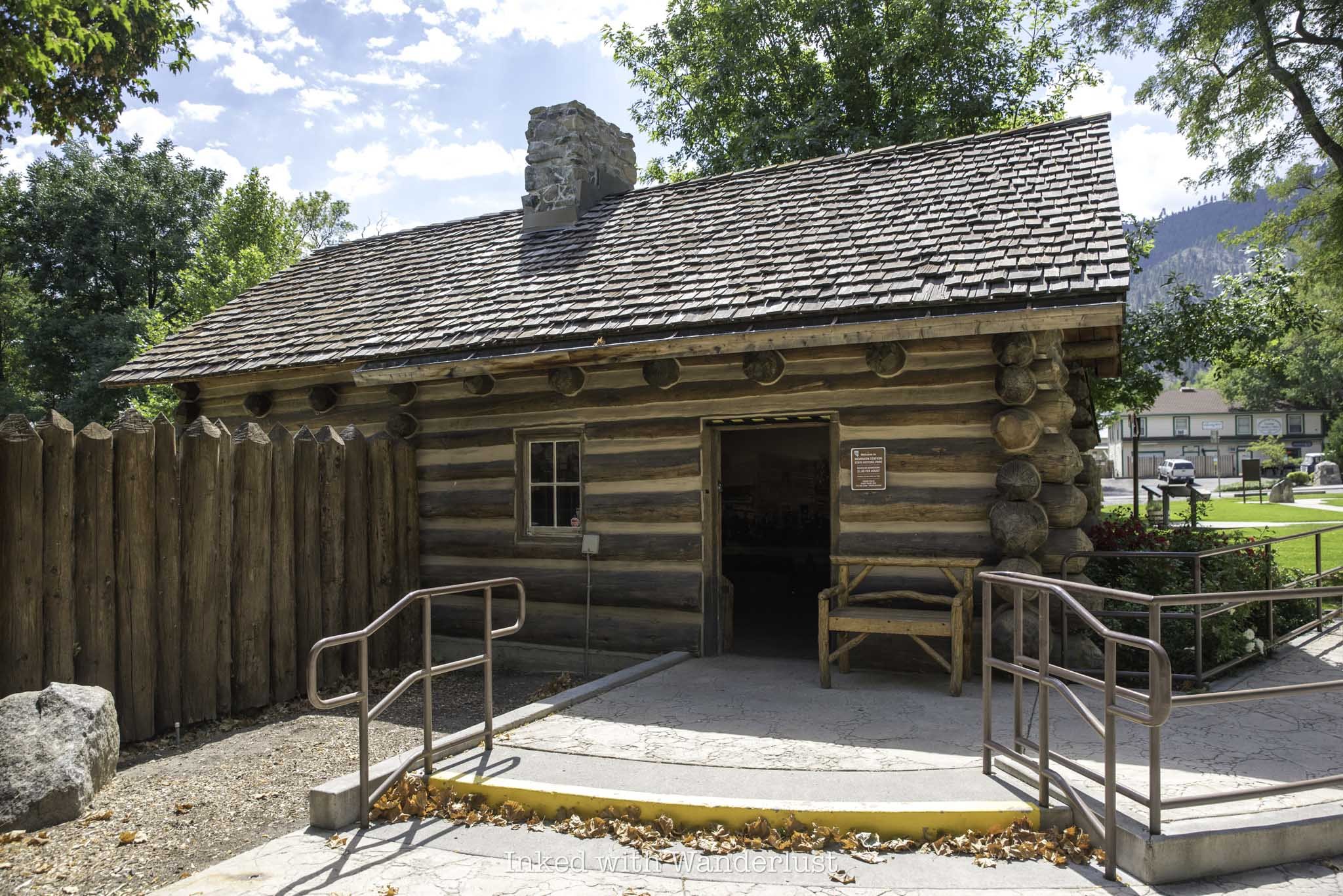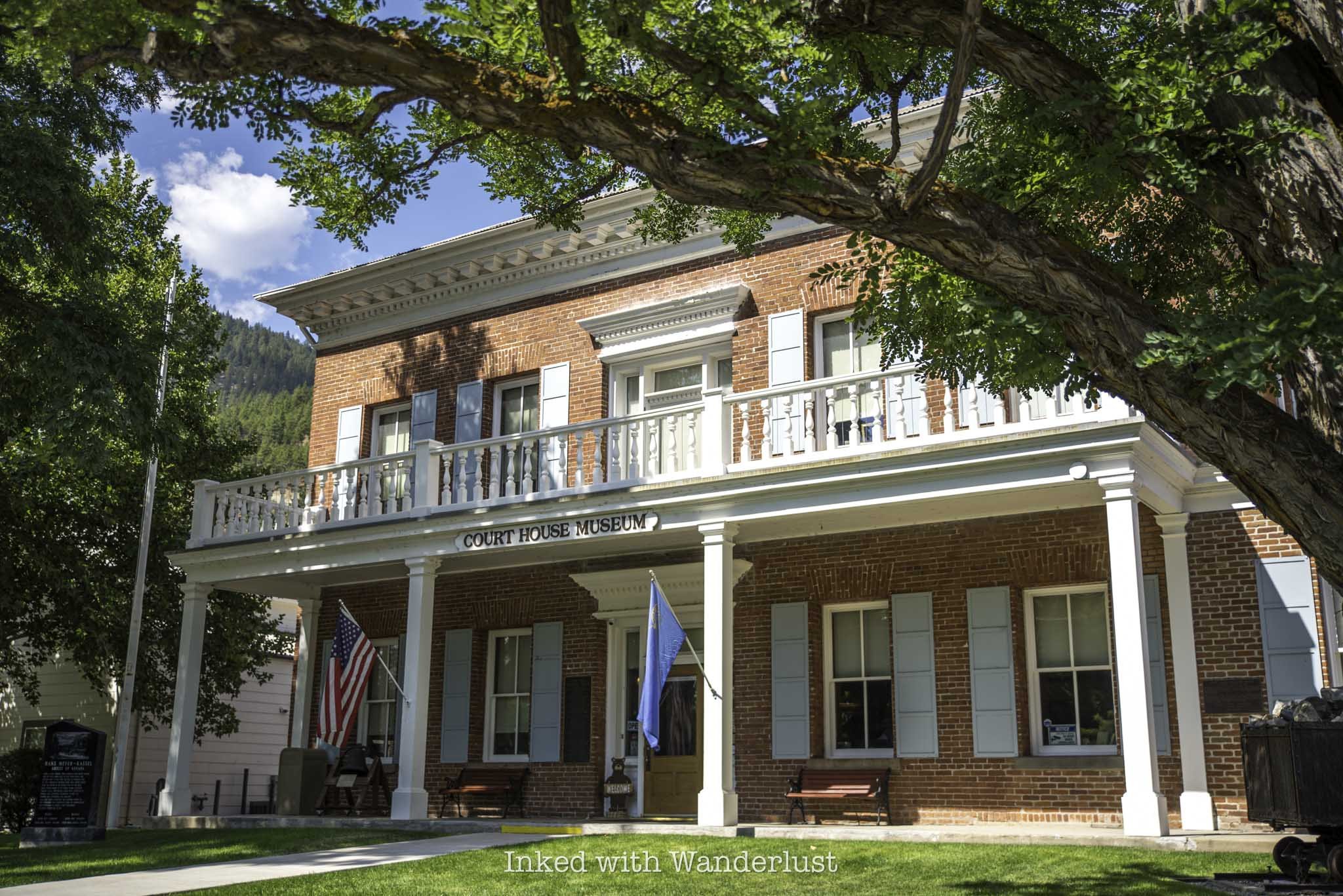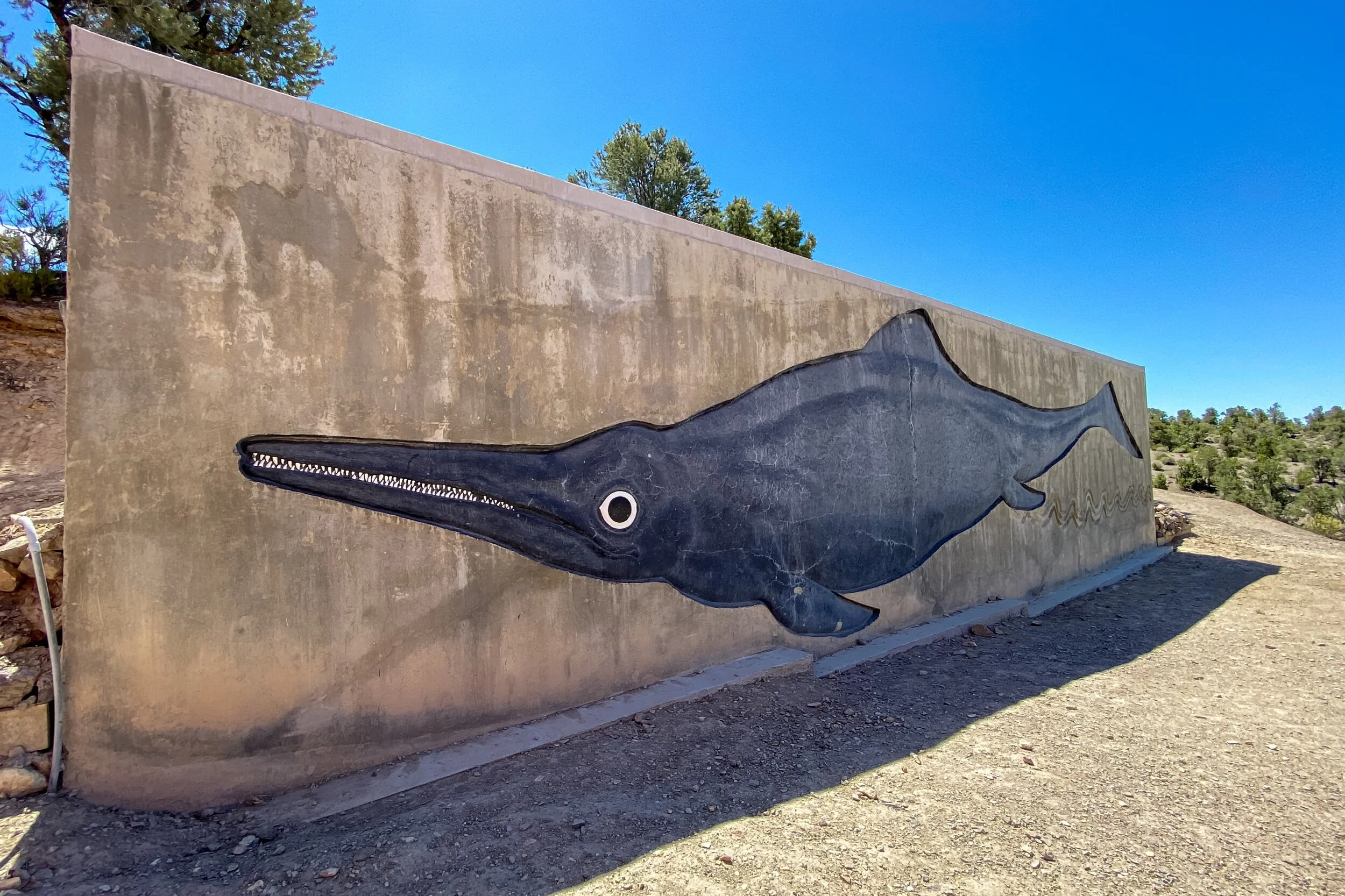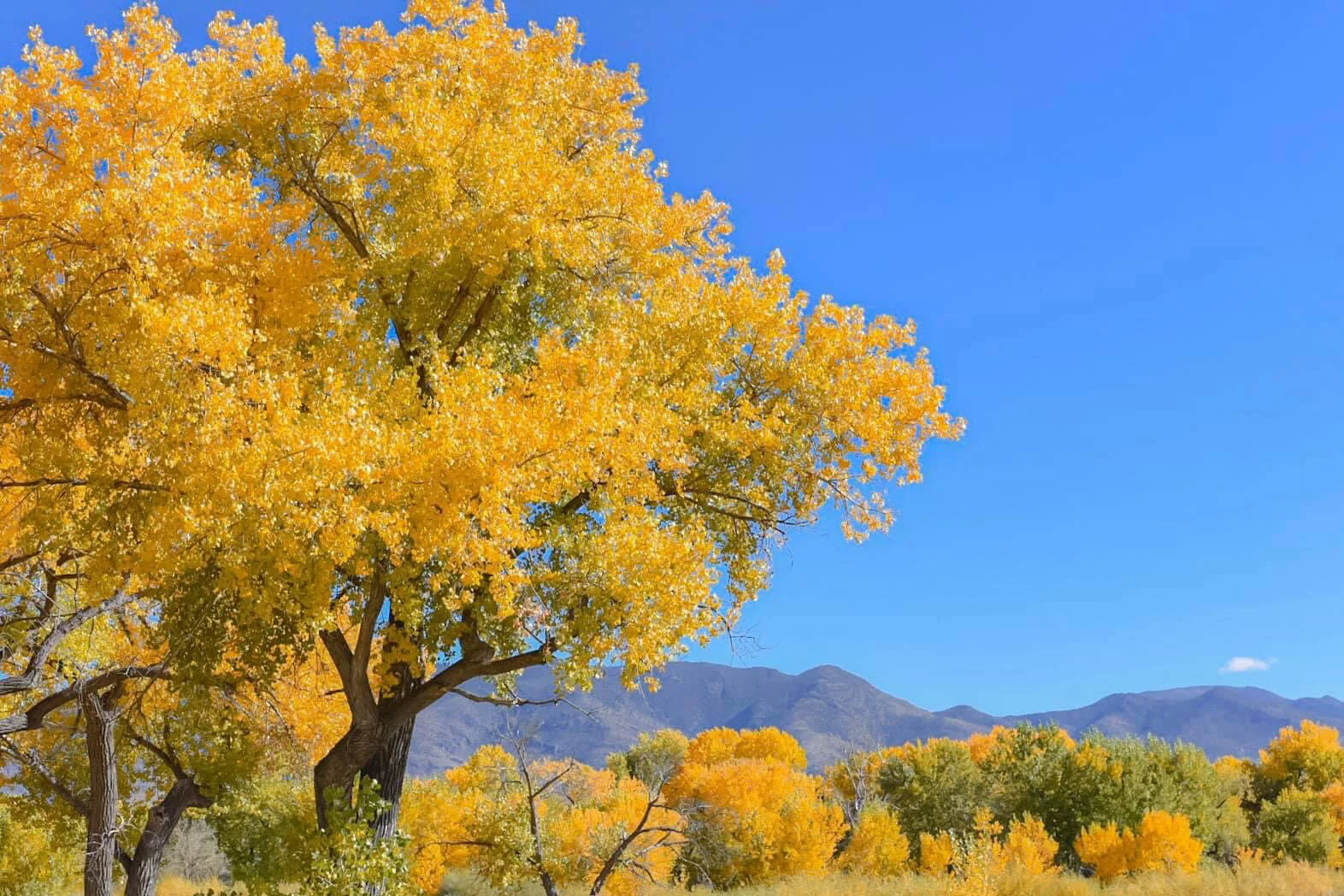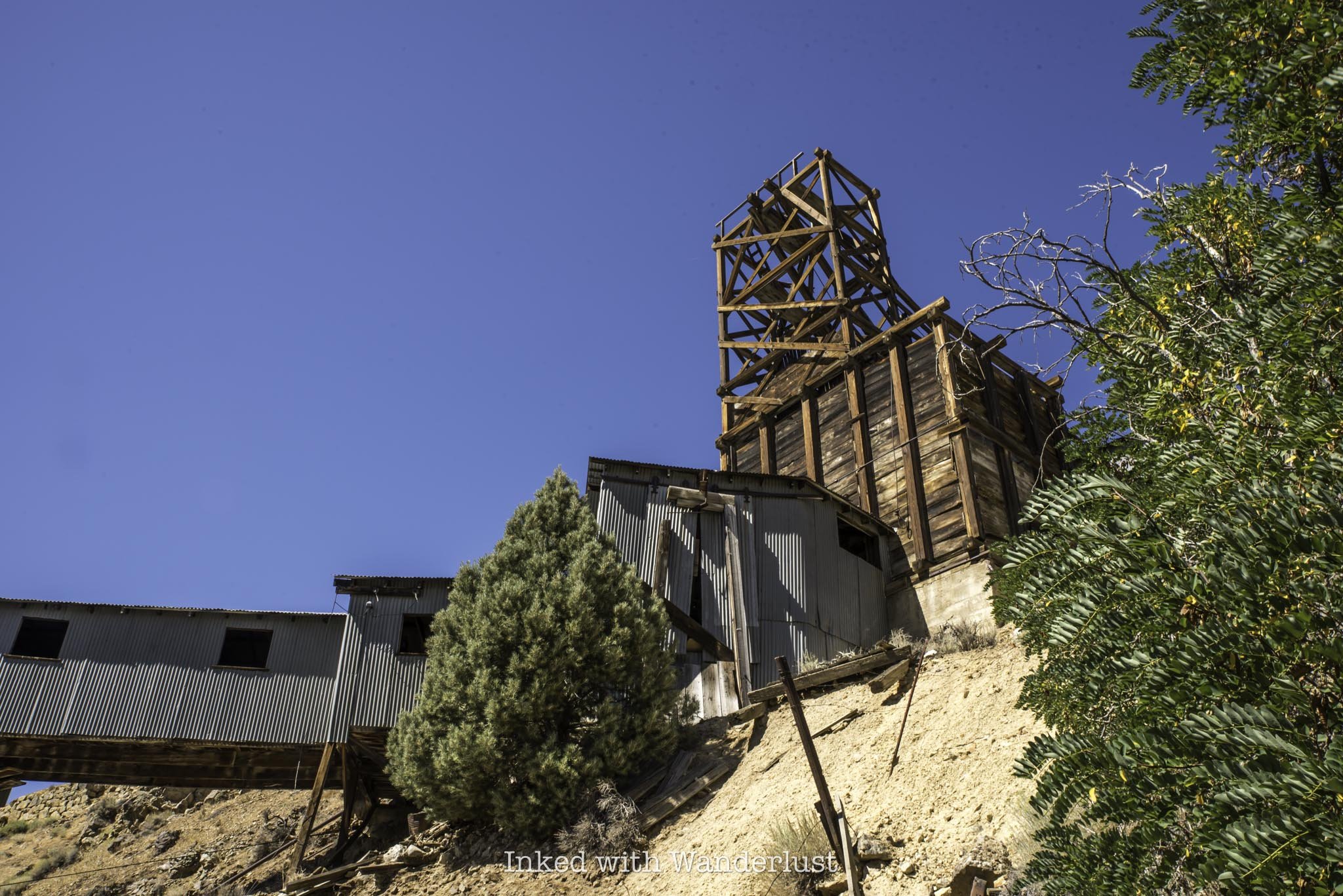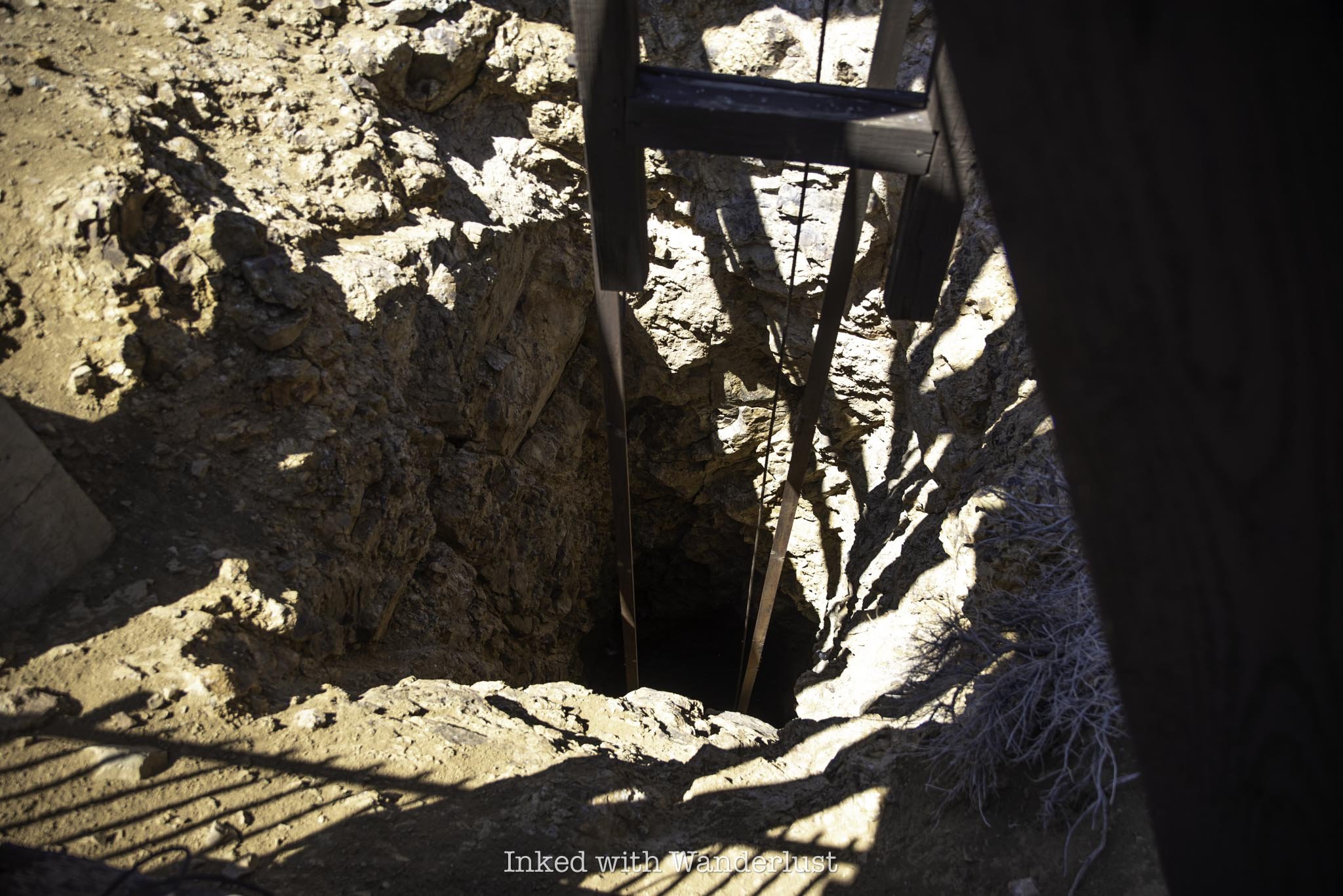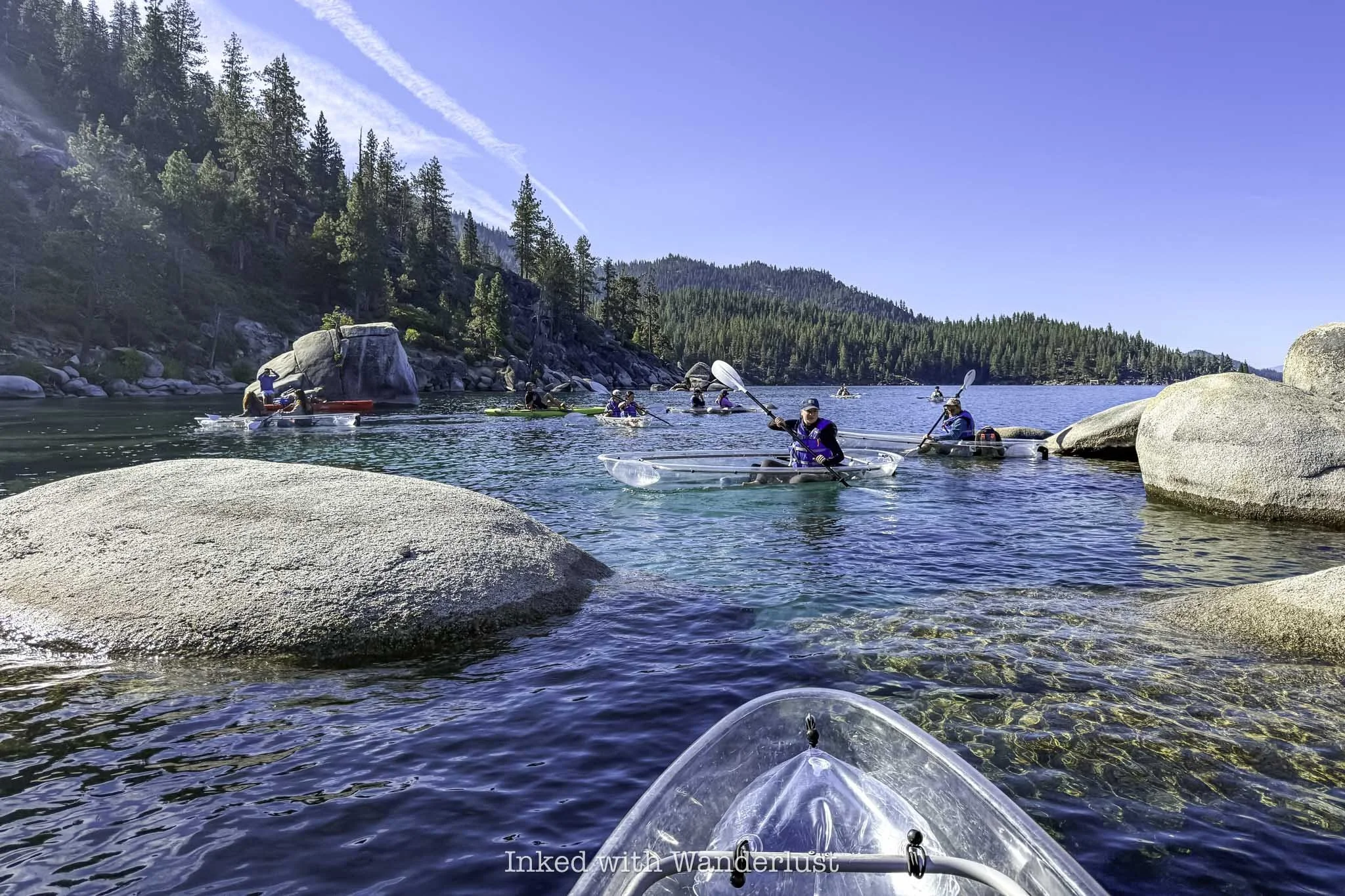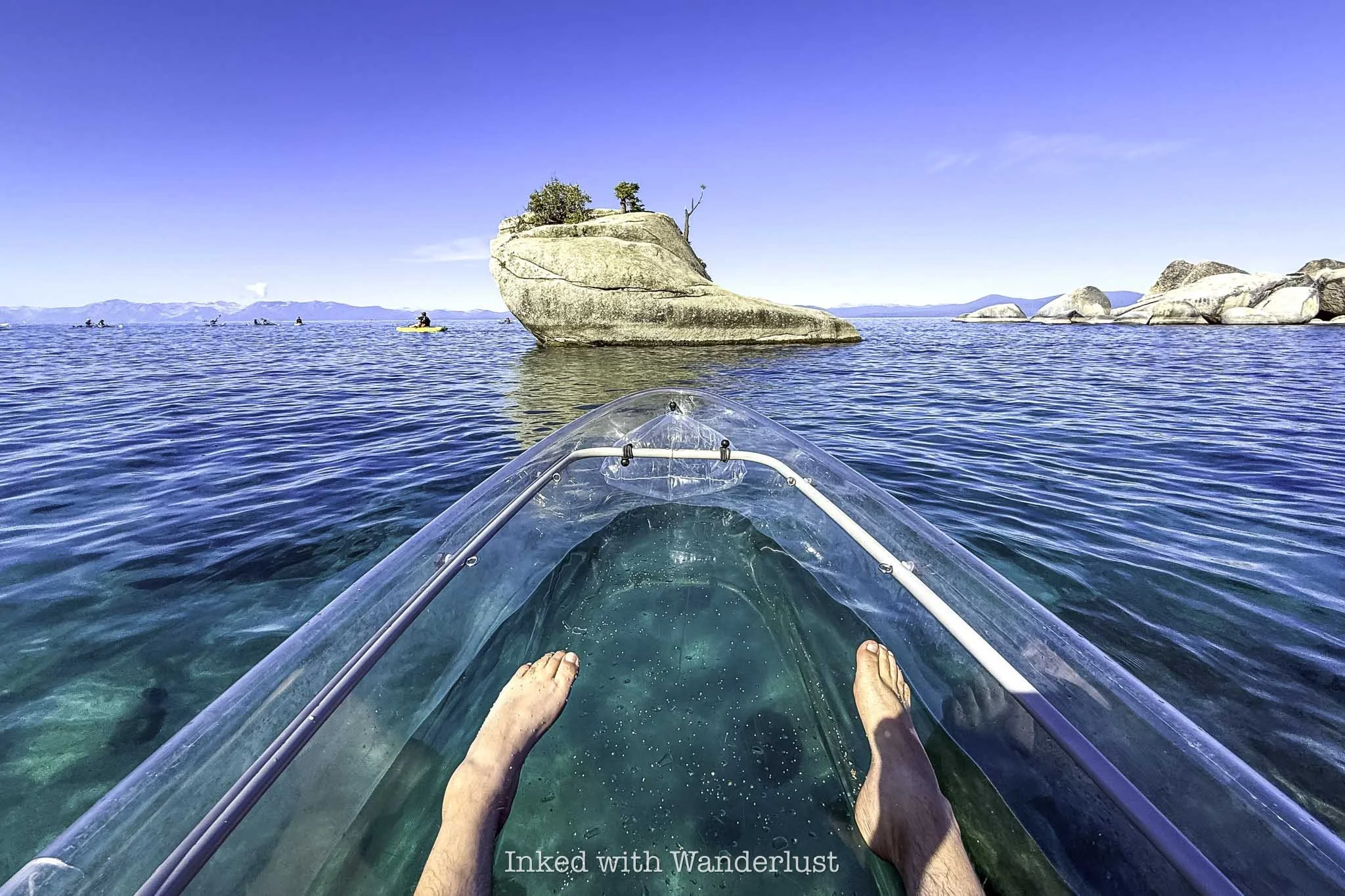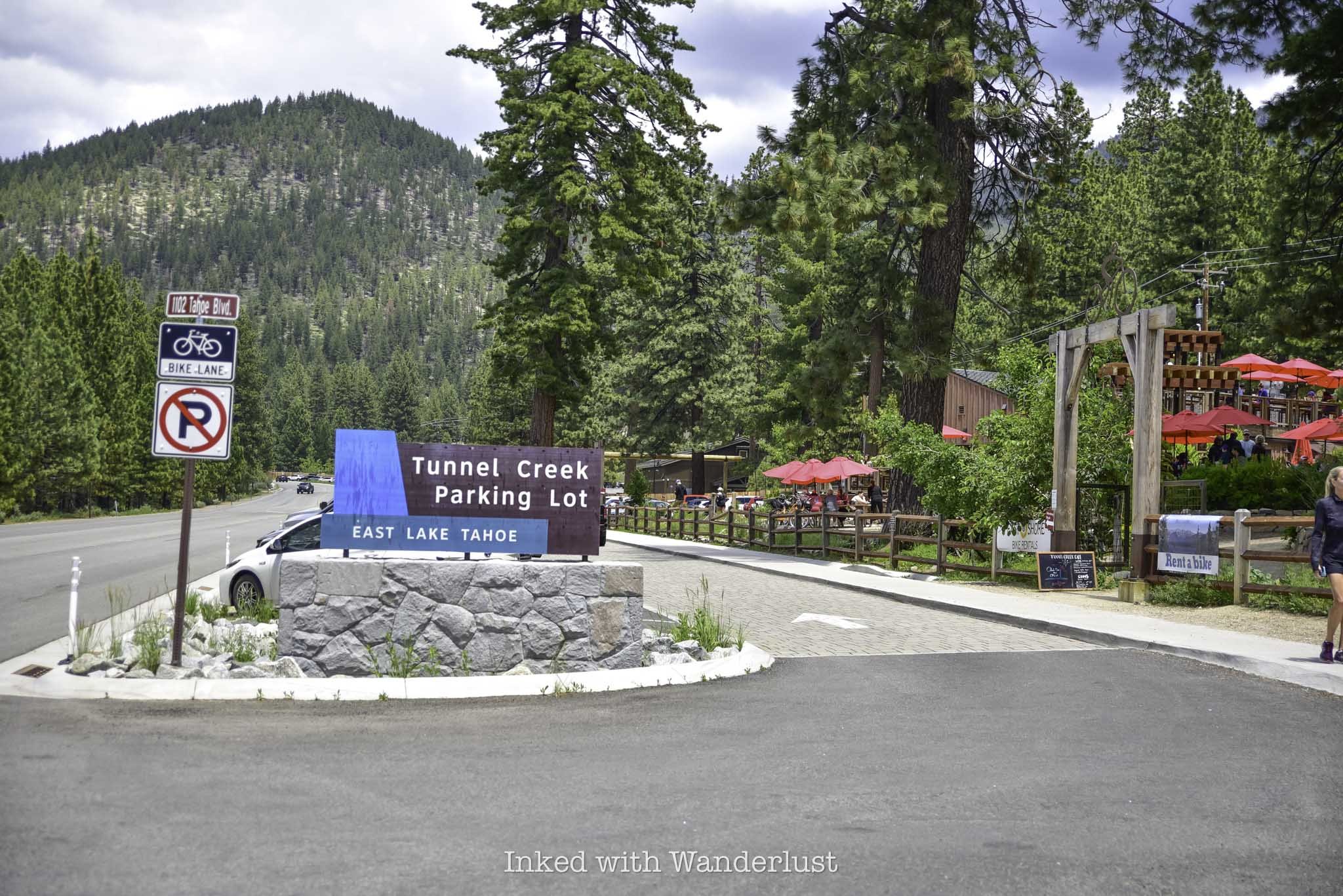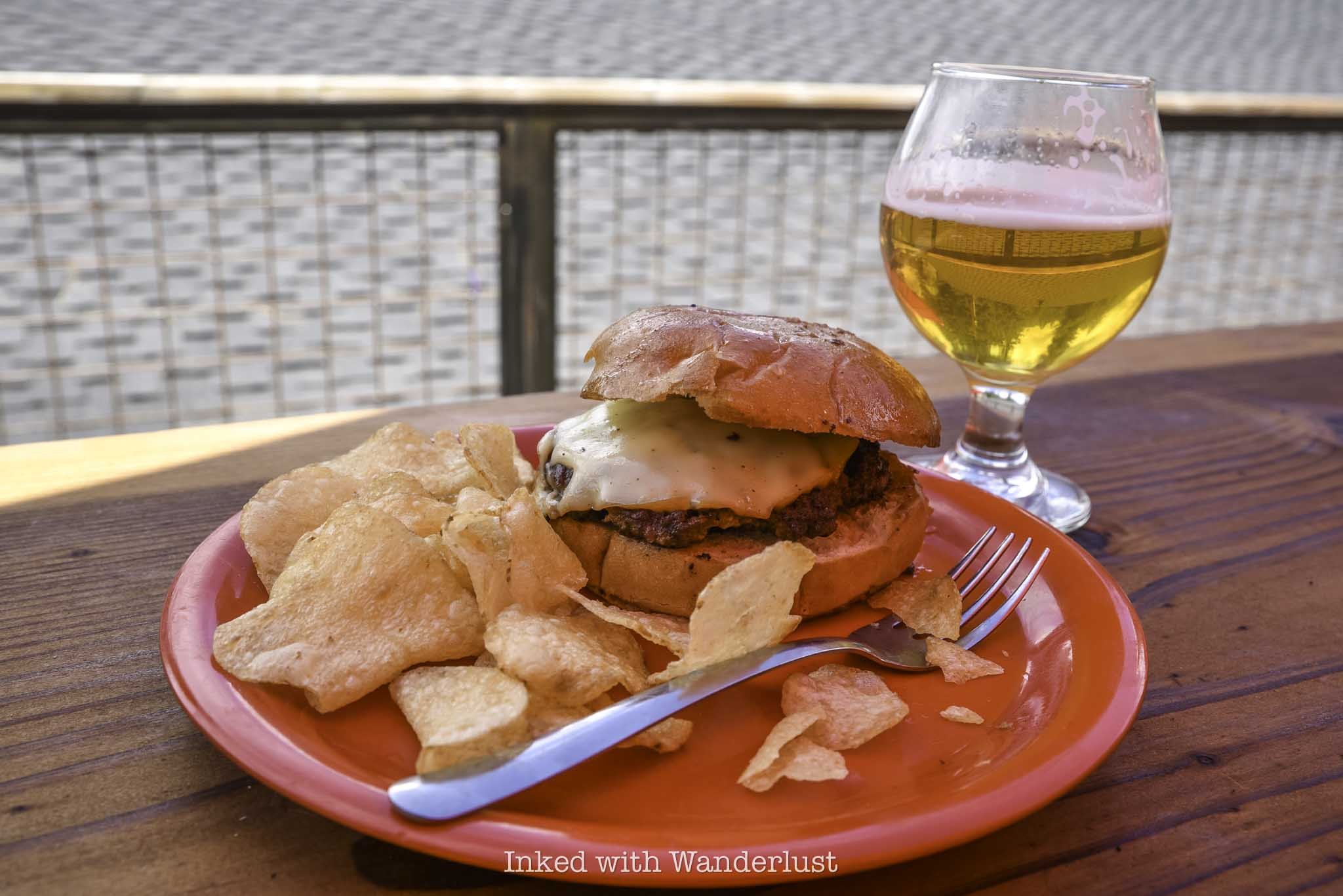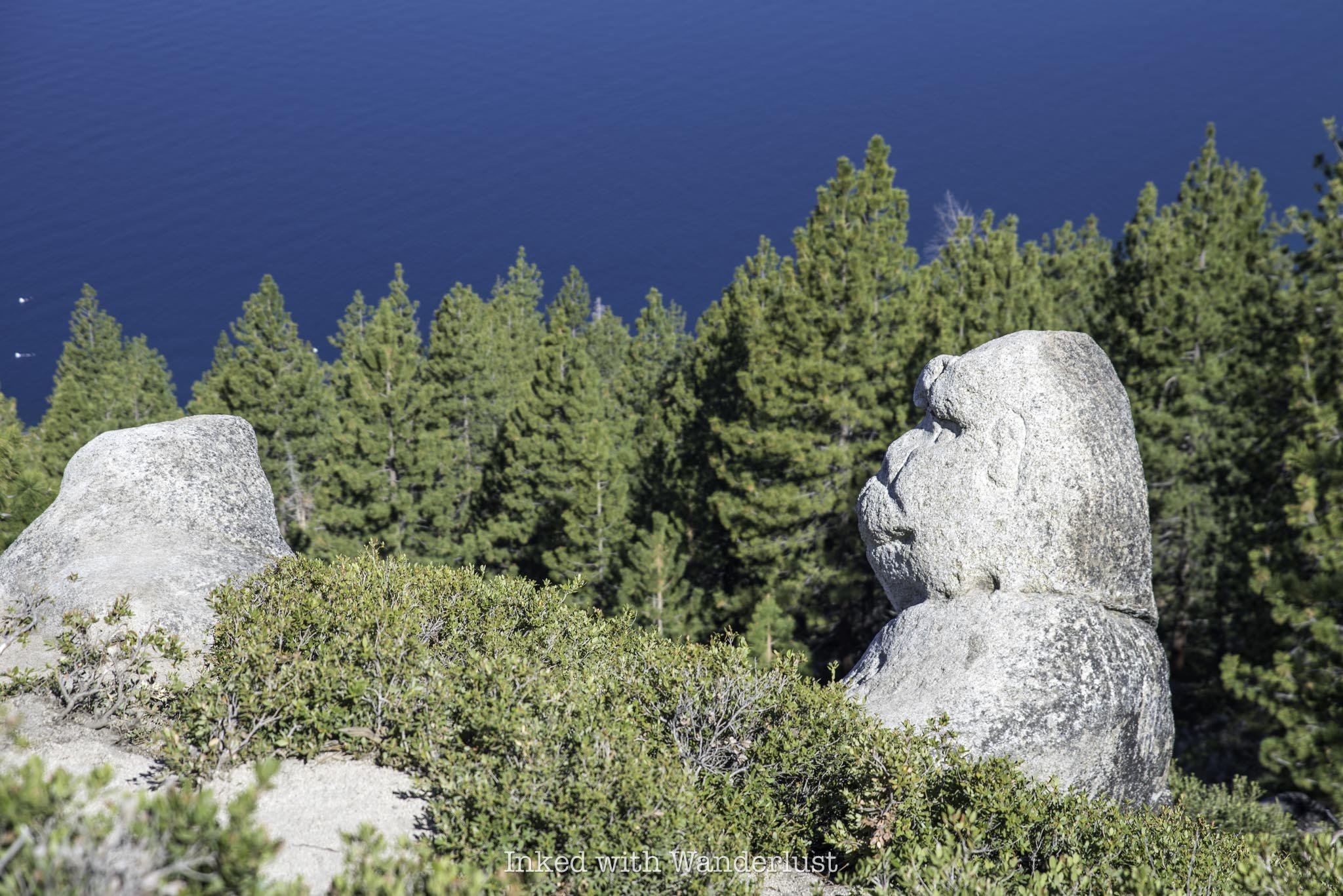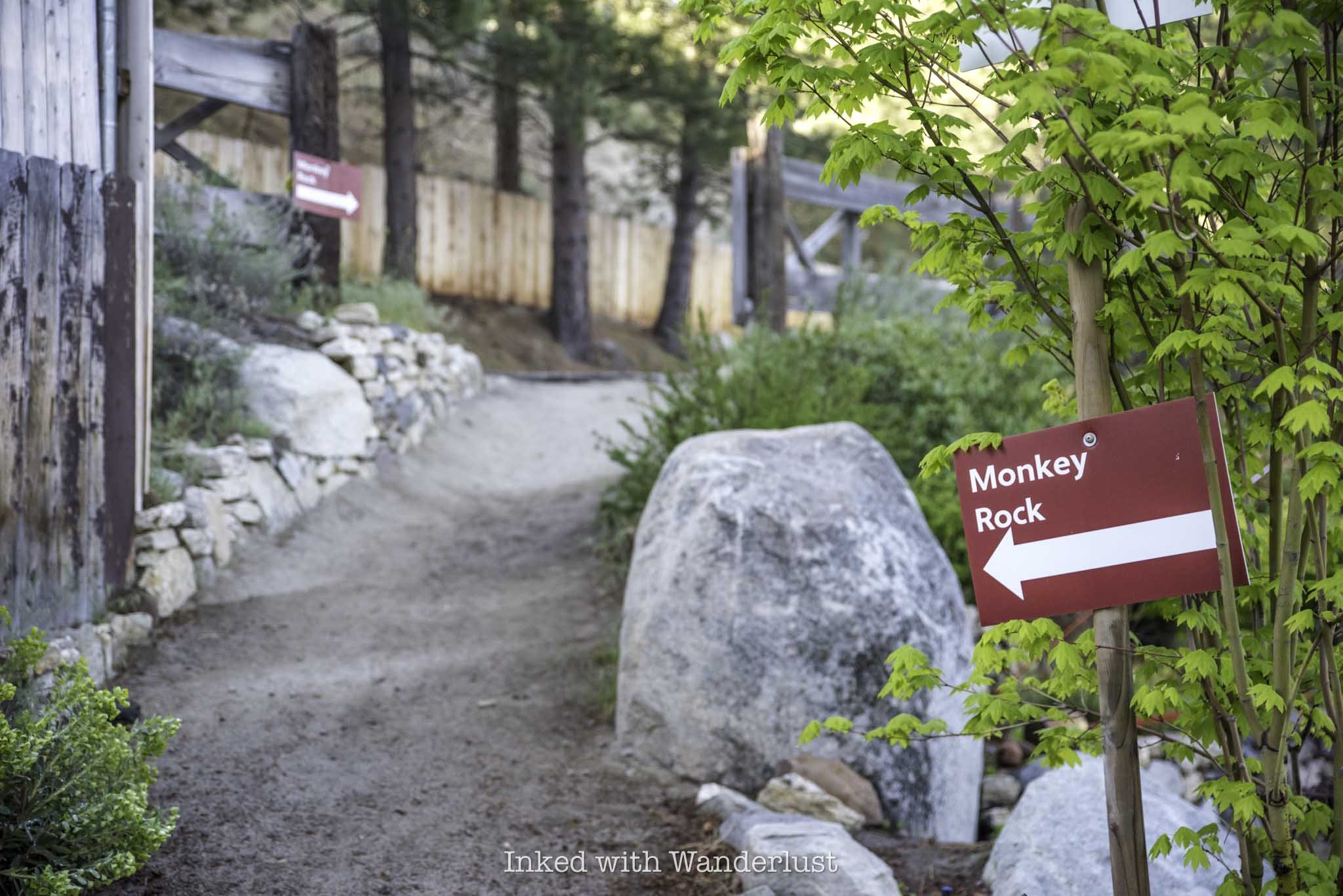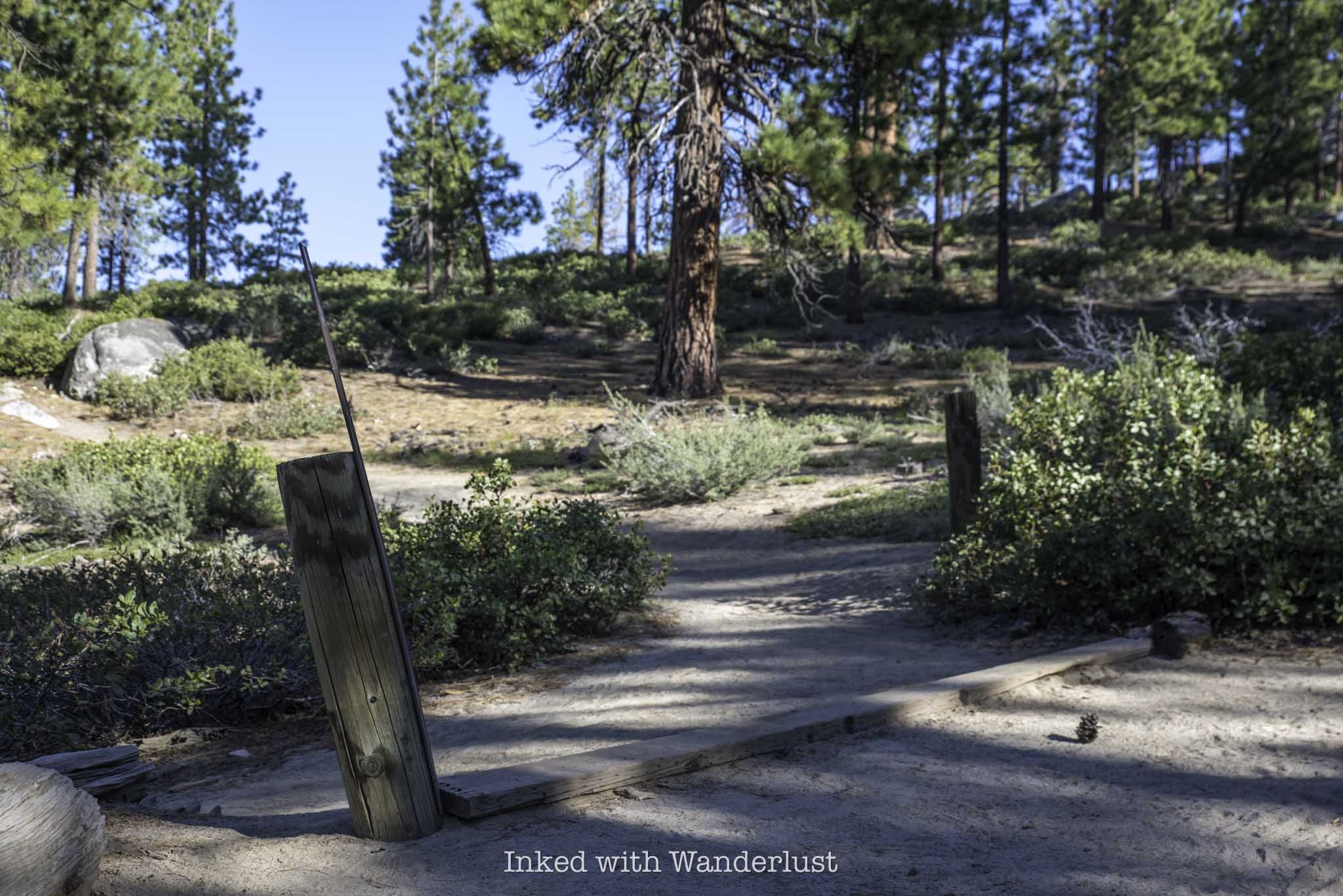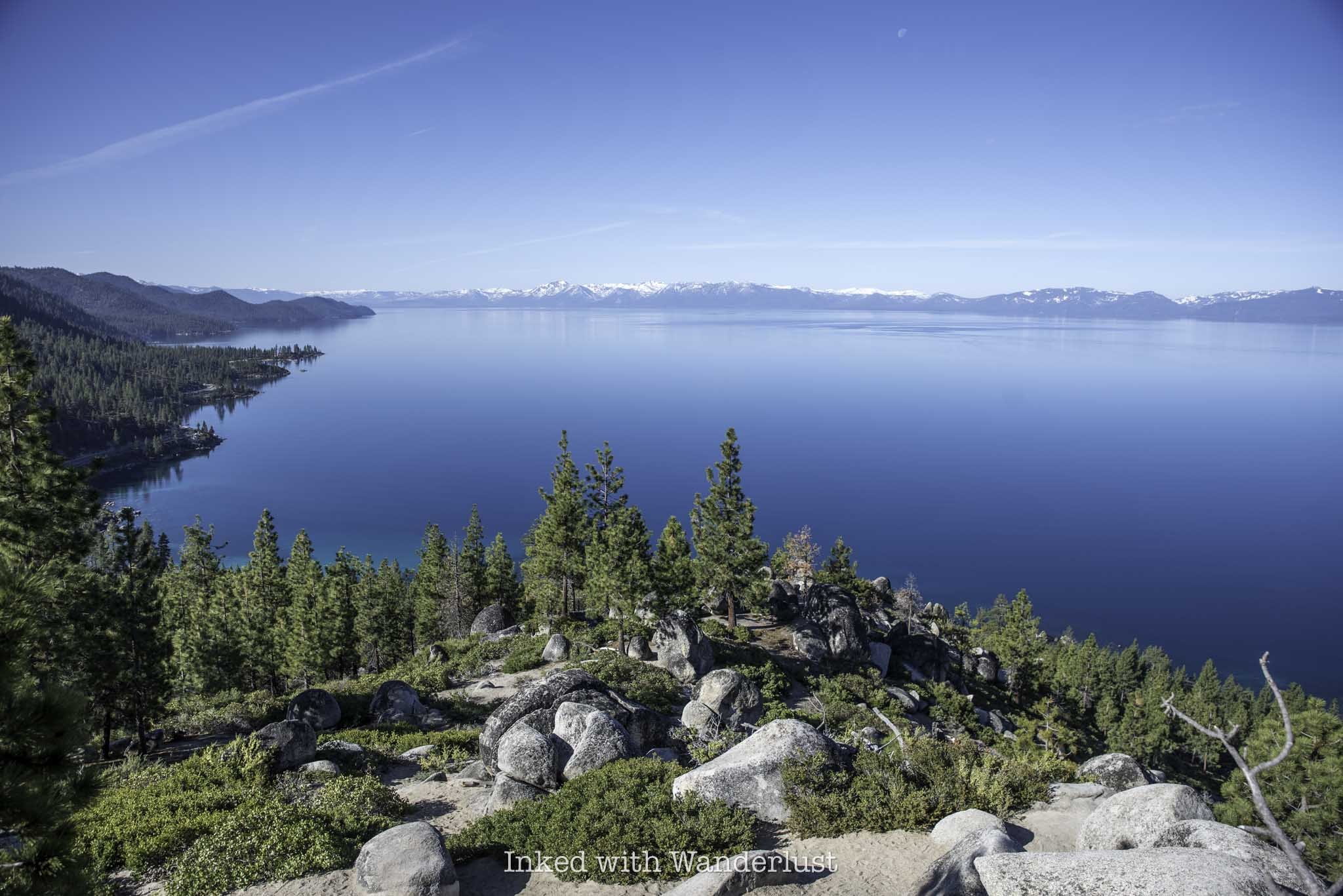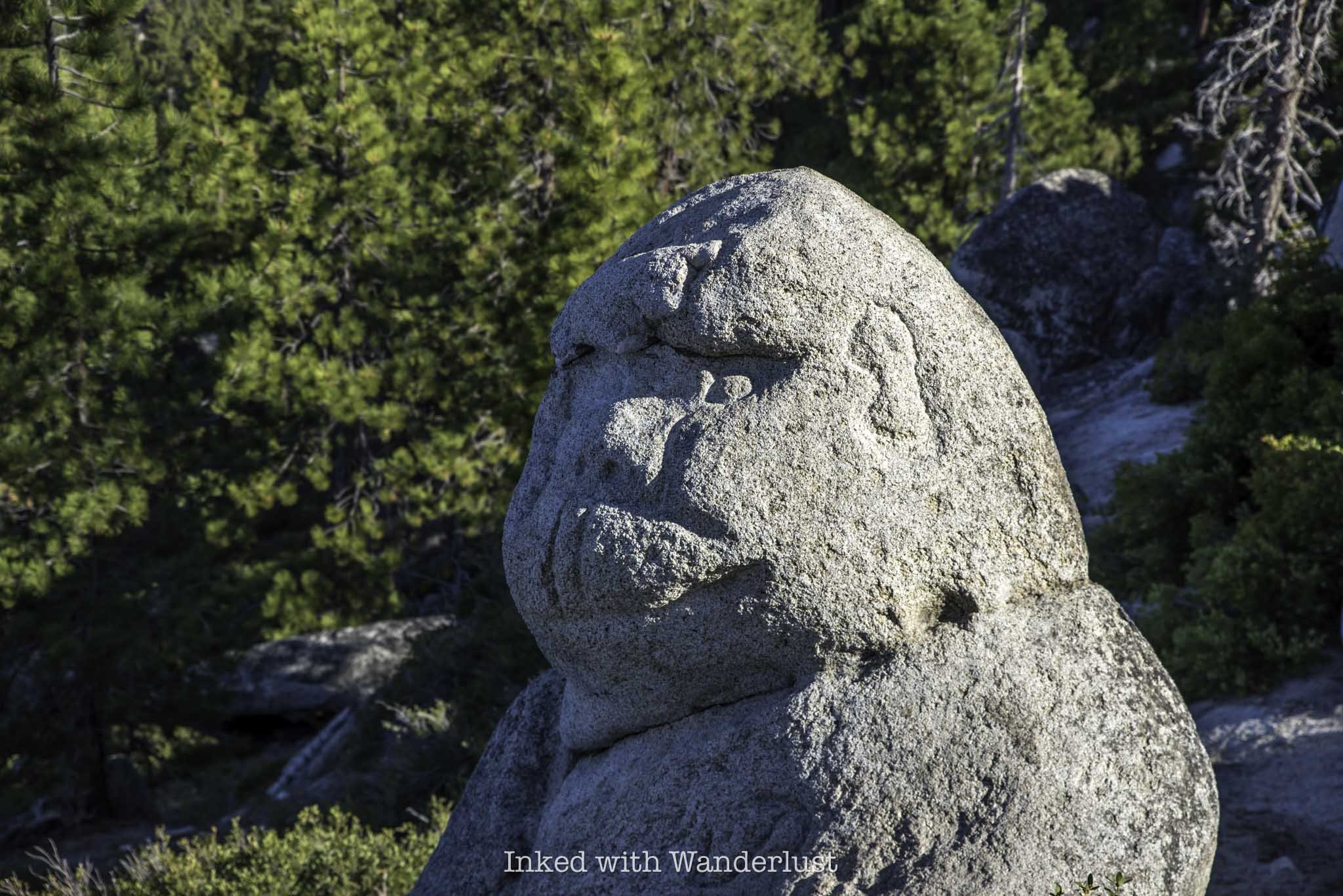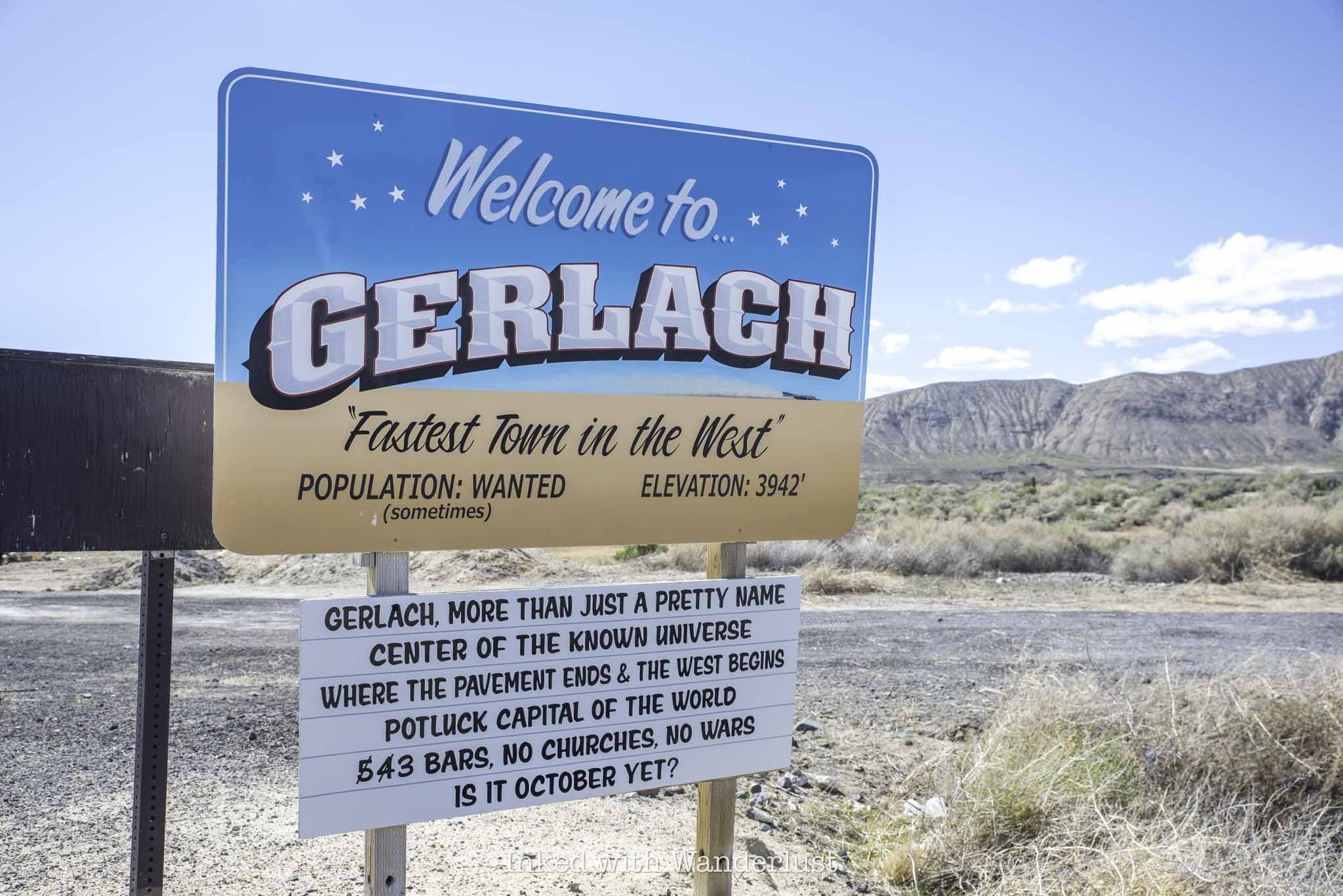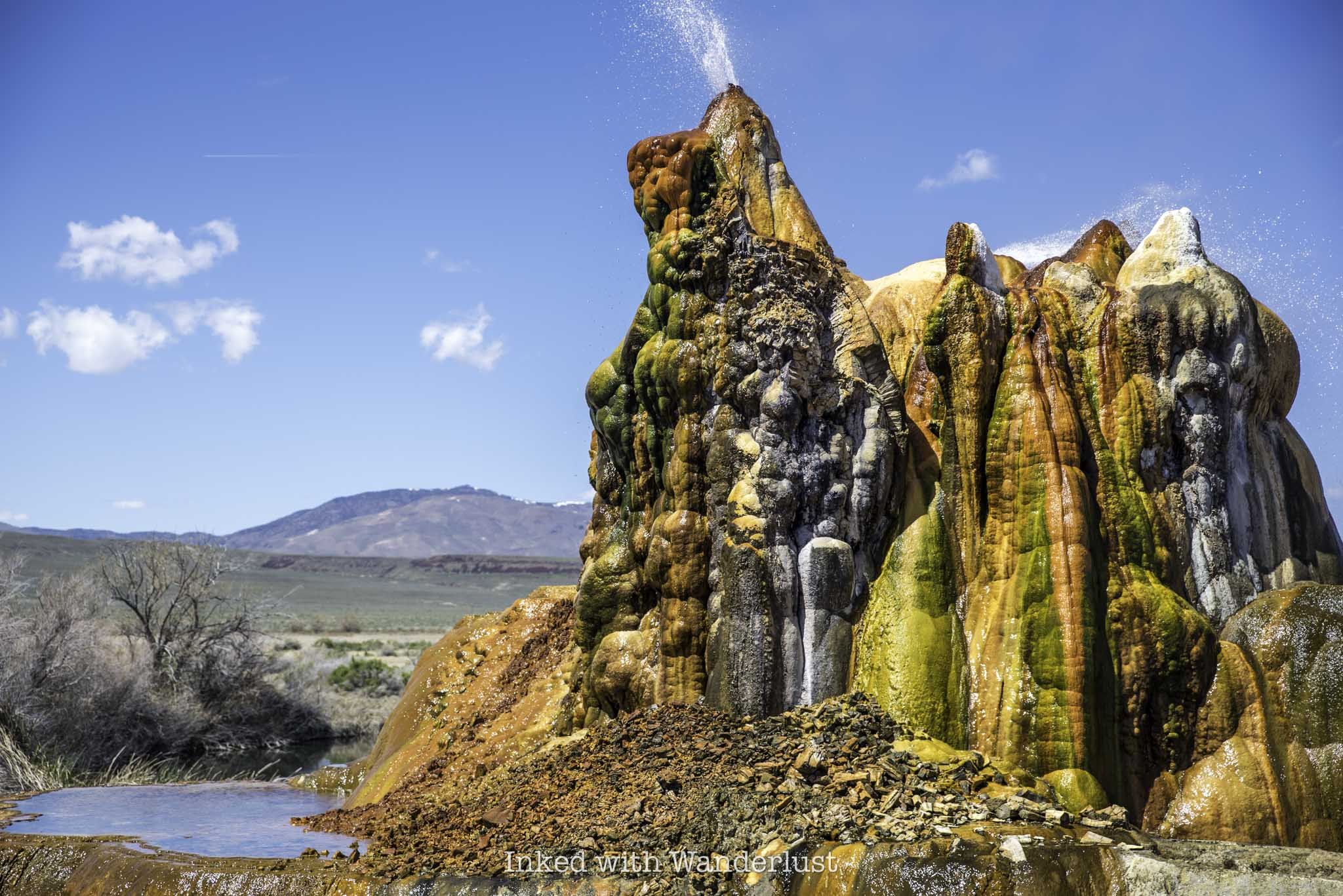6 Best Northern Nevada Pumpkin Patches and Corn Mazes (Reno, Sparks, and Beyond)
There are quite a few aspects of fall people love - cooler temperatures, beautiful gold and orange colors taking over the foliage…
Disclosure: This post contains affiliate links. If you make a purchase through these links, I may earn a small commission at no additional cost to you. I only recommend products or services that I believe will add value to my readers.
There are quite a few aspects of fall people love - cooler temperatures, beautiful gold and orange colors taking over the foliage, and pumpkin spiced-flavored everything, to name a few. The biggest, however, seem to be pumpkin patches and corn mazes.
Throughout Northern Nevada, there are numerous popular farms that open their properties to the general public every fall season. They each offer several activities aside from pumpkin picking, including corn mazes, tracker rides, haunts and more.
In this post, I’m going to list six of the best pumpkin patches in Northern Nevada. In each listing, I’ll discuss their locations, operating dates/hours, prices, activities offered, parking situation, and other pertinent information. Let’s get into it!
1) Renner Farm - Smith Valley
Location: 2493 NV-208, Smith Valley, NV
Price: None listed
Operating: Tuesday - Sunday beginning September 27, 2025
Parking Available: Yes
Renner Farm in Smith Valley, which is just a short drive from Yerington or Gardnerville, respectively, is open year round and typically features a variety of fresh produce, honey and farm-raised eggs. In the fall, however, this family-operated farm opens its pumpkin patch and themed corn maze to the public.
The corn maze has a different theme every year and usually has some kind of challenge or mystery involved. They don’t list prices on their website but I have been there more than a few times and it’s typically just a few bucks per person. Corn maze hours are as follows:
Tuesday - Thursday: 12-5pm
Friday - Saturday: 12-9pm
Sunday: 12-7pm
Aside from the corn maze and pumpkin patch, Renner Farm also offers hay rides, baked goods for sale, an annual harvest party and in the past, they’ve offered an evening haunt version of the corn maze. No word on if that’s happening this year, though. Afterwards, be sure to stop and hike through nearby Wilson Canyon.
2) Corley Ranch - Gardnerville
Location: 859 US Highway 395 North, Gardnerville, NV
Price: $8 - $12 per person
Operating: Daily beginning September 27, 2025
Parking Available: Yes
The annual harvest festival at Corley Ranch officially begins on September 27 and runs daily between 10am and 5pm throughout the month of October, before concluding on October 31. General admission is $8 on weekdays and $12 on weekends.
Included with your admission is the corn maze, farm animal petting zoo, 9-hole mini golf, straw maze, pig races, hay slide and hay wagon ride. It does NOT include the giant sling shot ($1), train rides ($2), and pumpkins (costs vary by size).
Corley Ranch is one of the stand-out pumpkin patches in Northern Nevada as they offer several unique activities that most don’t. They also offer a variety of food vendors on the weekends, negating the need to leave early.
3) Lattin Farms - Fallon
Location: 1955 McLean Road, Fallon, NV
Price: $15.23 per person (combo ticket)
Operating: September 27 and select dates throughout October 2025
Parking Available: Yes
Lattin Farms’ festival harvest has been held in Fallon annually for years. They’re specifically known for their frustratingly challenging corn maze, where you could spend hours (maybe that’s just me) trying to find your way out.
Other than the corn maze (which is worth the visit all its own), Lattin Farms offers a huge selection of pumpkins, cow train rides, hayrides, and a craft fair. Unlike the other Northern Nevada pumpkin patches on this list, their fall festival is only on select dates in 2025. They are:
9/27
10/4
10/11
10/18
10/24
10/25
The majority of the activities are offered between 10am and 6pm, with the corn maze remaining open until 8pm. The craft fair features a variety of vendors offering unique and hand-crafted goods and food. You can pre-purchase combo tickets at their website.
4) Ferrari Farms - Reno
Location: 4701 Mill Street, Reno, NV
Price: Varies by activity
Operating: Daily beginning September 27, 2025
Parking Available: Yes
Nestled along the Truckee River, Ferrari Farms is a Reno landmark and are known for their pumpkin patch, sunflower fields, corn maze and seasonal events. Their pumpkin patch runs daily from September 27 to October 31, 10am-8pm (Sun - Thurs) and 10am-10pm (Fri and Sat).
Ferrari Farm doesn’t charge an admission fee. Rather, you simply pay per activity you choose. Prices are as follows:
Corn Stalks: $10
Hayride: $6 or $25 for up to five people
Corn Maze: $10
Corn Walk: $6
Additionally, food vendors are featured at the farm on select dates (you can view those and other events here). This includes Grindz, a popular coffee vendor which serves handcrafted, seasonal drinks. They’ll be present at Ferrari Farm every weekend throughout the season.
5) Andelin Family Farm - Sparks
Location: 8100 Pyramid Highway, Sparks, NV
Price: $13 - $18 per person (base price)
Operating: Wednesday - Saturday, beginning September 24, 2025
Parking Available: Yes
Andelin Farm is the mecca of Northern Nevada pumpkin patches, with over 30 attractions included with your general admission ticket. When you include their premium experiences, there’s literally something for everyone here.
Base price tickets are priced between $13 and $18, dependent on day, and include access to the pumpkin patches (yes, plural), wagon rides, bumpy buggies ride, mini zip line, slide mountain, digging sand pit, petting farm, straw bale maze, duck race, and more.
For an additional charge, you can also take part in their nighttime activities, which include Zombie Paintball and Corn Creepers, their haunted corn field, touted as Nevada’s largest haunted attraction with over a half-mile of scares!
Zombie Paintball starts at $15 and tops out at $27, dependent on day. Corn Creepers also starts at $15, but tops out at $32. Tickets for both (as well as general admission) can be purchased ahead of time online.
6) Pumpkin Patch Express - Virginia City
Location: 166 F Street, Virginia City, NV
Price: $8 - $26, per person
Operating: On select dates throughout October 2025
Parking Available: Yes
Every year, the Virginia and Truckee line offers visitors train rides to a pumpkin patch in Virginia City, which is considered one of the most haunted cities in all of Nevada. Don’t worry, there won’t be any frightening spirits on this family-friendly outing.
Tours begin at the historic 1870 Train Depot. You can purchase tickets on site but to not risk the disappointment of them being sold out, it’s best to purchase them online (which you can do here). Tours depart at 11:20am, 1:20pm, and 3pm on the following dates:
10/11
10/12
10/18
10/19
10/24 (5pm only)
10/25
10/26
This is a great activity in Virginia City that kids and adults alike will enjoy. While you’re in Virginia City, be sure to complete your visit by taking tours of Mackay Mansion and the historic Chollar Mine!
REVIEW: Clear Kayak Tour to Bonsai Rock with “Clearly Tahoe”
After conducting my research, I settled on booking with the ‘Clearly Tahoe’ outfit, specifically their clear kayak tour to Bonsai Rock…
Disclosure: This post contains affiliate links. If you make a purchase through these links, I may earn a small commission at no additional cost to you. I only recommend products or services that I believe will add value to my readers.
In recent years, my wife and I have been into giving experiences to our family and friends as gifts versus physical items. For Father’s Day last year, I took my Dad to a Billy Joel concert in Las Vegas. This year, I decided to book us a kayak tour, as we’ve always talked about doing that.
After conducting my research, I settled on booking with the ‘Clearly Tahoe’ outfit, specifically their clear kayak tour to Bonsai Rock. They’ve been in business since 2016, have an impeccable safety record and are the originators of the “clear kayak” concept.
In short, the tour was amazing! In this review, I’ll cover information such as the price, where you leave from, what to expect, and other pertinent information like who’s the tour for, requirements, etc. Let’s get into it!
Tour Information
As stated above, I booked their Bonsai Rock clear kayak tour. My Dad and I, combined, exceeded their weight requirement for the double kayak so I booked us two singles at a cost of $134 each (you can view current pricing here).
This tour is suitable for total beginners, which is good because my Dad had no kayaking experience prior to this and the only experience I had was when I kayaked to Fannette Island in Emerald Bay, also in Lake Tahoe.
This is a guided tour conducted at what I felt was a reasonable pace and is around 2.5 total hours, with about 1.5 hours of that being spent in the kayak. It is NOT pet friendly (though they do offer a pooch-friendly version), the minimum age is six, and the weight limit is 375 pounds per kayak.
Items to Consider Bringing
Clearly Tahoe Meet-Up Location & Parking
Regardless of which tour you book, you’ll meet up with the group at one of Clearly Tahoe’s offices. For the Bonsai Rock tour, you’ll meet at their Incline Village location (pictured above) at the following address:
893 Tahoe Blvd. Suite 800 (across from Starbucks)
Group members must meet at the office thirty minutes prior to the start of the tour. Tours leave promptly and will not wait, so make sure you’re on time. Also be sure to fill out the waivers online when they’re emailed to you, as this helps to expedite the check-in process.
There’s a parking garage behind the building they encourage you to park in, but I was also told it wasn’t a problem to park in the lot out front. Just know it gets hectic here in the summer so if your tour is for later in the day, just park in the garage to save yourself a battle.
The Clearly Tahoe office is located just across from Starbucks and is in the same building as the Sage Leaf Cafe restaurant. When you arrive, you’ll fill out your waiver (if you haven’t already), be given a goodie bag, a dry bag, and be fitted for a life vest.
In the goodie sack you’re given you’ll find two boxes of water, a couple Nature Valley granola bars, and a towel to use to wipe the sand out of your clear kayak. Not sure if these are the exact items given every time, but that’s what was given to my Dad and me.
Speaking of water, make sure you’re hydrated going into the tour and stay hydrated throughout it. You’re in a higher elevation in Tahoe and thus, more susceptible to dehydration, sunburn, etc. I found out the hard way when my calf cramped up badly while getting out of the kayak. It’s no joke.
Once everybody has checked in, your driver (ours was Dave) will escort the group to the Clearly Tahoe shuttle van to take you to Sand Harbor Beach State Park - where your tour officially begins. There was 8 in our group and there was just enough room in the shuttle for us.
Our driver, Dave, got us there safely and without incident. The whole trip took about ten minutes. On the way, he showed us properties owned by big names such as Steve Wynn and Larry Ellison.
Sand Harbor - Where Your Tour Begins
The clear kayak tour to Bonsai Rock begins at the main beach at Sand Harbor State Park. You will NOT need to make reservations to access Sand Harbor, as Clearly Tahoe takes care of this for you as part of your tour.
You’ll be dropped off in the parking area, near the beach access. This is also where your tour guide(s) will meet you. Ours was Julia and while we didn’t find out until after the tour, we were her very first tour group ever.
After the initial introduction, you’ll be given a final opportunity at using a restroom and be shown where to meet afterwards. There’s a rug-type-thing leading to the water’s edge. The end of which is where you’ll meet.
There, you’ll be given a quick rundown on how to operate your kayak. If you’re a total beginner, you won’t have much of an issue. My Dad didn’t have any experience at all and picked up on it quickly. It’s simple - paddle left to go right, and paddle right to go left. Alternate left and right to go straight and paddle in reverse to go backwards.
Getting into and out of the kayaks was probably the trickiest part of the whole experience, but even that wasn’t bad. The guides will assist you to a point, but you’ll need to be able to lower and raise yourself.
Within a few minutes, everyone in our group had the basics down. Seasoned pros we were not, but everyone was able to keep a steady pace and not lag behind too much. Julia set the pace in front on her peddle-kayak while another guide remained in the back of the group for support.
The kayaks were closer to a canoe than a traditional kayak and were touted by the guides as “extremely difficult” to tip over. I lightly tested this claim by moving around somewhat aggressively and while the kayak did rock a bit, it remained mostly steady.
I booked the first tour of the day (8am) so there wasn’t much boat traffic on the lake. Which was nice, as it kept the waves to a minimum and enabled us to fully appreciate that glass-like clarity Lake Tahoe is known for. If it’s your first time kayaking, I recommend doing the same.
On this tour, you’ll be kayaking along Tahoe’s infamously serene east shore. For now, the water perspective is the only way to fully view this specific section of the east shore. The Tahoe East Shore Trail currently ends at Sand Harbor, but will eventually run through the entire stretch.
About 10-15 minutes into your tour is when the underwater granite boulders will start coming into view through your clear kayak. Some are dozens of feet beneath you while others appear to be right underneath the surface.
As you approach Bonsai Rock, you’ll come to a cluster of huge granite boulders you’ll need to negotiate. Here, your tour guide will take “action photos” of you as you pass through the boulder field.
Getting through the boulder field is easy, though you will likely scrap the bottom of your kayak on one. Don’t sweat it if you do, as it’s nearly impossible to crack or puncture them (according to our tour guide, anyway).
When you get through the small boulder field, Bonsai Rock will come into view on your left. You’ll immediately notice it, as it’s distinguished by several trees growing out of various cracks at and near the top.
You’ve likely seen Bonsai Rock on Tiktok and Instagram as it’s currently the second most photographed spot in all of Lake Tahoe (in case you were interested, Emerald Bay is the most photographed spot on the lake).
The group lingered around Bonsai Rock for several minutes, allowing time for light exploring and photo taking. Julia, our guide, climbed on top of the rock and took “from above” photos of each person in the tour group.
Once everyone had gotten their photo taken, the tour continued slightly past Bonsai Rock to a beautiful unnamed cove. It was here that I wish we had time to swim around because that cove looked so peaceful.
After a few more minutes of exploring, we were guided back to the beach at Sand Harbor. From the beach to Bonsai Rock was about one hour of kayak time. This included time for pictures and exploring the area around Bonsai Rock and that cove.
From that cove back to the beach, it took me just shy of thirty minutes of kayaking at an even pace, with a couple of stops here and there for water. As a beginner, I didn’t feel like this tour was too much. In fact, it was about the right amount of time to get my technique and pace down without overdoing it.
When we got back to the beach, Julia air-dropped the photos she took from her phone to ours. This was included in the tour price, by the way. Most places charge you extra for photos/video. It was nice to not get nickel-and-dimed by an outfit.
Final Thoughts…
I never got the sense that I was being rushed through the tour, but I do wish we had more free time to explore around Bonsai Rock (this is literally the only negative I can think of). I did hang back for a few minutes on my own and no one said anything, though.
For a beginner, I believe there is no better kayak tour to sign up for. The tour guides did a fantastic job helping everyone nail down the basics and help them keep pace. If Julia ever did get annoyed with those who were slagging behind, she never showed it.
The price is steep, sure, but the value is there. You’re led by experienced and patient guides, get to experience Lake Tahoe’s clarity up-close-and-personal, and you’ll get unmatched views of Tahoe’s gorgeous east shore and Bonsai Rock.
If you’re considering doing a clear kayak tour in Lake Tahoe, I highly recommend Clearly Tahoe. Be sure to tell them I said hello when you do!
If you’re looking for more to do after your kayak tour, consider the nearby hike to Monkey Rock or take a beach day at Round Hill Pines!
How to Visit and Tour Hidden Cave in Fallon
Hidden Cave, located within Grimes Point Archaeological Area on the outskirts of Fallon, is a prehistoric archaeological site containing thousands…
Disclosure: This post contains affiliate links. If you make a purchase through these links, I may earn a small commission at no additional cost to you. I only recommend products or services that I believe will add value to my readers.
Hidden Cave, located within Grimes Point Archaeological Area on the outskirts of Fallon, is a prehistoric archaeological site containing thousands of years of human and geological history.
Pounding waves from ancient Lake Lahontan, a massive body of water in the last ice age, carved and developed the cave some 20,000 years ago. As the lake receded, the cave became exposed and started being used by animals.
Around 3,800 years ago, human activity began in the cave, as the Toi-Ticutta peoples used the cave not as a dwelling, but as a cache site. Pits were created, storing a variety of tools and supplies for safe keeping.
Today, the cave is open to the public for twice-monthly guided tours. During the tour, your guide educates you on the cave and area, taking you along a trail pointing out petroglyphs, additional caves, tufa formations and more.
Trail Stats
Location: Fallon, Nevada
Fee: None
Open: Trail is open year-round. Hidden Cave only accessible via guided tour, every 2nd and 4th Saturday of each month
Family Friendly: Yes
Cell Service: Good (Verizon)
Restroom: At the visitor center and trailhead
Parking: Large dirt/gravel lot
EV Stations: None
Difficulty: Easy to moderate
Popularity: Low to moderate
Mileage: 0.7 mile loop (not counting optional spur trails)
Time: Two hour tour
Elevation: 6,700 feet
Condition: Well maintained and easy to follow
Features: Multiple prehistoric caves, hundreds of tufa formations and ancient petroglyphs
Best Viewed: Spring or fall
Pets: Allowed on trail, but not inside Hidden Cave
Drones: Allowed in area
Hazards: Potential rattlesnake encounters, head injuries in the cave and exposed trail
My Visit(s): April 2025
Churchill County Museum - Hidden Cave Tour
All public tours to Hidden Cave begin at the Churchill County Museum in downtown Fallon. Tours are guided by a Bureau of Land Management (BLM) representative on the 2nd and 4th Saturday of each month, with the exception for holiday weekends. You can view current dates here.
You’ll want to arrive by 9:15am, as orientation begins promptly at 9:30am. There is no fee to enter the museum or to take the tour, nor are there any parking fees. The address for the museum is:
1050 South Main Street, Fallon, Nevada
If you can, I recommend arriving to the museum even early than 9:15 to give you more time to explore the it. For being a small museum, it’s packed with exhibits of Native American and pioneer history.
I believe they open at 9am on tour days, which gives you time to check out the exhibits (though not enough to see it all). If you don’t arrive early, consider heading back to the museum after the Hidden Cave tour.
When orientation begins, your tour guide will make their introduction and give you a brief breakdown of what to expect on the tour and provide some historic context of what you’ll see.
Then, you’ll watch a roughly 20-minute video which dives deeper into the Native American history of the cave, how it formed and what archeologists eventually discovered in the cave.
At the conclusion of the video, your guide will answer any final questions from the group and provide everyone time to use the restroom. You’ll then return to your vehicle and caravan to the cave.
Hidden Cave Trail
You can follow your tour guide there or simply punch “Hidden Cave” into your GPS of choice and go. The cave is about 15-minutes from the museum. When you turn left onto the dirt road, keep left at the junction. Going right will take you to Grimes Point.
The dirt/gravel road is riddled with potholes, but my sedan made it through just fine. Just take it slow if you need to. You’ll soon arrive at the trailhead. There, you’ll find a restroom (vaulted) and informational signs.
Once everyone in the group has arrived, your guide will again explain what to expect. To avoid the rocky portion of the trail, you can opt to head up the direct path to the cave and wait for the rest of the group there.
However, if you can, I recommend doing the entire trail. It is rocky, but only at certain points and is easily navigable, in my opinion. You’ll go right at the trailhead and the first feature you’ll see are petroglyphs on multiple rocks.
Petroglyphs
Your guide will explain the history of petroglyphs in the area and what ancient Indians may have been trying to convey with them. You’ll find many more at nearby Grimes Point, which I highly suggest stopping there after the tour.
From here, you’ll continue up the trail. Feel free to take your time and stop to take as many pictures as you want. The tour guide was good about waiting for everyone to get the next point before speaking.
Picnic Cave
The next stop on the Hidden Cave trail is another cave called Picnic Cave. This cave isn’t closed off like Hidden Cave is and you can visit it anytime you like, with or without a tour guide.
The best feature of this cave is the large amount of tufa formations around the entrance and roof. If you don’t know, tufa is a porous sedimentary rock composed of calcium carbonate or silica, and is formed under water.
In this case, the tufa in this area formed when Lake Lahontan covered this entire region. Keep in mind, Hidden Cave is at 6,700 feet elevation. Picnic Cave isn’t much lower. Literally all of this was submerged at one point.
Another great example of tufa formations is a couple hours away in Lee Vining, California, at the Mono Lake Tufa Natural Reserve. However, the examples here are more in abundance, covering nearly the entire cliffs and mountainsides around you.
A Quick Rest with a Great View
After Picnic Cave, it’ll be an uphill slog until you reach the entrance to Hidden Cave. Due to this, the tour guide will stop the group a couple times to allow time for rest. At the second stop, you’ll have a commanding view of what was once marsh land.
Take a look around you when you’re up here. You’re at around 6,500 feet elevation at this point. You’ll notice the cliffs above you that are easily 7,000 feet and up with more tufa formations on them.
Remember, tufa only forms under water with the right amount of minerals. Photos can’t do it justice, but getting that perspective from here really shows just how massive and deep Lake Lahontan was.
Hidden Cave
After a brief rest, the group will continue up another incline until you reach the entrance to Hidden Cave. The entrance is small, requiring all but small children to crotch down to get through it.
For context, I’m 5’9 and I had get down pretty low to get in. For anyone six feet or taller, I would imagine this being challenging for them. When you get through the entrance, keep your head down for a few feet as there are low-hanging rocks.
Once you get past the first few feet, you’ll arrive to an open chamber on a wooden boardwalk. As you can see in the photo above, you’ll be able to fully stand once inside, no matter your height.
In the video at the museum, it was stated you could fit two NBA-sized courts in the cave and have room for spectators on the side. I’m not so convinced of that, as it didn’t appear to be that roomy. It was still impressive, though.
The amount of walkable space on the boardwalks is small and you cannot walk on the cave floor at all. So if you’re part of large or even semi-large group (like I was), it can be tough to navigate.
Once folks start leaving, though, you’ll have more elbow room to explore. My tour guide said he would stay for as long as anyone wanted to explore, so there was no rush. I simply waited for most of the group to leave to look around.
On the walls in the lower portion of the cave are markers. Some mark the age of each layer of rock you’re looking at and others indicate where certain animal fossils were found and their age.
Spend some time looking at these markers and getting photos, then make your way out of the cave. The entrance is also the exit. From here, the tour is over and you’re free to explore on your own.
Side Quest - Burnt Cave
When the tour was over, our guide tipped me off to another cave to check out that also had pictographs on the walls. To get there, head back down the trail until you reach the junction you see in the photo above.
Going right (where you just came from) will take you back to Hidden Cave. Take the trail on the left. You’ll start winding your way back down the mountain and see more examples of tufa formations and dramatic cliffs on the way.
After about a quarter-mile, at trail marker twelve, you’ll see a series of wooden steps leading up an incline. When you get to the top, Burnt Cave will come into view. It’s more an indent into the mountain than a cave, but still cool to see.
This cave was excavated in 1971. Looking at the cave, you’ll notice the red pictographs that were unfortunately partially covered by modern vandalism. By the way, Hidden Cave is locked behind a gate now for that very reason. It was also vandalized back in 2014.
Go a little further up the trail to the other side of Burnt Cave to see even more tufa formations. The ones over here are even crazier than those at Picnic Cave. One almost looks like a mushroom-like formation.
The trail keeps going from here, but I didn’t go any further. To get back to your vehicle, simply head back down the trail. You won’t need to climb back up to Hidden Cave as the trail splits again towards the parking lot. Take a right at the junction to get there.
From here, I recommend driving down the road to Grimes Point and taking time to explore that. The amount of petroglyphs along that short trail is mind boggling. For places to eat, I recommend Pho, The Slanted Porch, and Middlegate Station.
If you’re on a road trip heading towards Interstate-80 east, you can make another stop at Lovelock Cave (near Lovelock) and Thunder Mountain Monument in Imlay. Heading towards Yerington? Consider stopping at Fort Churchill or hike the Wilson Canyon Loop.
JEREMIAH 29:11
The 6 Best Hotel Resorts in Reno in 2025 (From a Local)
More and more, Reno, long known as the biggest little city in the world, has been seeing a steady rise in visitation rates in recent years….
Disclosure: This post contains affiliate links. If you make a purchase through these links, I may earn a small commission at no additional cost to you. I only recommend products or services that I believe will add value to my readers.
More and more, Reno, long known as the biggest little city in the world, has been seeing a steady rise in visitation rates in recent years. While Reno has always hosted a decent amount of annual travelers, it has traditionally been the casino crowd and those on their way to either Las Vegas or nearby Lake Tahoe.
With its recent push to clean up its image and to offer visitors more than just gambling, Reno has slowly been becoming a destination in its own right and not just a stopover or a place to spend a quick weekend. The city now offers family-friendly activities such as museums, hiking trails, an array of festivals, delicious local eateries, a river walk, and more.
In order to host its millions of visitors, Reno also offers an array of hotels. They range from your standard one or two level motels and all the way up to resort-style casino hotels. This post aims to provide you with my top six recommendations for the latter.
I've lived in the Reno area for the last 17 years and have stayed in many of Reno's best (and not-so-best) hotels. If my family or friends were going to visit Reno for a few days, these are the six I would recommend to them.
1. Atlantis Casino Resort Spa
With more than 800 guest rooms between its three hotel towers, the Atlantis Casino Resort Spa has been one of the top ranked and best resorts in Reno since opening in 1996. The property features a variety of amenities, such as award-winning restaurants, table games, hundreds of slot machines, a wonderful spa, fitness center, indoor pool, and more.
However, the Atlantis shines in presentation, with its exterior showcasing a harmonious blend of modern architecture and tropical-themed design elements. The three hotel towers, with their sleek lines and expansive glass facades, are complimented by Greco-Roman columns. The iconic Sky Terrace, an enclosed walkway spanning Virginia Street below, adds a striking visual highlight.
The interior spaces are adorned with warm woods, plush carpeting and rich marble accents, creating a welcoming and upscale atmosphere. Additional, there's no shortage of dining options, as the Atlantis features a buffet and a number of traditional sit-and-serve restaurants, including the Atlantis Steakhouse, which earned the prestigious AAA Four Diamond designation.
The rates at Atlantis tend to be higher than the remaining four resorts on this list, which has always surprised me given the fact that Atlantis is a fair distance away from downtown Reno, where many of the city's most popular attractions are located.
If you're in town for an event at the Reno-Sparks Convention Center, Atlantis should be your go-to as it's one of the closest luxury hotel at just under an easily-walkable half-mile away. Additionally, they offer free airport transfers to and from the nearby Reno-Tahoe International Airport.
2. Grand Sierra Resort
The Grand Sierra Resort has remained a prominent fixture in Reno's skyline since opening in 1978. Its towering 27-story structure, with white walls and golden windows, along with the distinctive "GSR" red emblem, reflects a modern design that exudes elegance and grandeur.
While a fair distance from the heart of downtown Reno, Grand Sierra's relative remote location gives it a feeling of being on an island of its own. With an array of dining options, expansive gaming options (including sports book), bars, concert hall, shopping opportunities, spa, fitness center, movie theatre, arcade facility, and bowling alley, leaving may not be necessary.
The room rates are often reasonable, but can jump at times if there's an on-site concert with a big name artist or some other area event going on, such as Hot August Nights.
I've stayed here quite a few times and have never had an issue with cleanliness or service from the staff. The staff here are generally friendly and go out of their way to ensure a flawless guest experience.
Those traveling with kids will appreciate the lower level of the property, which features an extensive arcade-game facility, in addition to a movie theatre, bowling ally, brand-familiar eateries, an escape room, and more.
3. Whitney Peak Hotel
Located in the heart of downtown Reno and mere steps from the infamous Reno Arch, the Whitney Peak Hotel takes a refreshing step away from the traditional casino-heavy environment of downtown Reno by not having one. That's right, there isn't a single table game or slot machine on property.
Some may view that as a negative but those with small children will likely appreciate their quiet and smoke-free lobby. One major downside, though, is that the Whitney Peak Hotel doesn't feature a pool. That's the unfortunate trade-off.
Even without a pool, Whitney Peak is more than worth staying at. The property's location is unmatched, placed just steps away from the Reno Arch and within walking distance of several downtown favorites, including the National Automobile Museum, Truckee River Walk, Reno Events Center, Greater Nevada Field and more.
The hotel leans heavily into the active lifestyle (obvious, given its Mount Whitney namesake). One of their main amenities is their indoor rock climbing facility and fitness center, but most immediately take notice of the 164-foot tall exterior climbing wall, which ascends the side of the 16-story hotel tower.
Unlike other resorts on this list, Whitney Peak Hotel isn't exactly flush with dining options but don't fret, you're within walking distance of several amazing local restaurants (including a few of my personal favorites). These include Sierra Street Kitchen, Pine Street Biscuits, and the Depot Craft Brewery & Distillery.
4. Silver Legacy Resort Casino
If your goal is to stay in the heart of Reno in a hotel that's quintessential downtown, then Silver Legacy Resort Casino is for you. It's located just steps from the infamous Reno arch, offers nearly 90,000 square feet of gaming space, and lights up the downtown area with its signature green and gold hues.
Together with the El Dorado and Circus Circus, known collectively as THE ROW, Silver Legacy offers many dining options in-house, with others included with the neighboring properties. These include a Ruth's Chris Steakhouse and not one, but two, restaurants by famed chef Gordon Ramsay.
Accommodations at the Silver Legacy are designed with comfort in mind. Guests can choose from a variety of rooms and suites, each featuring modern furnishings, plush bedding, and flat-screen TVs. Many rooms offer stunning views of the Sierra Nevada Mountains or the bustling cityscape, providing a serene retreat after a day of exploration.
Rates fluctuate wildly here, more-so than most hotels in the area (this also includes its neighboring properties making up THE ROW) but unless there's a big name performing that weekend or there's a city-sponsored event taking place, nightly rates generally remain under $150.
5) J Resort
J Resort is the newest resort-style hotel offering in Reno. Its parent company, Jacob Entertainment, purchased the now former property of the Sands Regency last year and committed millions of dollars worth of upgrades and additions to not only the hotel, but its surrounding area as well.
Aside from the amenity and dining upgrades, the best one yet is the installment of the Neon Line. The Neon Line is an outdoor art-walk displaying several art installations once featured at the popular Buring Man event. You can walk it any time, but at night is where the art pieces truly come to life with lighting and musical effects.
As far as rooms go, J Resort offers guests spacious and thoughtfully designed rooms. Each accommodation features contemporary furnishings, including pillow-top mattresses and floor-to-ceiling windows that provide stunning views of the city or surrounding mountains. Modern amenities such as flat-screen TVs, USB charging stations and kitchens (in select rooms) ensure a comfortable stay.
This is most recent property my wife and I stayed at. We had an overall pleasant stay, but since the property's renovation was still in progress we weren't able to enjoy the pool or partake in all of the dining options (they have another restaurant opening sometime this year).
However, we paid less than $100 a night (the resort fee included) for our room and the dining options we did experience, which included their cafe "Hanna's Table" and their signature steakhouse, "J Paul's", were nothing short of stellar.
READ ALSO: “My Honest Review of J Resort: A Downtown Reno Hotel”
6. Peppermill Resort Spa Casino
Nestled in the heart of Reno, Peppermill Resort Spa Casino exudes a blend of modern luxury and classic elegance. Its interior is adorned with rich, warm tones, intricate mosaics, and Roman-inspired architecture. The resort's design seamlessly integrates artistic elements, featuring the "Windows of the World," a collection of high-definition displays showcasing exotic landscapes and vibrant imagery.
Accommodations at the Peppermill are thoughtfully designed to cater to a range of preferences, offering everything from well-appointed guest rooms to lavish suites. Each room is equipped with modern amenities, ensuring a comfortable and convenient stay. Guests can unwind at the resort's two geothermally-heated swimming pools, as well as their award-winning Spa Tuscana.
Fine dining options include Bimini Steakhouse, renowned for its hardwood-grilled steaks and seafood and Romanza, which offers exquisite Italian cuisine in a romantic setting. Casual dining venues such as Biscotti's present an expansive menu to please all palates, while Oceano features the freshest seafood and all-you-can-eat sushi.
Room rates at the Peppermill vary depending on the season and accommodation type, but the resort consistently offers competitive pricing for its range of luxury and comfort. Given its comprehensive amenities, diverse dining options, and exceptional service, the Peppermill Resort Spa Casino stands out as a premier destination in Reno.
Hike the Wilson Canyon Loop Trail near Yerington
Situated between the small town of Yerington and the even smaller community of Smith Valley, Wilson Canyon is a recreational paradise with something for everyone. Hiking…
Situated between the small town of Yerington and the even smaller community of Smith Valley, Wilson Canyon is a recreational paradise with something for everyone. Hiking, horse riding, river tubing, camping, motor sports, fishing, etc. You name it, you can do it.
Even though there are plenty of activities to take part in, this article is going to focus on the 3.5 mile interpretive loop trail on the west side of the canyon. If you want to use your dirt bike, quad, etc, you can do so on the opposite side of the highway at the dunes.
The trail is considered moderate in difficulty. The very beginning and end (where you climb in and back out) are short but steep sections. The rest is mostly flat with the occasional gradual ascent/descent that’ll ultimately lead you to an epic payoff at the viewpoint.
At the end of the article I’ve included a screenshot of the route we took that was recorded by my watch. That combined with the included images will give you a pretty good idea of what you’ll be dealing with.
Wilson Canyon Trail Trailhead
The interpretive loop trail begins and ends in the small parking lot located at the west end of the canyon. The decently maintained dirt lot can hold a couple dozen vehicles and features two shaded picnic tables. The trail begins just behind these.
If you’re coming from Yerington, the lot will be at the end of the canyon on your left. If you’re coming from Gardnerville or Topaz, the lot will be on your immediate right as you’re coming into the canyon (shortly after passing the rest stop).
The Loop
This first section of the trail leading up to the ridge of the canyon is the second steepest of the whole thing (the first being the opposite side coming back out, but more on that later). It isn’t difficult by any means, but if you’re not used to hiking at higher elevations, you may have a slow go at it.
When you get to the top of the ridge, be sure to turn around and take in the views. In a single frame of view you’ll see a portion of the west fork of Walker River with Mount Siegel and the Pine Nut Mountain Range providing the backdrop.
From here, you have two choices. You can go further up the ridge to the left and check out the vertigo inducing views of the river below or, once you’ve gotten your fill of the views, you can continue down the trail proper leading into the canyon.
Going down this section of the trail will mean you’re going to lose all the elevation you just gained. It’s frustrating, I know, but it’s the only way in. On your way down, you’ll get a vast view of the desert valley below that was once an ancient lake.
If you look closely to the upper left of the image above you’ll faintly see a sign along the trail just before it veers to the right. This sign indicates that you would be under water at that point had the lake still been there.
At the bottom of the trail you’ll reach a dry river bed that cuts through the trail you’re on. You’ll also see two pointed signs with one directing you to the left and another directing you forward. This is where the actual loop begins.
You could go in either direction and end up at the same spot. Going left will take you along the river before turning into and up the canyon. After reaching the viewpoint above, you’ll descend back into the canyon and here is where it’ll ultimately spit you out at. In our opinion, this is the better way to go.
After turning left at the juncture, you’ll follow the dry river bed for a short time before before running into Walker River. At the right time of year, this section of the river doesn’t move very fast. So if you brought your swimsuit, this would be a great spot to take a dip or maybe partake in some fishing.
The trail continues to the right and follows the river for about a quarter mile before finally cutting back into the canyon. When we did this hike it was still early spring, so the trees that dot the river weren’t yet blooming, unfortunately. When they do, it’s a sight to behold (especially in the fall).
Shortly after turning right into the canyon (roughly one mile into the hike), you’ll come across your first of only two opportunities for shade during this stretch of the trail. The next one is 3/4’s of a mile further. So if you’re feeling the need to rest for a bit, do it here.
This stretch of the trail starts from the time you leave the river to the time where you reach the viewpoint at the top and is almost exactly one mile in length. It is very exposed and as stated above, has only two opportunities for shaded rest breaks.
At first glance, you might think there isn’t much to look at here, but you’d be wrong. Thanks to the volunteers that maintain this trail, small informative signs dot the trail pointing out the several examples of desert flora, rock formations, and petrified wood.
Not long after the second shaded area of the trail, you’ll begin your ascent to the viewpoint. This ascent, while still requiring a fair amount of effort, is nowhere near as steep as the one you took to get into the canyon at the beginning.
At the top of the viewpoint, you’ll see a large informative sign detailing the history of the area and what you’re looking at. On your far right, you’ll see Mount Wilson, Singatse Range, and Shamarak Hill. Toward the middle and left you’ll see Ancient Lake Wellington, the Pine Nut Mountain Range, and Mount Siegel.
Once you’ve gotten your fill of the views and took your pictures, you’ll continue down the trail as you descend back into the canyon. This section of the trail is my personal favorite as you go from sweeping mountain views to feeling like you’ve stepped into a scene out of Star Wars.
READ ALSO: Visit Dayton State Park and Rock Point Mill
If you’ve ever seen the tufa’s at Mono Lake in California, the canyon walls that surround you will look similar to that environment. After all, all of what you see here was formed over millions of years of volcanic activity and water movement.
Towards the end, you’ll see examples of what are called, “Hoodoos”. Hoodoos are rock formations that were once solid pieces of land that were carved out by rain, snow melt, and wind leaving the pieces you see today. One of them, as pictured below, resembles a dragon.
As you make your way through the canyon walls and Hoodoos, you’ll come out into an opening signaling the near the end of the hike. You’ll eventually reach a sign (similar to the one at the beginning) stating that you would be under water had the ancient lake still been here. At this point in the hike, you’re at the 3-mile mark.
From here, simply continue on the trail until it spits you out at that same junction you came to at the beginning. Now that you've completed the loop, you can either head back towards to the river to recreate in there or you can go straight up and over the ridge back to your vehicle. Remember the very beginning of this article when I stated the hardest part of the whole hike is the climb out? Well, there it is pictured above. Prepare yourself.
Wilson Canyon Trail - Things to Know
This is an all season trail. Rain and/or snow can make this trail incredibly muddy and hard or even dangerous to traverse. However, this area doesn’t receive a lot of either so it is accessible anytime of year. I do recommend checking the weather before heading out, though.
Wildlife hazards are present. As with any venture into the wilderness, potential conflicts with wildlife are possible. While I have never seen anything more menacing than deer out here, others have spotted both Cougars and Rattlesnakes. As with anything, use common sense, be prepared, pay attention to your surroundings, and know what to do in case you cross paths with one of them.
The majority of the trail is rocky. The volunteers who maintain this trail do a great job, but they can only do so much. At certain points at both ends of the trail it does get rather rocky and the potential of rolling an ankle is ever present. Watch your step, keep to steady surfaces as much as possible, and you’ll be fine.
The trail is very sun exposed. The descent back into the canyon from the viewpoint has more shade than the way up does. It’s a 3.5-mile trail and for the first two or so, you’re only going to have a couple opportunities for shade. If you’re doing this trail in the summer, we highly recommend getting an early AM start and as always, bring plenty of water and salty snacks with you.
We would rate this hike as family friendly. While it does have steep sections, the trail is mostly flat with occasional gradual inclines/declines. It is our opinion that everyone from adults to children can do this hike. If your kid has never hiked before, it would be a great way to introduce them to it.
See Burning Man Art on the J Resort Neon Line in Reno
Located on the west end of downtown Reno, just steps from the J Resort, is an urban trail called the Neon Line featuring a vast and growing collection…
Disclosure: This post contains affiliate links. If you make a purchase through these links, I may earn a small commission at no additional cost to you. I only recommend products or services that I believe will add value to my readers.
About the J Resort Neon Line
Located on the west end of downtown Reno, just steps from the J Resort, is an urban trail called the Neon Line featuring a vast and growing collection of art sculptures, once featured at the famed Burning Man festival, dotted along the path.
The Neon Line, which came about with the recent transformation of the Sands Regency into J Resort, is one aspect of a multi-phase revitalization project of West 4th Street and the surrounding area.
The best part is it’s completely free to take part in and you don’t need to be a guest of the J Resort Reno Hotel. The art sculptures are located along public sidewalks, making them accessible to everyone, day and night.
There’s no official beginning and end, and accessing the Neon Line from the downtown area is easy, as the sculptures begin just steps away from other popular attractions like The Row and the famous Reno Arch.
Neon Line at Night vs. Day
The J Resort Neon Line can be experienced at both night and during the day. Both have their positives and drawbacks, but they also offer their own unique perspectives that can’t be experienced during both.
Clearly, nighttime would be the preferential time to walk it, as that’s when all the sculptures are lit up. Additionally, some of the sculptures feature special effects and music, giving onlookers the full experience.
Conversely, there are some sculptures that have an immense amount of details which are difficult to see when it’s dark. So day time would be the best time for that. Additionally, some may feel safer in this area during the day (we’ll discuss that later into the post).
No matter which time of day your choose to walk the Neon Line, you’ll still be able to see and appreciate the art sculptures. My wife and I walked it at night and during the day and I’ll display photos of the sculptures under both conditions below.
J Resort Neon Line Art Sculptures and Path
The Neon Line is easy to follow, particularly at night. All along the path is a literal blue neon light throughout the sidewalks. As long as you see the light, you’re on the Neon Line. There’s no official beginning or end, so just start walking.
If you’re driving here specifically to walk the Neon Line, I suggest parking in the small lot at the J Resort on the Ralston Street side and crossing the street from there. If you’re coming from the area of The Row or the Reno Arch, simply start walking up West 4th Street.
My wife and I found out about the Neon Line during our stay at J Resort Reno (check out my honest review here), and we accessed it from Ralston Street. If you do the same, the first art sculpture you’ll walk up on is The Rearing Horse.
It was featured at Burning Man 2018 and is nearly entirely made up of repurposed machinery parts found in junk piles. Also, it’s one of the only sculptures that are interactive, as you can make its legs, mane, tail, neck, and ears move via the various cranks.
From the Rearing Horse, make your way north up West 4th Street towards the Gold West Casino. Here, you’ll walk adjacent to J Resort’s Glow Plaza, and check out the numerous neon signs and a huge Polar Bear sculpture towering above you.
Just past this block, you’ll pass Chapel of the Bells on your left, which is one of the oldest chapels in Reno. Just past that will be the next sculpture, Bee Dance. We only saw this one at night and I couldn’t see it’s description, but when you see it, it’s pretty self-explanatory.
Head a bit further up West Fourth Street until you reach the intersection with Vine Street. For reference, you’ll see the Gold and Silver Inn restaurant on your left. Past here, there are two more art installations across Vine Street, which essentially resemble fancy light posts.
If you decide to skip these, simply cross the street to other side of West Fourth (towards Gold Dust West casino). The first piece you’ll come upon here is the Lincoln Bear. This piece pays tribute to the President Lincoln memorial, and its “fur” is made up of 127,000 pennies, collectively weighting 5,200 pounds.
From here, continue down West Fourth Street going back towards J Resort. Between Lincoln Bear and the J Resort, you’ll come upon several more art pieces, including Desert Guard, Neptune’s Luminous Dance, Odyssey, and Jibaro Soy.
The Desert Guard piece stands out from the pack. It was inspired by the armor of the ruthless Mongolian ruler, Genghis Khan, and towers over onlookers at nearly fifty feet and weighs over ten tons. It’s truly a sight to behold up close. I liked daytime, better, as I was able to see more of the detail in the armor.
Beyond the West Fourth Street and Ralston Street intersection is the Jibaro Soy piece. This piece was right up there with Lincoln Bear as one of our favorites. “Jibaro” is a Puerto Rican word describing the humble working class throughout the island.
The piece is meant to be a symbolic image of a shameless Jibaro, representing the demand of respect and dignity of preserving the culture. The details within the sculpture are amazing, as you can see the resemblance of a Puerto Rican barrio (neighborhood). The song in which it was inspired by, “Esta mi barrio y yo soy del”, translates to, “This is my neighborhood, and I’m from…”.
Past Jibaro Soy, there are three more art pieces and you’ll need to cross the street once again to see them. The first crosswalk is near Jibaro Soy, but there are no lights and people tend to fly through here. For safety, your best bet is to walk a bit down the road to the second crosswalk with stoplights.
From here, you’ll find yourself on the other side of J Resort, closest to the Silver Legacy and El Dorado Hotels. Over here, the final three pieces on the neon line (for now) include Squared (pictured above), Tara Mechani, and Bloom (pictured below).
These are their order if viewed coming from the direction listed above. If you’ll be starting the Neon Line from downtown, simply reverse the order.
Tara Mechani, another favorite of ours, was inspired by the ancient female Buddha, Tara. It’s made with 80% recycled, non-traditional materials like bike chains, hinges, machine parts, keyholes, and hardware. It’s the most beautiful of the collection.
It’ll be interesting to see if J Resort will add any additional Burning Man art to the Neon Line. The most recent additions include Jibaro Soy, Lincoln Bear, and Odyssey pieces, which were all from the 2023 event. Neptune’s Luminous Dance was commissioned in 2024, but wasn’t featured at Burning Man.
There appears to be two addition plots just past the Bloom piece that could hold more sculptures, in addition to several more spots along West Fourth Street. Burning Man 2024 just concluded last August, so it’s possible that another sculpture could be on the way.
Is the Neon Line Safe?
It’s no secret that downtown Reno has long struggled with image issues. The downtown and West Fourth Street areas, like many cities, have historically seen rapid homelessness and drug use. I won’t lie to you, those issues are still ever present but I’ve personally never had a problem.
As a local, I have explored downtown Reno on foot, during day and night, lugging around an expensive camera many times and I’ve never had an issue. No one’s ever bothered or threatened me in any way. This is also true for cities like Seattle, Portland, San Francisco, Las Vegas, and Inglewood.
That’s not to say you’re 100% safe. Anything could happen to anyone at any time or place. From downtown Reno to Mayberry, there’s always a risk. Keep your wits about you, keep your head on a swivel, and don’t flaunt expensive looking jewelry or tech.
Many times, simply making eye contact with folks and giving a friendly “hello” is all it takes to ward off a potential unwanted interaction. It lets people know you’re paying attention and you’re not going to be an easy target. Just be street-smart and you’ll be fine.
Neon Line Recap
To recap, here are the names of the art sculptures you’ll see if starting across the street from J Resort Reno on the Ralston Street side and circling back:
The Rearing Horse
Broken but Together
Various old neon signs
Longview the Polar Bear
Bee Dance
Sprouts (across Vine Street)
Lincoln Bear
Desert Guard
Neptune’s Luminous Dance
Odyssey
Jibaro Soy
Squared
Tara Mechani
Bloom
My Honest Review of J Resort: A Downtown Reno Hotel
In early 2023, Jacob’s Entertainment completed the purchase of one of Reno’s oldest hotels, the Sands Regency. After promptly changing…
Disclosure: This post contains affiliate links. If you make a purchase through these links, I may earn a small commission at no additional cost to you. I only recommend products or services that I believe will add value to my readers.
In early 2023, Jacob’s Entertainment completed the purchase of one of Reno’s oldest hotels, the Sands Regency. After promptly changing its name to J Resort, the company announced a nine-figure upgrade to the property, including an arts district, new pool, room and suite upgrades, restaurants, and more.
While the changes are ongoing, as it’ll take a couple more years for the project to reach completion, I recently had the opportunity to spend a weekend at J Resort and experience the changes made thus far.
Many people search for cheap hotels in Reno, you may be one of them. If so, I believe J Resort Reno is a solid option as its nightly rates are reasonable and is in an up-and-coming location near many attractions, including the Riverwalk, Reno Arch, and more.
Full transparency, J Resort did not offer me any kind of incentive to write this. I paid for my room and meals out of pocket. This is to ensure that I give you the most honest and unbiased review to help you decide if this property is what you and your family are looking for.
Buy me a coffee?
If you found this blog helpful, consider leaving a tip through the Buy Me A Coffee button below! Whether it’s $1 or $5, every bit helps offset small travel costs like coffee, water, lunch, parking, or park entry fees. Your support means the world—thank you!
J Resort Reno Location, Parking and Rates
J Resort Reno’s main parking lot and entrance is located on Arlington Ave., but other entrances include the West 4th Street and Ralston Street sides as well. When it comes to parking, J Resort isn’t lacking what-so-ever. There are multiple parking lots around the property, in addition to a multi-story garage.
As is the case with most casino hotels in Reno, parking is free of charge for both registered guests and visitors, regardless of where you choose to park. For those who prefer valet, you can find that service at the main entrance off of Arlington.
If you’re coming from the parking garage, you’ll likely use the elevator attached to the Aspen Tower (more on those later). You’ll find the check-in desk straight ahead coming off said elevator. From the main entrance, walk straight through the casino and head up the short stairwell to reach it.
Compared to photos I’ve seen of the Sands online, J Resort has definitely upgraded the interior. Gone is the dated reflective paneling, as well as the reds and yellows that scream 1980’s Reno. They’ve been replaced with a more modern approach of cream-colored ceilings, with touches of blue and gold throughout.
You can still tell it’s an aged property, but the effort is just as noticeable. The casino is largely made up of slot machines, but they also have a walled-off high limit area and a few blackjack tables across from the check-in desk.
In my experience, checking in was a breeze. They have self-check in kiosks, but both were out of commission. We had a bit of a wait, but the giant screen behind the desk featuring rotating photos of area attractions kept us occupied. I snapped a photo right as a photo of Emerald Bay, one of my most favorite places, popped up.
Once my credit card was approved, I was given my room keys and a quick break down of the property. All in all, checking in took about fifteen minutes (including waiting in line). That’s good, especially for a Saturday.
I booked our stay through Expedia and paid a total of $215 for two nights in an Aspen Tower king room, which included tax and the $30 per night resort fee. So not accounting for tax, I paid less than $100 per night. Looking at averages throughout the year, their rate tends to hover under that mark. If you’re looking for cheap hotels in Reno, I would consider starting here.
J Resort Reno Towers
There are three towers that make up J Resort Reno. They are the Aspen, Birch, and Cedar Towers. As of January 2025, Birch Tower and its room are under renovation and not available to book. Rooms in the Aspen and Cedar Towers are currently available, though.
Depending on which tower you’re staying in and the amenities you care most about, each tower offers its own set of locational advantages. For example, staying in the Birch Tower would put you close to the main hotel entrance, Hanna’s Table restaurant, the buffet and the smoke free area of the casino.
The Cedar Tower is the newest, but offers the least amount of advantages to guests. All you’re close to is the hotel entrance, a slot machine-heavy area of the casino, a small bar and the gift shop.
Conversely, the Aspen Tower is the only tower with rooms featuring kitchenettes and quick access to the 16th floor fitness center. Additionally, you’ll be closest to the check-in desk, J Paul’s Italian Steakhouse, the blackjack tables, and Afterglow Lounge.
J Resort Reno Aspen Tower King Room
My wife and I booked a king room in the Aspen Tower and were pleasantly pleased with the upgrades. Each wall featured a different color in a mixture of creams and browns, with the main wall featuring a patterned design. The flooring is carpeted, which I look at as a negative as I personally prefer hard floor.
Aside from the king size bed, the room featured a bed bench, small work space, flatscreen TV, ironing board with iron, hair dryer, small array of toiletries, walk in-style shower, an abundance of USB ports and standard plugs, and a kitchenette with microwave, mini-fridge, and coffee maker.
The bathroom was much smaller than it looked in photos, but it was well appointed and made good use of the space. The walk in-style shower was a nice touch, though I can see this being a negative to families with littles who prefer bathtubs. Based on Expedia photos, it looked like the Cedar Tower rooms have bathtubs.
I loved the vanity lighting around the wall-sized mirror, though there is still direct lighting you can’t get around. I’m a huge proponent of indirect lighting, so I’m glad to see more and more hotels heading in this direction.
Both the shower and bathroom floor were made of white marble tiles with a black design pattern (probably faux, to be honest, but it still looks nice). The shower was amazing, as it had the best water pressure of any cheap hotel in Reno I’ve stayed in.
I’m one of those people who inspects my room no matter the hotel. I don’t care if it’s Motel 6 or a Westin. Initially, this room appeared impeccable. To be fair, the bathroom, bed, carpet, and most of the kitchenette were clean. No signs of bed bugs, nothing left over in the bathroom, and no food particles in the microwave.
On the flip side, there were black marks and dust all over the A/C unit, mystery stains on the walls, and not-so-mystery stains on the bed bench. The biggest offender, though, was the inside of the coffee maker’s water compartment. It looked like it’s never been cleaned.
These findings didn’t affect us enough to change rooms, nor did they damper our stay. However, they’re worth mentioning. The rooms may have been upgraded, but this is still an old property dating back to the 70’s. There’s no way they would catch everything, but there needs to be more attention to detail when cleaning.
Another negative was the severe lack of seating. The only options were the single office-style chair and the bed bench, which was out for us due to the visible stains discussed above. There was definitely room near the window to add a love seat or small couch, so I’m baffled as to why they omitted this.
On the flip side, there was an abundance of USB ports and standard plugs throughout the room, which is something a lot of hotels can’t say. There were two of each on each side of the bed, along with additional ports and plugs on the work desk, kitchenette and in the bathroom.
J Resort Reno Amenities
The changes at J Resort Reno are still ongoing, so a few of the typical amenities you’d find at hotels like this aren’t available at the moment. For example, they’re expected to open a new spa sometime in 2025 and they’re working on a new rooftop pool, among other amenities.
The current pool is seasonal as it’s unheated, so it was drained and unavailable to us during our stay. From what I’ve gathered from employees, it may not reopen at all as they’ll just wait to debut the upgraded one.
J Resort Reno Dining and Drink Options
The high end dining offering at J Resort Reno is J Paul’s Italian Steakhouse. During our stay, my wife and I opted to dine here, as we’ve been to a number of Reno steakhouses and have yet to try this newest one. In short, our experience was simply stellar all the way through.
Of course, you have a hearty selection of cuts of both beef and bison. In addition, J Paul’s offers hand crafted Italian fare and seafood classics for those who wish to avoid red meat. They also feature specialty cocktails, offered in both the steakhouse itself and the neighboring lounge.
Their secondary dining option is Hanna’s Table, which is akin to a diner experience. Here, you’ll find typical dishes found at many restaurants, including smash burgers, pan-seared chicken, grilled ribeye, salmon, and a variety of breakfast options in the morning.
If you’ve been to Cafe Milano at the Peppermill, you’ll find it similar to that. Unlike Cafe Milano, though, it isn’t open 24/7 (as of now, at least). Hanna’s is currently open for breakfast, lunch, and dinner. After hours, you can get coffee and quick grabs at neighboring Hanna’s Express (though it was frustratingly never open during my stay).
My wife and I dined here for Linner (our term for a lunch + dinner combo) and were pleasantly surprised at the quality of the food. My wife ordered sliders while I ordered a barbecue bacon smash burger. Was it the greatest burger I’ve ever had? No. However, it was flavorful, cooked perfectly, and they didn’t charge me an arm and a leg.
The final dining option at J Resort Reno is The Buffet which is, you guessed it, a buffet. We didn’t partake, as I’m usually not a fan of buffets. However, the online reviews indicate it’s decent and it’s currently the only buffet option in the downtown area.
Afterglow Lounge
The main lounge at J Resort Reno is Afterglow Lounge. The lounge/bar area is lit with bright neon pinks, yellows, greens, and ambers. I can’t say for sure how popular it is, as we were the only ones here on a Saturday night. If it does get crowded, I can see it being problematic with the lack of seating options.
There’s a small stage near the main entrance of the lounge where musical acts perform. This typically occurs on Fridays and Saturdays at 9pm, though I was told those performance nights expand during the summer.
Additionally, there’s a small bar just off the casino near the elevators to the Cedar Tower. Beyond that, the only other option is the lounge at J Paul’s Italian Steakhouse. You do not need a reservation to sit at the bar and if desired, you can order food as well.
J Resort Reno Recreation
As stated earlier in this post, the spa at J Resort Reno won’t be opening until later in 2025 and they’re working on an upgraded rooftop pool. So as of now, recreational opportunities are limited. Thankfully, there are a couple of ways to get your steps in.
On the 16th floor of the Aspen Tower is where you’ll find the fitness center. It’s fairly small, especially considering they advertise is as “world class” on their website. It does the job, though. You’ll find cardio equipment, weight machines, dumbbells, flat screen TVs, and a water bottle refill station.
J Resort Reno Neon Line
Outside of J Resort Reno is the Neon Line, which features a vast and growing collection of art installations from Burning Man. You can view the pieces during the day, but at night is where they truly shine.
Each piece has its own story and some even have interactive elements. At night, they’re lit up and play music. During regular intervals, each piece stops playing the generic music and puts on a show, complete with lighting effects and movements.
There’s no real beginning and end but for context, we began at the Rearing Horse piece on the corner of Ralston and West 4th Streets. From there, we walked up West 4th to Vine Street, then crossed the street and worked our way back down West 4th to the corner of West Street.
Clearly, J Resort is leaning heavily into Reno’s sprawling arts culture and I’m here for it. It helps J Resort to stand out from the other downtown area hotels. Honestly, exploring the Neon Line was my favorite aspect of our weekend here.
If you’re looking for cheap hotels in Reno, I’d recommend J Resort. Rates are cheap right now due to the ongoing construction and currently unavailable amenities, but in my opinion there’s still enough to keep you busy.
In addition, J Resort is a short walk from THE ROW in downtown, Reno Arch, Riverwalk, National Automobile Museum, Bicentennial Park, City Plaza, Nevada Museum of Art and more. To see more recommendations for best resort hotels in Reno, read my post here.
Buy me a coffee?
If you found this blog helpful, consider leaving a tip through the Buy Me A Coffee button below! Whether it’s $1 or $5, every bit helps offset small travel costs like coffee, water, lunch, parking, or park entry fees. Your support means the world—thank you!
7 Historical Sites in Genoa You Should Explore
The small community of Genoa, Nevada, set in the beautiful Carson Valley, is one of, if not the, most historically significant sites in the state...
Disclosure: This post contains affiliate links. If you make a purchase through these links, I may earn a small commission at no additional cost to you. I only recommend products or services that I believe will add value to my readers.
The small community of Genoa, Nevada, set in the beautiful Carson Valley, is one of, if not the most historically significant sites in the state. This is because the town was founded as the first pioneer settlement in Nevada in 1851, a whopping thirteen years before it even gained statehood.
This happened when the John Reese Party, a group of Mormons from Utah, emigrated to what was then an area within the territory of Utah to set up a trade post to sell much needed goods and services to pioneers before they begin the final, most challenging leg of their journey to riches in the gold-dense California mountains.
That trade post would eventually become what we know today as “Mormon Station”. Prior to Reese establishing his trade post, pioneers were forced to stock up at the former final trade post before California’s infamous Sierra Nevadas in Salt Lake City, a hearty 500 miles away. You can see how it became so popular and successful.
As time went on, and especially with Nevada completing its statehood campaign in 1864, more and more of the town began to develop with additional residents moving here to stake their own claims with varying businesses and accolades. Some of which would stand the test of time and remain to this day, though many aren’t operating as they did in the 1800’s and early 1900’s.
If you’re a fan of Nevada history, a visit to Genoa is a must. There are many historical sites within Genoa, Nevada itself that are worthy of your time and in this post, I will discuss and recommend seven of them, and provide some context as to their historical significance. Let’s get into it.
1) Mormon Station Historic State Park
We’ll begin with the most historically significant site in Genoa - Mormon Station Historic State Park. As stated above, this is the site where it all began for Genoa and no visit to this charming town would be complete without it.
You’ll find it on the corner of Genoa Lane and Jacks Valley Road shortly after driving into town. There’s ample (and free) parking and best of all, the exterior portion of the former stockade is free to explore, while the accompanying museum only charges a paltry $1 to enter.
The museum is small, but packed with historical items germane to the site and area. A few items include wooden skis used by Snowshoe Thompson to traverse the California mountains, actual makeshift escape keys used by prisoners of the jail, a burnt piece of log from the original stockade, and more. The museum’s structure is a replica of a cabin, similar to the one lived in by Mormon Station’s founder, John Reese.
Throughout the grounds, you’ll also see the original structures of a former blacksmith’s shop and chicken coop, as well as examples of pioneer-era wagons, tools, a memorial statue of Snowshoe Thompson, numerous informational boards detailing the area’s history, and more.
READ MORE: “Visit the Historic Mormon Station in Genoa”
2) Snowshoe Thompson’s Grave Site
John A. “Snowshoe” Thompson, also known as the, “Mailman of the Sierras”, was an important figure in mid-to-late 1800’s Genoa, Nevada. When no one else would (or even could) Thompson, without ever being formally compensated, delivered the mail over the Sierras between Genoa, Nevada and Placerville, California through the heavily snow-packed mountains, using nothing but homemade skis (known as “snowshoes” back then).
This journey took him an average of three days when traveling west to California, and about two days when going back to Nevada. He was uniquely skilled to complete this demanding task, as Thompson was a native of Norway, and traversing mountains in this manner came naturally to him. In fact, on one occasion, Thompson was credited for saving the life of a man who was stranded in this portion of the Sierras.
Thompson passed away on May 17, 1876 after a brief illness and was buried in what is now the historic Genoa cemetery, a half mile north of town, in a shared plot with his family. His grave has become a tourist attraction of sorts, with signs pointing the way as soon as you drive into the cemetery grounds. Fittingly, a plastic toy of a USPS truck remains at his tombstone, a subtle nod to his sacrifice and service to a community in need.
3) Genoa Bar - The Oldest Bar in Nevada
You may not be into bars, I’m not either, but there’s no way you can pass up the chance to enjoy a drink at the oldest bar in Nevada. Genoa Bar opened in 1853, not long after Genoa was first settled and a full eleven years before Nevada was granted statehood.
Many celebrities and dignitaries frequented this bar, including the likes of Mark Twain, Teddy Roosevelt, John Wayne, Raquel Welch, Snowshoe Thompson, and more. The interior walls are adorned in quirky items, such as buffalo heads, old photographs, bottle caps, paintings, and more.
They feature a menu consisting of specialty cocktails, including their world-famous Bloody Mary. However, they do have a full bar and can make you just about anything you’d want if you’d rather have something simpler. There’s no food service inside, but there’s usually a food truck parked outside during the peak travel season.
READ MORE: “Enjoy a Drink at Genoa Bar: The Oldest Bar in Nevada”
4) The Hanging Tree
The Hanging Tree in Genoa Nevada is a morbid, yet historically significant site. Known as the “blackest day in Nevada history”, it is where Adam Uber, a drifter from California, was hung after shooting and killing local teamster Hans Anderson during a drunken fight at a local bar (not Genoa Bar discussed above).
Uber was taken into custody and thrown in a jail cell at the Genoa Courthouse that night. However, locals weren’t happy with the way Uber’s trial was going and instead, decided to take matters into their own hands.
Roughly a week or so after the killing, a drunken mob of vigilantes stormed the jail in the middle of the night, removed Uber from his cell, marched him down what is now Genoa Lane, and strung him from the tree you see in the photo above. To ensure he was dead, a vigilante then shot Uber in the head.
Just prior to his hanging, Uber was said to have cursed those in the crowd for, “several generations”. This was rumored to have actually come to fruition, as those who took part in the hanging began to die in suspicious ways. In an effort to quell the curse, locals cut down the branch Uber was hung from. The tree, however, remains standing to this day and a plaque was placed near the stump of the cut branch.
5) David Walley’s Hot Springs Resort
In the late 1850’s, a young New Yorker by the name of David Walley came to Genoa to do what many came here to do - strike it rich. However, his luck didn’t come from the golden hills of California or the Comstock Lode in Virginia City, like it did for so many others. Instead, it came from the earth’s mantle just a mile and half from town.
While digging a tunnel nearby, Walley stumbled upon the hot springs. Once he took a dip and experienced the benefits of the springs for himself, he purchased the land and began charging folks fifty cents to experience it for themselves. Later, in the early 1860’s, an opulent 40-room resort hotel was built on the property, playing host to numerous celebrities and dignitaries over the years.
The property has had numerous owners throughout its history, including the current owner, IHG Resorts and Hotels. Today, a few original aspects of the resort remain, including one of the stone pools. Additional rooms and suites have been added, in addition to an on-site restaurant, 1862 Restaurant and Saloon. You can find rates and booking information here.
6) The Pink House
This Gothic Revival-style house was built in 1855 and was home to many Genoa families, the most notable of which include the Reese family, who were the founders of the original settlement. The most known resident, however, was Lillian Finnegan, who went on to found the annual Candy Dance festival.
Today, the former house serves as a restaurant, offering guests a variety of tasty dishes, including pizzas, burgers, sandwiches, steaks, and more. There’s plenty of seating throughout the property, including on the front porch, in the living room, and outside in the side yard.
There are a few notable places to eat in Genoa, but The Pink House is the only one listed on the National Register of Historic Places for its significance and importance to Genoa and Nevada as a whole. It’s a great place to eat after working up an appetite exploring the area.
7) Genoa Courthouse Museum
In my opinion, one of the best things to do in Genoa, Nevada is exploring the many exhibits at the Genoa Courthouse Museum. It’s easy to get to as it’s right across the street from Mormon Station State Park and just down the street from The Pink House.
Entrance fees to the museum are minimal and include access to both levels. A few of the exhibits include a recreation of Snowshoe Thompson’s cabin with items actually owned by him, the refurbished Genoa courthouse, and the downstairs jail, with the original cells included.
In case you’re wondering, yes, one of the cells you’ll see here is where Adam Uber, the drifter from California discussed above, was taken from by the group of vigilantes and hung at the Hanging Tree. It was an eerie feeling stepping inside those cells.
I thoroughly enjoyed my time in the Genoa Courthouse and have no doubt you would as well. Keep in mind that they’re only open seasonally and even then, their hours are minimal. Check out my post about the Genoa Courthouse Museum for all of those details.
READ ALSO: “Step Back in Time at the Genoa Courthouse Museum”
Visit the Historic Mormon Station in Genoa
When searching for historic places in Nevada to visit, it doesn’t get much more historical than visiting the site of the first settlement in the state, Mormon Station Historic State...
Disclosure: This post contains affiliate links. If you make a purchase through these links, I may earn a small commission at no additional cost to you. I only recommend products or services that I believe will add value to my readers.
Mormon Station History
When searching for the best historic places in Nevada to visit, it doesn’t get much better than the site of the first settlement in the state, Mormon Station Historic State Park in the charming town of Genoa city, Nevada.
It was here in 1851 where the John Reese Party emigrated from Utah to construct the Mormon Station. While often referred to as a “fort”, it, in fact, never served as such. There was never a military presence, nor did any battles take place here.
Instead, it was actually a stockade, which is defined as an enclosure of walls built with logs placed vertically, side by side. Instead of cannons and officer’s quarters, you would often see grazing oxen, stable sheds, bails of hay, and a small vegetable garden. In addition to the stockade, John Reese also built a hotel and blacksmith shop near the stockade.
The purpose of the stockade was to house oxen and other farm animals, in hopes to sell them to other emigrants traversing the trail. Additionally, the stockade provided protection from thieves, as these animals were highly valuable, while also providing refuge in the event of an attack.
In addition to the stockade, John Reese and party cultivated about thirty acres of land and planted many fruits, vegetables, and grains. Many emigrants coming through were astounded to see fresh crops, as many claimed it was the first bit of cultivated land they’ve seen since leaving the Missouri River - a distance of nearly 2,000 miles!
Thanks to James Marshall and his discovery of gold in California in 1848, the rush was on, and Mormon Station served as an important supply stop for those braving the mighty Sierra Nevada Mountains with gold in their eyes. The station was badly needed as the final supply station prior to Mormon Station was in Salt Lake City, nearly 500 miles away.
Mormon Station Fees and Parking
Parking is both plentiful and free at Mormon Station Historic State Park. There’s a small gravel lot in front of the side entrance, just off of Genoa Lane. If this is full, additional parking can be found along Jacks Valley Road in front of the museum and/or the Snowshoe Thompson memorial statue.
If on the off-chance both of these areas are full, you can park across the street on either Genoa Lane or Jacks Valley Road, or in a small parking area adjacent to the Genoa Bar and Saloon. From the saloon, it’s a quick walk to the station.
The only fee you’ll have to pay is the meager price of $1 per person to enter the museum. Entry into the exterior portion of the station is free, though. So if all you want to do is walk the path and check out the displays, you can do so free of charge. Though I do recommend popping into the museum, as there is a lot to look at in there.
Mormon Station Exterior Path and Displays
The exterior pathway and its displays can be accessed from either side of the log-built wall, in addition to the main entrance adjacent to the museum. Again, access to this portion of the park is free. One thing to keep in mind is that, unfortunately, the station you see today isn’t original, but a replica.
In 1910, a massive fire ripped through Genoa city, Nevada, and destroyed many of the original structures in town. There wasn’t much left of the original station so in the late 1940’s, the replica was built in order to honor and help preserve what is essentially the birthplace of Nevada.
*Fun Fact: Nevada didn’t become a state until 1864, thirteen years after Mormon Station was built. Since Nevada became a state during the Civil War, it earned the moniker, “Battle Born State”
That shouldn’t stop you from visiting, though, as there are many artifacts on display that were used during that period, as well as those actually owned by John Reese and Snowshoe Thompson, Genoa’s mailman who traversed the Sierras using skis to deliver the mail between Genoa and Placerville, California.
The paved pathway within the log-built walls of the former trade post leads around the beautiful green grounds and features numerous informative boards that detail the history of both the station and the area. You’ll also see an example of a pioneer camp set up, a replica of a covered wagon, and a stagecoach used by pioneers.
On the other side of the station in the wagon shed, near the official entrance closest to the museum, are more examples of wagons and tools used at the station and elsewhere. The wagon on the left side of the photo below was actually used to traverse the Sierra Nevada Mountains. You must see it in person to truly appreciate how hard the pioneers had it as it pertained to travel.
To continue to tour the grounds, keep on the paved pathway and walk beyond the walls towards the other side of the grounds. On that side is a historical home, that was built on the site once occupied by the hotel John Reese built, and an early 1900’s chicken coop and blacksmith’s shop.
This isn’t the blacksmith’s shop that John Reese built, rather it was built and owned by a man named, Nels Morrison, who in 1908 used material from the former White House Hotel, which sat on the site where the shop is now, to build the structure.
By the time Nel’s shop opened, the days of Genoa being a transportation hub for pioneers were finished. Instead of repairing wagons and stagecoaches, his work typically involved repairing a variety of farm machinery, horse shoeing, and forging branding irons.
As far as the exterior grounds area of the park is concerned, that’s about it as far as things to see. Once you’ve checked everything out, now would be a good time to head over to the Mormon Station Museum and explore the exhibits inside.
Mormon Station Museum
The Mormon Station museum is a near exact replica of the log cabin built and lived in by John Reese and his family. While the park itself is always open, the museum’s hours vary by day and season. They are:
May - September: 10am - 4pm, daily
October - April: 11am - 3pm, closed Tuesdays and Wednesdays
As stated above, the cost to enter the museum is only $1 per person and I highly encourage you to visit it. When you first walk inside, you’ll immediately see a full-size replica of Reese’s rock-built fireplace and next to it, the sole surviving piece of wood from the original stockade lost by the 1910 fire.
There about four rooms in the museum, each with a variety of artifacts ranging from the actual skis used by Snowshoe Thompson to deliver the mail over the Sierra Nevadas to California and his mail bag, to an interesting range of keys used by prisoners to escape their cells at the old Genoa jail.
Once you’re finished looking around the museum, head outside and take a look at the memorial statue of Snowshoe Thompson and read the two or three historical markers that detail the founding of Mormon Station and Genoa, in general.
If you look at the statue from the right angle, it almost appears as though Thompson is looking out towards Genoa Canyon, which is fitting as that was one of the routes he would take to work his way to California with his mail bag in tow.
From here, continue your history tour of Genoa by crossing the street and taking a self-guided tour of the Genoa Courthouse Museum. When finished there, walk a few minutes down Jacks Valley Road and enjoy a drink at the historic Genoa Bar and Saloon, the oldest bar in Nevada. Then, walk a couple minutes down Genoa Lane and enjoy lunch at The Pink House.
PSALM 91
Enjoy a Drink at Genoa Bar & Saloon: The Oldest Bar in Nevada
Genoa Bar and Saloon opened back in 1853, a whopping eleven years before Nevada even became a state, in the charming town of Genoa, which two years prior in 1851 became the first settlement...
Disclosure: This post contains affiliate links. If you make a purchase through these links, I may earn a small commission at no additional cost to you. I only recommend products or services that I believe will add value to my readers.
Genoa Bar and Saloon History
Genoa Bar and Saloon opened back in 1853, a whopping eleven years before Nevada even became a state, making it the oldest bar in Nevada. It was opened in Genoa city, Nevada, which two years prior in 1851 became the first settlement for white settlers in Nevada.
Thousands of people from all walks of life enjoyed a drink (or two) on its historic bar top, from early locals such as Snowshoe Thompson, Genoa’s mailman who delivered mail over the mountains between Genoa and Placerville, California, to well-known celebrities and dignitaries such as actor John Wayne, President Teddy Roosevelt, and author Mark Twain.
Even the prohibition era couldn’t stop the bar, as it managed to survive the devastating years (for alcohol) between 1920 and 1933 by operating under the guise of a soda fountain shop. You have to give the owners at the time points for creativity.
Genoa Bar Hours, Drink Menu, and Food Offerings
The Genoa Bar in Nevada operates every day of the year, opening at 10am with no set closing time, simply stating they’ll, “close when the last patron leaves”. That could be 5pm or 2am. If you’re here during Genoa’s peak season, I wouldn’t worry too much about showing up and finding a locked door (unless you show up during Vegas hours).
However, if you’re visiting during their off season, I would recommend showing up around opening time or soon after if you had your heart set on visiting. While there are plenty of locals in Genoa to keep the bar busy, I’m sure their traffic ebbs and flows with tourism levels, so they likely close earlier than usual during that time.
Their drink specials menu is posted on both the outside and inside of the bar. Many of these drinks are crafted cocktails, including their famous Bloody Mary. Their prices are actually reasonable, as I’m used to seeing prices for cocktails reach the $20 mark and their most expensive (listed) drink costs $11.
During my visit, they had a food truck parked outside of the bar near the parking lot. I’m not sure if this is a regular thing or not but if it is, I’d imagine it’s only during the peak tourism season. There is no food served at the bar itself, just drinks.
I didn’t eat here as my friend and I were holding out for lunch at The Pink House, but I looked them up and it appears as though they offer a variety of burgers and sandwiches, along with optional sweet potato fries.
Genoa Bar and Saloon Interior
As you walk up to the front door, you’ll see historical markers proudly displayed on the brick walls, as well as old signage with vague directions to various places such as Virginia City, Dayton, and Hangtown (Placerville). This is in addition to the, “No Horses Allowed”, sign that’s hung in the window.
Once inside, you’ll immediately take note of the cluttered (in a good way) walls. The historic bar top will be to the left and to the right is some additional seating, a pool table, and select merchandise for sale.
Aside from the collection of random decor on the walls, another thing you’ll take notice of is the smell. It isn’t a bad smell, but you’ll immediately know you’re in a very old building. If I had to describe it, it smells like old cedar wood. Again, not a bad smell, just a distinctive one.
Looking around the walls, you’ll see taxidermist deer and buffalo heads, old clocks, signage with quirky quips, old black and white photos, chandeliers with obvious patina, faded but still very visible boudoir paintings, and more.
They don’t charge you to enter the bar, but it’s always good idea to support local businesses, so my friend and I decided to try one of their featured drinks. I went with the Lavender Lemon Fizz ($9). It’s made with Tahoe Blue vodka, lavender syrup, fresh lemon juice, and lavender aroma sugar.
I’ve been into lemon and lavender drinks lately and considering this was already a hot day, I found it deliciously refreshing. I’m definitely going to come back, though, as I live relatively close by and there’s a couple other drinks I want to try. When I do, I’ll be sure to update this post.
You don’t have to order one of the featured drinks if you don’t want to. They have a full bar and can make just about anything. My friend ordered a simple vodka cranberry, for example. They also have most of your usual beers on tap as well.
Even if you’re not a drinker, I highly recommend paying Genoa Bar and Saloon a visit for the historic value alone. While you’re there, be sure to visit the historic Mormon Station across the street, the Genoa Courthouse Museum down the street, and enjoy lunch at the historic Pink House nearby.
PSALM 91
Step Back in Time at the Genoa Courthouse Museum
Located in the small, highly historic town of Genoa is the equally historic Genoa Courthouse Museum. This museum is packed with Genoa history, displaying the original courthouse...
Disclosure: This post contains affiliate links. If you make a purchase through these links, I may earn a small commission at no additional cost to you. I only recommend products or services that I believe will add value to my readers.
Located in the small, highly historic town of Genoa is the equally historic Genoa Courthouse Museum. This museum is packed with Genoa history, displaying the original courthouse with restored furniture, the ground-floor jail, a blacksmith shop, a Snowshoe Thompson exhibit, and more.
Considering most people visit Genoa in order to invoke the feeling of nostalgia, it would be criminal not to visit the museum. If you want to take it a step further, you could even retrace the steps of the, “blackest day in Nevada history”.
In 1897, the murderer of a local teamster met a violent end when an angry mob of locals took the man from his jail cell in the courthouse and marched him to a tree a quarter-mile away, where he was ultimately hung. Both the cell and tree involved in the hanging remain to this day.
With all of the history contained in this building, I believe it’s one of the best historical places in Nevada to visit. So what are the museum’s hours? How much does it cost to visit? What’s the parking situation like? I answer all of these questions and more in the post below. Let’s get into it.
Products I recommend bringing with you to Genoa…
Genoa Courthouse Museum Hours, Location, and Fees
As stated above, the museum is located in Genoa, which itself is located within Carson Valley, between the larger cities of Gardnerville and Carson City. From Gardnerville, it’s about 8.5 miles away. From Carson City, it’s just about 13 miles.
If you’re driving in on Jacks Valley Road from the north (Carson), you’ll arrive to the museum shortly after entering Genoa city limits. It’ll be on your right, across the street from Mormon Station. From the south on the same road, you’ll find it just after the one and only intersection in town on your left.
If you’re driving in from the highway on Genoa Lane, you’ll turn right at the stop sign at the intersection. The courthouse will be on your left shortly after turning. There isn’t much of any parking in front of the courthouse, but there’s plenty right across the street along the road.
One thing to keep in mind is the museum is only open seasonally, between the months of April and October. In those months, it’s open daily between the hours of 11am and 3pm. Occasionally, the museum offers docent led tours but more often than not, tours are self-guided.
I found the entry fees to be reasonable. They accept both cash and credit cards as payment. As of 2024, the fees are as follows:
$5.00 - Adults
$2.00 - Youth (there wasn’t a defining age cut-off for what’s considered “youth” posted)
Free - Kids aged 0 - 6
Genoa Courthouse Museum Tour (Ground Level)
As stated above, tours of the museum are largely self-guided, though they do offer docent led tours from time to time. If you’re interested in that, it’s best to contact the museum directly to inquire about docent tour schedules. Also, I will only give minor details about the exhibits as to not spoil your visit.
When my friend and I visited the museum we did the self-guided option, so that’s what this post will focus on. There are two levels to the museum, each featuring their own exhibits. You can start and end your tour however you wish, and even go another round if you wanted.
On the ground level are four rooms (not counting the bookstore) that feature multiple exhibits. The first two rooms, which are located directly next to the stairwell, feature a classroom exhibit and a set up of what the recorder’s office looked like. All of which contain artifacts that were used in each respective environment, including actual court case records and property deeds from the period.
An interesting feature of this museum is that almost none of the exhibits are roped off and you’re free to wonder about them. Of course, they do ask that you not touch anything but aside from that, there are very few restrictions. This is rare as at most museums, you have to stand behind a rope and view exhibits from a distance.
The next room displays many photos and artifacts of the Wa She Shu tribe, who inhabited the area near Lake Tahoe near the Nevada and California border, including what is now Genoa, prior to the arrival of white settlers. The most prevalent artifact are the many examples of hand-woven baskets and hand tools.
In the room behind this one is an example of a local blacksmith shop and the exhibit perhaps most people come here to see - the historic jail. The two cells and accompanying bathroom aren’t recreations. These are the actual cells that people were detained in.
It was one of these cells that Adam Uber, the man who killed teamster Hans Anderson in 1897, was kept in. In a fit of rage on November morning, an angry mob of locals stormed the courthouse, overtook the Sheriff and Undersheriff, marched Uber a quarter-mile away to a tree and hung him from it.
This would become known as the, “blackest day in Nevada history”. While the branch he was hung from was cut down, the tree still remains and is identified by a plaque. To get there, walk or drive down Jacks Valley Road and turn left onto Genoa Lane. The tree will be on your right and marked by the plaque pictured below. You can’t miss it.
This isn’t meant to glamorize what happened, as it’s an unfortunate part of the state’s history. In order to learn from it, though, it’s important to preserve sites such as this tree and these cells. To access the next floor, walk back into the bookstore area of the museum and head up the stairwell near where you paid to get in.
Genoa Courthouse Museum Tour (Second Level)
The main attraction in the upstairs portion of the museum is the courthouse. This is the actual room where trails took place and most of the displayed furniture is of the period, though most of them have been restored.
Much like the rooms downstairs, you’re free to walk about the courthouse, including the area where the attorneys and defendants used to sit. The only roped off area is behind the bench, where the judges would preside over trials.
The room directly across from the courthouse is an exhibit on John “Snowshoe” Thompson, who made regular trips over the Sierra Mountain Range to deliver the mail from Genoa to Placerville, California, using a pair of homemade, wooden skis.
*Note: You can see the actual skis he used in the museum at Mormon Station State Historic Park across the street
In this exhibit, the main draw is a recreation of his cabin, complete with actual furniture and other household items which belonged to him. On the walls, you’ll find letters written by him, photos, and a map showing the routes he would take when delivering the mail.
Other exhibits in the upstairs portion of the museum include the front panels of the Genoa post office counter and accompanying mail slots, both of which predate Nevada as a state. You’ll also see an example of what a child’s room looked like in Genoa’s early days, and one on George Washington Gale Ferris Jr - a Carson City native and inventor of the Ferris Wheel attraction.
As you can see, there is much more to this museum than just the jail and courthouse exhibits. There’s so much local history packed into this relatively small building, that you could literally spend hours looking around. If you ask me, it’s well worth the five bucks.
When you finish up at the museum, walk across the street and explore the historic Mormon Station State Park, the site of the first settlement in Nevada. Then, take a few minutes walk down Jacks Valley Lane to enjoy a drink at the oldest bar in Nevada, the Genoa Bar and Saloon. From there, head over to The Pink House for a delicious meal.
PROVERBS 16:9
Exploring Yellow Jacket Mine: Site of Nevada’s Worst Mining Disaster
All told, between 35-40 miners (and potentially more) lost their lives that day. To make matters worse, up to eleven of those perished miners’ remains are still entombed in the depths...
Disclosure: This post contains affiliate links. If you make a purchase through these links, I may earn a small commission at no additional cost to you. I only recommend products or services that I believe will add value to my readers.
Yellow Jacket Mine Disaster
Located in the tiny community of Gold Hill, just down the road from Virginia City, sits the remnants of the abandoned Yellow Jacket Mine. While there are hundreds of abandoned mines in Nevada, the Yellow Jacket’s unfortunate claim to fame makes it stand out from the rest.
On April 7, 1869, the Yellow Jacket became the site of Nevada’s worst mining disaster when a fire broke out at the 800-foot level of the mine, entrapping dozens of miners. The cause of the fire is often debated, but the general blame points to an unattended lamp.
The honeycomb-shaped timbers burned and smoldered, eventually collapsing and flooding Yellow Jacket, as well as connecting Kentuck and Crown Point mines, with poisonous gas. Firefighters made several attempts to rescue the trapped miners, but kept getting pushed back by flames and smoke.
All told, between 35-40 miners (and potentially more) lost their lives that day. To make matters worse, up to eleven of those perished miners’ remains are still entombed in the depths of Yellow Jacket, as rescuers weren’t able to reach them due to the continuous fires, and had to seal them off.
While horrific, the timing of this fire was actually fortunate because it happened during a shift change and a minimal amount of miners were working at the time. Had the fire occurred in the middle of a shift, the body count likely would have been much higher.
A few weeks later, miners would return to work at Yellow Jacket, as it was considered safe due to the affected areas of the mine being sealed off. Although the mine produced over $16.5 million in ore by 1889, Yellow Jacket would suspend major operations by 1894, and shutter for good by the 1920’s.
I recently paid a visit to this abandoned Nevada mine with my wife and explored its remains. There wasn’t much left, but being able to retrace the history of the property with the equipment that did remain made it a great outing on a weather-perfect day. Let’s get into it.
Yellow Jacket Mine Location & Parking
As mentioned above, Yellow Jacket Mine is located in Gold Hill, which is just down the road from its better known counterpart, Virginia City. It sits on the property now owned by the Gold Hill Hotel.
While Yellow Jacket is technically on private property, the owners of the hotel don’t seem to mind people exploring it, as a couple employees walked by us while we were there and didn’t say anything. Additionally, online reports seem to indicate the same.
There is paved parking on a hill directly adjacent to the hotel and restaurant. Additional parking can be found by driving to the top of the lot and turning left. You’ll see a sign ahead indicating where to park. If you happen to be here during the restaurant’s operating hours, it’s probably best to park there to keep the lot open to its patrons.
There’s no fee to park. Nor is there a fee to enter the property. If you feel inclined to do so, you could always support the owners by dining in their restaurant, Crown Point. The hotel and bar have been opened since 1861, making it the oldest operating hotel in the state. In fact, famed novelist Mark Twain enjoyed a beverage (or two) in that very bar.
Exploring the Remnants of Yellow Jacket Mine
The first thing you’ll likely see upon driving in is the old miner’s cabin, which once served as a break room for miners in between shifts. It has since been converted into an Airbnb of sorts, and is rented out to guests through the hotel.
Behind it is the head frame for the elevator shaft, which lowered the miners into the mine. The entrance into the mine shaft has been completely filled and sealed off, but you can clearly make out its outline. Near the head frame are numerous pieces of rusted equipment you can check out as well.
To the left of the first structure is a second one that looks identical to the first. Based on my research, this building was used as the main office and assay. An assay was where ore samples were tested and processed. These days, they’re simply called, “labs”.
Off in the distance from there is another mill. This structure is the former Crown Point Mine, which was separate from (but connected underground to) Yellow Jacket. This mine was also affected by the fire. You can go inside and explore the structure. I attempted to, but kept getting chased away by angry hornets (an omen, perhaps?).
Just past the second structure, and before Crown Point Mine, you’ll notice a linear dirt path which works its way to the top of the hill. You’ll take this path to access the incline chute. When you get up there, you’ll notice the train tracks.
These tracks are active, so be sure to keep an eye out for trains. During our visit, we encountered the V&T Railway conducting a tour of the area. The train stopped, the conductor gave his spiel to their patrons, and moved on. If this happens during your visit, just wait it out for a few moments because they stop right in front of the chute.
Just across the train tracks is the incline chute used to deliver ore from within the mine to the surface and from there, onto train cars. The easiest way to access the top of the incline chute is by going up the path located to the right of it.
There is a chain between two concrete posts about halfway up the path. I’m assuming this is an attempt to block access to off-road vehicles, as there’s no presence of trespassing signs and the chain is easy to step over. It was maybe knee-high on me (for context, I’m 5’9).
When you reach the top of the hill, you’ll immediately take notice of the decaying structure with metal walls and a fenced-off area to the left of it. Inside the structure is the motor and lifting mechanism (with steel cable intact) for the incline chute.
On the other side is an unguarded doorway you can use to enter the structure. If you prefer to stay outside, the items inside are clearly visible through the windows and separations between the walls.
In the fenced-off area is a shaft where the ore was brought up to the surface from the different levels of the mine. After breaking the surface, it would then be sent down the incline chute and into a train or ore cart below.
I have no idea how deep it actually goes but by the time Yellow Jacket ceased operations, the mine reached a depth of 3,080 feet. Needless to say, it’s advisable to not jump the fence for a closer look. You could send a drone in there, but there were many birds moving around in the shaft.
From here, there isn’t much more to see aside from general exploring. Watch your footing around the area of the incline chute (both up top and along the bottom). I saw many holes along the rock wall near the chute. Some were guarded and some weren’t.
Is Yellow Jacket Mine Haunted?
The answer to that question all depends on perspective. I can say that during our visit, neither my wife or myself witnessed or heard anything unusual. At one point, when I was at the top of the incline chute, I thought I heard a voice. However, that was quickly debunked when I noticed the V&T Railway conducting a narrated tour in the distance.
Aside from exploring the remains of the property, that was the only excitement we experienced. Your milage may vary, though. This property is regarded as one of the most haunted places in Nevada, as many others have reported sightings of ghostly apparitions and voices.
That said, many men did perish inside the mine. Additionally, the Gold Hill Hotel itself has been subject to paranormal activity. So much so that the crew from the “Ghost Adventures” TV show have visited this location more than once. Take that as a grain of salt, though. It is a TV show, after all.
PSALM 121:8
5 Best Things to Do in Incline Village (Summer)
Incline Village, an upscale area located on the north shore of Lake Tahoe, often gets overshadowed by the south shore of the lake…
Disclosure: This post contains affiliate links. If you make a purchase through these links, I may earn a small commission at no additional cost to you. I only recommend products or services that I believe will add value to my readers.
Incline Village, an upscale area located on the north shore of Lake Tahoe, often gets overshadowed by the south shore of the lake. Many don’t realize that Lake Tahoe is actually located within two states, California and Nevada.
While the California side often gets the lion’s share of the attention, the Nevada side of Tahoe is more than worthy of your vacation time as well. Incline Village, which is on the Nevada side, has many popular activities to keep you busy. Some argue that it even rivals the California side.
So what are the top things to do in Incline Village during summer? There’s plenty of hiking trails, water activities, beaches, and local restaurants to choose from, but which ones are the top attractions? In this post, I’ll present to you five activities that I feel you would enjoy most.
Products I recommend for a visit to Incline Village
1) Hit the Hiking Trails
If there’s one thing any shore of Lake Tahoe isn’t lacking, it’s hiking trails. Many regard Incline Village, and the north and east shore of Tahoe in general, as the “hikers sides” of the lake since they have a heavy concentration of trails.
A few of these include the historic Stateline Lookout, Folsom Camp Loop, and Mount Rose Peak (just a ten minute drive from Incline Village). The most popular hiking trail in Incline Village proper, though, has to be Monkey Rock.
Monkey Rock is a relatively short trail, clocking in at just 2.6 miles, out and back, that leads to a granite rock that strongly resembles that of a monkey. Additionally, the views of the north and east shores of the lake from there are outstanding.
The trail isn’t difficult but because of the incline segment of the final push, I would rate it as moderate for some, but easy for those who hike a lot. If you’ll be visiting Incline Village, hiking to Monkey Rock is a must as it’s one of the premiere hikes in the area.
READ ALSO: Hike to Monkey Rock for Incredible Views of Lake Tahoe
2) Enjoy a Tasty Meal at Several Local Restaurants
While not generally known as a culinary mecca, Incline Village does have its fair share of wonderful, locally-owned restaurants. Many of which are directly next to many hiking trails, beaches, and the like.
A few that receive high praise from visitors and locals alike include FUMO Cafe, Crosby’s Tavern, Inclined Burgers and Brews, Sage Leaf, and Tunnel Creek Cafe. The latter of which is a personal favorite of mine, due to its relaxed atmosphere, service, and tasty food.
It’s located next to two insanely popular trails in Incline Village, the above mentioned Monkey Rock and the soon-to-be-discussed Tahoe East Shore Trail. This alone makes it a super convenient spot to grab a pre or post-hike meal.
READ ALSO: Enjoy a Post-Hike Meal at Tunnel Creek Cafe
3) Take a Clear Kayak Tour to Bonsai Rock
Kayaking has always been a popular activity in Lake Tahoe. In fact, I had my first experience doing so kayaking out to the Fannette Island Tea House in Emerald Bay. In recent years, what’s known as “clear kayaking” has grown in popularity, particularly on the lake’s east shore.
Clear kayaking enables you to fully enjoy the lake’s crystal clear waters by looking straight down through your kayak. A company called Clearly Tahoe conducts regular tours from Incline Village, leading kayakers through the popular east shore of the lake and out to famed Bonsai Rock.
I recently had the pleasure taking this very tour with Clear Kayak and I had a great time. You can read my comprehensive review of my experience here.
4) Spend a Beach Day at Sand Harbor State Park
Just a five-mile drive from the center of Incline Village, Sand Harbor State Park is the crown jewel of the Nevada State Park system and is easily one of the top destinations in all of Lake Tahoe. So much so, that it’s often in contention with California’s Emerald Bay in terms of popularity.
You could carve out an entire day to spend at Sand Harbor since there’s so much to do there. Most people set up their beach tents or umbrellas and just relax, jumping in and out of the cobalt blue waters to cool off. There’s also an on-site restaurant, a nature trail, and boating opportunities.
Since Sand Harbor is mega-popular destination, the park will often close due to full capacity within a couple hours of opening, particularly during the summer months. Due to this, a new reservation policy was implemented in 2024 for weekends, with the full, daily requirement rolling out in 2025.
Given its popularity, reservations are going to be competitive. To avoid having to worry about it, simply take the East Shore Express shuttle, which picks up in Incline Village and drops off at Sand Harbor. If you go this route, you won’t have to worry about obtaining a reservation.
5) Walk or Bike the Tahoe East Shore Trail
Just a few miles outside of Incline Village proper is the trailhead for the Tahoe East Shore Trail. It’s a three-mile long, paved trail that hovers above the gorgeous east shore stretch of Lake Tahoe, and terminates at Sand Harbor (though there is currently construction underway to expand the trail beyond Sand Harbor).
Visitors of the trail can walk or bike this path, and along the way to Sand Harbor are many offshoot trails leading to several coves and beaches that were once difficult to dangerous to access. Some of these include Hidden Beach, Granite Cove, Mountain Vista, and Sunset Cove.
In addition to the shuttle mentioned above, walking this path into Sand Harbor is another way to avoid the reservation policy. Though it is a three mile trek from the parking lot to Sand Harbor so to save time (and energy), you can purchase a bike rental at Flume Trail Bikes. They have regular pedal bikes in addition to e-bikes.
No visit to Incline Village would be complete without experiencing this gorgeous trail. Even if you don’t walk or bike the entire thing, it’s an experience all its own and it’s always one of my top recommendations for things to do in Incline Village, and Lake Tahoe in general.
READ ALSO: How to Hike the Tahoe East Shore Trail
PROVERBS 3:23
Enjoy a Post-Hike Meal at Tunnel Creek Cafe
When searching for the best places to eat in Lake Tahoe, many will point you to the south shore. To be fair, there are a lot of solid options on that side. However, there are many delicious...
Disclosure: This post contains affiliate links. If you make a purchase through these links, I may earn a small commission at no additional cost to you. I only recommend products or services that I believe will add value to my readers.
When searching for the best places to eat in Lake Tahoe, many will point to the south shore and for good reason, there are a lot of solid options over there. However, there are many delicious options on the north shore near Incline Village as well.
One such option is the Tunnel Creek Cafe. It’s the sole restaurant situated near near two mega-popular hiking trails on the Nevada side of the lake. Those two trails are Monkey Rock and the Tahoe East Shore Trail.
If you’re planning to hike one of these trails during your visit to Lake Tahoe, and depending on when you plan to start and finish, Tunnel Creek Cafe is an excellent option for a pre or post-hike meal, as the food will fill you with the carbs needed to crush your hike and you can enjoy said meal in a relaxing, forest atmosphere.
Tunnel Creek Cafe Location and Parking
As stated above, Tunnel Creek Cafe is located in Incline Village on the Nevada side of Lake Tahoe. If you’re coming from the direction of Mount Rose Highway, you’ll turn left onto Highway 28 to reach it. From Carson City or South Lake Tahoe, travel south on Highway 28.
When you get to Tunnel Creek Cafe, you’ll notice two sets of parking lots located right off of the highway. These lots are for the hiking trails and there’s a fee to use them. Tunnel Creek Cafe has its own, rather large (and free) lot you can use since you’ll be dining there.
People who use their lot to access the hiking trails are subject to being towed. I’m not sure if they’ll allow you to leave your car there to go hiking after your meal. You can ask, but if you are planning to hike before or after your meal, it’s best to play it safe and use the Tunnel Creek lots.
Parking here is charged by the hour and the amount changes according to day of week, time of day, etc. You can view current rates here. As stated above, you can access the Monkey Rock trail, which begins behind Tunnel Creek Cafe and the famed Tahoe East Shore Trail.
From the paid parking lots, there’s a side entrance near the bicycle rental place to the restaurant that provides quick access to the many outside seating options.
The Restaurant
The restaurant sits on a quiet edge of Incline Village and Lake Tahoe, surrounded by towering pines. It gives the feeling of dining in an old lakeside cabin and blends in with its surroundings quite nicely.
They have both indoor and outdoor seating. The interior portion is minimal and honestly, feels a bit cramped. However, between the multi-leveled decks and ground-level tables, outside seating is not only plentiful, but preferred by most (based on what I’ve observed).
This is one of those restaurants where you order and pay first, and then find a seat. They’ll assign you a number to place on your table and your food will be brought out to you. You’ll queue up through the main entrance and order from the sole register.
Tunnel Creek Cafe Menu
I’ve been to Tunnel Creek Cafe a few times and each time I’ve gone, I’ve always found the food to be pretty good. I wouldn’t rate it as amazing or anything like that, but it does the job. This is especially true if you’ve been hiking and need to replenish.
For the most part, you’ll find a number of burger, sandwich and salad options for lunch. For breakfast, I can personally recommend either the breakfast burrito or the Creme Brulee French Toast. Both of these are solid choices.
The breakfast burrito is decently sized and is filled with your choice of protein (I went with bacon), two eggs, hashbrowns, black beans, and cheese with a side of salsa and piece of watermelon. It’s filling for sure, but I wish it had more flavor.
During my lunch visit, I ordered a cold beer (they have a variety on tap) and their Hoss Burger, which was topped with gouda cheese. Interestingly, fries were not an option as a side. However, you do get a serving of their house-made potato chips, which are delicious.
The burger itself was decent, as the gouda cheese gave it a distinct flavor from the usual American or cheddar cheeses. Unfortunately, the patty was a bit overcooked, though this seems to be the exception and not the rule as past reviews give their burgers high praise. You can view the full menu here.
In conclusion, Tunnel Creek Cafe is a great place to eat on this side of the lake. It’s hard to beat its convenient location next to numerous hiking trailheads and its serene environment. Be sure to give it a shot.
Planning a visit to Lake Tahoe? If so, read my comprehensive guide on Emerald Bay to help ensure a smooth visit. For fantastic pizza on the California side of the lake, read about my experience at Base Camp Pizza. If you’re visiting in spring or early summer, check out these 5 beautiful waterfalls. Lastly, if you’re looking for a beach day, consider Round Hill Pines Beach Resort.
PROVERBS 3:23
Round Hill Pines: An Excellent South Lake Tahoe Beach
When researching the best beaches in Lake Tahoe, popular options such as Sand Harbor, Baldwin Beach, and Emerald Bay often come up. While those are all solid options worth…
Disclosure: This post contains affiliate links. If you make a purchase through these links, I may earn a small commission at no additional cost to you. I only recommend products or services that I believe will add value to my readers.
When researching the best beaches in Lake Tahoe, popular options such as Sand Harbor, Baldwin Beach, and Emerald Bay often come up. While those are all solid options worth exploring, there’s another beautiful beach you may want to consider - Round Hill Pines.
Located on the famed south shore of Lake Tahoe (on the Nevada side), Round Hill Pines offers its visitors a pristine beach, the same incredibly clear water Tahoe is known for, a beach-side bar, an on-site restaurant, water vessel rentals, and more.
My wife and I recently spent the day at Round Hill Pines for her birthday. I wasn’t planning on posting about this place, so I left my camera at home. I ended up liking it so much I ended up scrambling to get photos with my cell phone so I could share it with you.
In this post, I’ll discuss topics such as how to get to Round Hill Pines, how it costs to visit, the food/drink situation, and more. Let’s get into it.
Getting to Round Hill Pines and Parking Prices
Getting to Round Hill Pines is fairly straight forward, as the entrance to the parking lot is right off of Highway 50 and is well signed. If you’re coming from the Sand Harbor or Carson City area, the entrance will on your right, just a few miles after passing Zephyr Cove.
From the direction of Sacramento or Emerald Bay, you’ll arrive to the exit on your left about 8-10 minutes after crossing the state line into Nevada.
Round Hill Pines’ parking lot is fairly large and multi-tiered, with spaces for many vehicles. The day-use/parking fee is $12, cash only (as of our visit in August 2024). That fee covers your parking and beach access only. Note that if you arrive after 5pm, the parking fee is waived.
As is the case with most things in Lake Tahoe, the earlier you arrive, the better. We arrived right at 8am (when they open) and were one of just a few vehicles. When we left around 2pm, the parking lot was nearly full. This was in August, which is a busy time for Tahoe. If you’re here during the outside months, you’ll have more leeway.
Round Hill Pines Restaurants and Bar
Round Hill Pines has an on-site restaurant called Beach Bums Bar and Grill and Rum Bar on the Beach, a beachside bar. Beach Bums is situated to the left of the main path leading to the beach from the parking lot and Rum Bar is to the left of the stairwell, in front of the restaurant.
The restaurant is walk-up and order style, where they’ll then bring your food out to you. There’s ample seating in the restaurant’s outdoor deck, but if you prefer, they’ll also bring your food to you at your spot on the beach. Simply tell them and they’ll give you a numbered flag to place at your spot.
Rum Bar on the Beach Drinks
Both of the establishments open at 11am. While Beach Bums closes at sunset, Rum Bar doesn’t have a specified closing time. The website states that hanging out at Rum Bar during sunset is can’t-miss (I’m paraphrasing), so it likely stays open well past that.
While Rum Bar serves many specialty cocktails and classic drinks, their two most popular choices are the Pain Killer and Rum Rummer drinks. The Pain Killer is a slushy concoction of pineapple and coconut, topped with a variety of rums and fresh nutmeg.
The Rum Runner is a unique blend of tropical fruit juices, rum, and Round Hill Pines’ signature rum floater. They’re both fantastic and stand out from one another. The Rum Runner packs more of a punch with rum flavor, while the Pain Killer’s flavor favors more of the sweetness from the pineapple and coconut.
Personally, my favorite was the Pain Killer (I ended up downing a few of these). If you’re someone who likes your drink on the stronger side, you’ll likely favor the Rum Rummer. Honestly, you couldn’t go wrong with either option. They’re both great.
Beach Bums Bar and Grill Menu and Food
Unfortunately, the great drinks at Rum Bar is where my excitement ends as it pertains to the food and drink options. The resort’s on-site restaurant, Beach Bums, offers many selections for all sorts of palettes but the items we tried left much to be desired.
For starters, we ordered the chicken wings with guava habanero sauce ($11.75). I have to be honest, these were the worst wings we’ve ever had. The chicken itself was so bland the sauce couldn’t save it. There was no seasoning at all, and it tasted as if the chicken was boiled, instead of baked or fried.
For our entrees, I ordered the Smoked BBQ Bacon Burger ($24.75) and my wife ordered the Mahi-mahi Tacos ($21.75). The burger came doused in bbq sauce and topped with applewood-smoked bacon, white cheddar, muenster, and an onion ring.
It was decent, but nowhere near worth $25 and had way too much cheese on it. Additionally, the bun was practically worthless as the burger itself was more than twice its size. Additionally, I paid an extra $2.00 for sweet potato fries that were bland and soggy.
My wife said her Mahi-mahi tacos were just ok, as the fish had decent flavor, but there were two different sauces on the tacos and way too much of it. So much so, that the sauces practically drowned out the flavor of the seasoned fish.
Of the three offerings, the tacos were the winner, but only by a slight margin. As stated above, my burger was decent, but definitely not worth $25. The soggy fries only made it worse. They deliver your food to you in these plastic containers which to be fair,, does trap the heat, but often results in soggy food.
Your milage may vary, but my recommendation is to pack a picnic and enjoy that with a Pain Killer (or two) on the beach. My opinion of the taste of the food is my own and a matter of perspective, but the prices are far and away what I would consider “par for the course”…even by Tahoe standards.
Round Hill Pines Beach and Rentals
There are many activities to partake in at Round Hill Pines. The favorite among many being just hanging on the beach itself. In comparison to other South Lake Tahoe beaches, it’s on the smaller side, but spacious nonetheless. Sand Harbor has it beat as far as visual standards go, but that’s about it.
As stated earlier in this post, we arrived early (8am) to secure our choice of beach space. There was only one other person here when we arrive but as the morning progressed, it became more and more populated. In the photos below, the first one was shortly after we set up (about 8:30) and the second was around 10am.
While this fairly minor by Lake Tahoe standards, it just goes to show how quickly the crowds at these beaches get dense. I forgot to take another photo of the same angle, but the below photo was from the dock and was taken shortly after 12pm. Again, I stress to you the importance of arriving early. Especially in July or August.
Aside from hanging out on the beach, there’s a hut near the marina where you can rent a variety of water vessels. Round Hill Pines recommends securing your rentals online ahead of time. You can do at this link. Rentals include:
Boats
Sea Doos
Kayaks and SUP Boards
Pedal Boats
and more
Additionally, you can book a cruise around Lake Tahoe (including Emerald Bay) on a 63-foot yacht, called the Tahoe Serenity. Cruises are 2.5-hours long and include snacks and beverages. If you place an order ahead of time from Beach Bums, you can enjoy an onboard lunch. You can book cruises here.
Lastly, further down the beach is a volleyball net available for all guests to use. Pretty sure you’ll need to bring your own volleyball, but it doesn’t hurt to ask one of the employees if they have any on-hand. By the way, the photo below showcases our beach set-up. I’ve provided Amazon links to nearly everything in the photo if you’re interested.
OOFOS Sandals (the most comfortable sandals I’ve ever worn)
Citronella Spray (a DEET-free way to keep bugs away - bees are everywhere in Tahoe)
Round Hill Pines Common Questions
Does Round Hill Pines Beach allow dogs?
No, dogs (or any pet) are not allowed.
Is there a lifeguard on the beach?
No.
Can I BBQ on the beach?
For the protection of the surrounding environment, gas and charcoal grills are not allowed on the beach.
PROVERBS 3:23
Hike To Monkey Rock For Incredible Views Of Lake Tahoe
In an area with many landmarks, Monkey Rock stands as one of Lake Tahoe’s most iconic and sought after. Its popularity has exploded over…
Disclosure: This post contains affiliate links. If you make a purchase through these links, I may earn a small commission at no additional cost to you. I only recommend products or services that I believe will add value to my readers.
In an area with many landmarks, Monkey Rock stands as one of Lake Tahoe’s most iconic and sought after. Its popularity has exploded over the last few years due to its status on social media sites such as TikTok and Instagram.
This short and sweet Lake Tahoe hiking trail takes hikers above Incline Village, the Nevada side of Lake Tahoe, to a rock formation that, when observed at the right angle, looks an awful lot like a monkey sitting on the hillside taking in the views.
Many, however, would argue that Monkey Rock is only a bonus to this hike, as the real payoff is in the views of the lake you’ll get once you reach it. As much as I love odd and interesting rock formations, I’d be hard-pressed to disagree with that statement.
If you’re looking for a family-friendly hiking trail in Lake Tahoe, or you’re traveling to the lake and want to see as many of the highlights as possible, Monkey Rock is one trail you definitely do not want to pass up. There’s a few things you’ll need to know, though. Let’s get into it.
Trail Stats
Location: Incline Village, NV (Lake Tahoe)
Fee: Parking fees apply
Permit: None
Open: All year, but difficult to access in winter
For: Hikers
Cell Service: Good throughout most of the trail
Restroom: In the parking lot
Parking: Two large lots near Tunnel Creek Cafe
EV Stations: None
Difficulty: Moderate
Popularity: High
Mileage: 2.6 miles, out and back
Time: Two hours or less
Elevation Gain: 479 feet
Condition: Well maintained and easy to follow
Features: Rock formation in the shape of a monkey/epic views of the lake
Pets: Allowed on leash
Drones: No signage stating you can’t
Hazards: None, other than usual wilderness hazards
My Visit(s): May 2024
Monkey Rock Lake Tahoe Parking
The trailhead for Monkey Rock can be found in Incline Village, which is in the Nevada side of Lake Tahoe. Parking for Monkey Rock is located at the Tunnel Creek and Deer Creek parking lots, which are both adjacent to the Tunnel Creek Cafe. They’re located just a few miles from the Sand Harbor turn off.
These parking lots are the only available parking for Monkey Rock and the adjoining Tahoe East Shore Trail. There is no legal parking at the trailhead proper. There’s a private residence up there and they make their disdain for those trying to illegally park perfectly clear.
You can refer to the above photo for current parking fees. They’re based on several elements, such as time of year, time of day, day of week, etc. For reference, I arrived on a Tuesday at 7:30am and paid for three hours. My total was $6.00. You’ll need to know your license plate number and it only accepts plastic for payment.
Due to this area’s popularity, you’ll want to arrive as early as possible. When I got there at 7:30am it was just me and a couple other vehicles. By the time I finished with the hike (about (9:30am) both lots were nearly full.
To make your way to the actual trailhead to Monkey Rock, make sure you’re walking in the direction away from Tunnel Creek Cafe if you parked in the Tunnel Creek lot. There’s a road that runs adjacent and above the cafe (Tunnel Creek road). Take this road up to the trailhead.
If you get turned around, there are many red signs in the area to point you in the correct direction. Just remember, if the road is going above Tunnel Creek Cafe, then you’re going in the correct direction. You’ll also pass a blue sign warning you of wildlife being present in the area.
When you get to the top of the road, you’ll see a private residence on your right and trail signage on your left. Up ahead will be the official trailhead for Monkey Rock. During my visit, there was construction happening shortly into the trail on the right.
The Monkey Rock (Tunnel Creek) Trail
Once you’re past Tunnel Creek road, the trail becomes sandy and remains that way throughout the entirety of the hike. If you’ve done any hiking in Tahoe, you would know how infamously rocky many of its hiking trails are. I’m happy to report that the Monkey Rock trail is probably the least rocky trail in Tahoe I have been on.
Initially, the trail is mostly flat with only a slight, barely noticeable incline. If you have started early, you’ll enjoy a lot of shade on this stretch of the trail from all the tall trees. Down below you, you’ll notice you are hiking parallel with and above the Tahoe East Shore Trail, which I define as more of an urban hike in a forrest setting.
About a third of a mile into the hike you will come to a green gate with a spur trail heading off to the right. Keep straight past the gate. The spur trail eventually connects you to the Tahoe East Shore Trail, which would be an excellent extension to your hike on the way out. This is also where you’ll start getting those epic Lake Tahoe views.
You’ll see other spur trails on both sides of the trail. Just continue straight on the wide sandy path. Shortly after the green gate you’ll come to two wooden pillars on each side of the trail with, you guessed it, another spur heading off to Hidden Beach.
After these wooden pillars is when the trail begins to climb and it will remain that way until just before you reach Monkey Rock. The incline is a slog, but it isn’t difficult. If needed, there are plenty of rocks to sit on and compose yourself. From here, you’re only a quarter mile or so away.
One thing to note is the side trail that spurs off to the left from the main trail (pictured above). You won’t be able to miss it. Shortly after those wooden pillars and across from a community water bowl for dogs is where it’s located.
This trail will take you to Monkey Rock, but it is much steeper than what lies ahead of you. Additionally, based on other reports I’ve read, it isn’t much shorter than the actual trail and thus, not worth the extra effort.
At right about the 1.3-mile mark of the hike, you’ll come across two more wooden pillars with a wooden board running across the ground between them on your left (pictured above). There’s an easily missed sign with an arrow on it. Take this trail to the left to continue to Monkey Rock.
Shortly after turning onto this section of trail and heading up a short and sweet incline, you’ll see a boulder pile in front of you (pictured above). To get to Monkey Rock, stay to the right of the boulder pile. Eventually, Monkey Rock will come into view just off the sandy path.
If you’re like me and you’re fascinated with interesting rock formations, Monkey Rock will surely leave you in awe, as it does resemble a monkey relatively closely. Do know, though, that while the rock has always looked like a monkey, it did receive a little help in attaining its current form.
Monkey Rock is easily viewed and photographed from the path. If you feel inclined, there’s another path that’ll take you down to it. Though if you have any kind of zoom on your camera, it’ll likely be unnecessary to do so.
On the other side of the boulder pile, there’s an excellent view of the lake awaiting you. From there, you can faintly see Sand Harbor State Park, sections of the Tahoe East Shore Trail, and parts of the east and north side of the lake.
When you’re done taking in the views and getting your photos of Monkey Rock, simply head back the same way you came in. Since it’s all downhill from here, you should be able to get back to your vehicle in about twenty minutes or so.
Keep in mind the spur trails you saw coming in that led to the Tahoe East Shore Trail. If you have time on your parking slip, it would be an excellent extension of your hike. Or simply head to Hidden Beach and cool off with a dip in the lake. You can read about the TEST here and Hidden Beach here.
Common Questions About Monkey Rock
Where does the Monkey Rock trail start?
Unofficially, it begins on Tunnel Creek road, just behind Tunnel Creek Cafe on the east side of Lake Tahoe. Officially, the actual trail begins at the end of Tunnel Creek road.
Is Monkey Rock a hard hike?
That’s totally subjective, but I wouldn’t classify it as hard. Distance wise, it’s on the easy side, but the final push near the end could make it difficult to some. Overall, I’d rate it as easy for some and moderate for most.
Is Monkey Rock natural?
Yes and no. Yes in the sense that it’s an actual granite rock that highly resembles a monkey, but no in the sense that it did receive some help to give it more definition.
How long is the hike to Monkey Rock?
Based on the GPS on my apple watch, it’s 2.6-miles, all in.
How can I see Monkey Rock?
The only way to see Monkey Rock is by either hiking or biking up to it. It is not visible from the road.
What elevation is Monkey Rock?
Monkey Rock is roughly 500 feet above the Tunnel Creek parking lot.
Planning a trip to Lake Tahoe? To get information on camping and recreational activities, read my 2024 Emerald Bay State Park guide. Also, to read more about the Tahoe East Shore Trail, go here. If you’re into kayaking, read my Kayaking to Fannette Island post. Lastly, chase waterfalls in my 5 Best Lake Tahoe Waterfalls post.
PROVERBS 3:23
The Ultimate Guide to Visiting Fly Geyser in Gerlach
Located roughly two hours from downtown Reno along the infamous Burner Byway is one of the weirdest, but most fascinating places you…
Disclosure: This post contains affiliate links. If you make a purchase through these links, I may earn a small commission at no additional cost to you. I only recommend products or services that I believe will add value to my readers.
Located roughly two hours from downtown Reno along the infamous Burner Byway is one of the weirdest, but most fascinating places you can see in Nevada; Fly Geyser. The geyser is located on a 3,800-acre parcel of land known as Fly Ranch in the outskirts of the small Nevada town of Gerlach.
Abutted against Nevada’s Black Rock Desert, the location of the annual Burning Man Festival, Fly Geyser has been attracting Nevadans and tourists alike for years due to its bright colors and its reputation as an accidental man-made wonder.
In the early 1960’s, a geothermal power company was drilling in the area when they accidentally penetrated a geothermal source. The workers attempted to plug it but were unsuccessful, which over time led to its development. Calcium carbonate deposits, in conjunction with the scolding hot water, began to form, creating the spectacle you see today.
Since it’s still active, the geyser is constantly changing. From its colors and width to its height and appearance, no two visits are the same. Even the docents, who conduct weekly tours of the geyser, often see changes in the geyser’s appearance.
In this post, I’m going to discuss several aspects of the Fly Geyser tour, such as how much it costs, what to expect and more. Additionally, I’ll cover other things to do in Gerlach, such as where to dine and stay the night. Let’s get into it.
How to Get to Fly Geyser
As stated above, Fly Geyser and Fly Ranch are located in the small town of Gerlach, Nevada, about two hours north of Reno and just over an hour from Fernley. Getting to the geyser requires more driving, as it’s about twenty miles from town.
The geyser is visible from the road, but barely. You can make it out and see the water shooting out from the top, but you won’t be close enough to see its details and truly appreciate it. Since it’s on private property, the only way to see it up close is to take a tour.
Fly Geyser 2025 Tour Price and Details
Access to Fly Geyser (and Fly Ranch in general) is only available through a tour conducted by Friends of Black Rock. In 2025, their tour season is April through October. Tours are conducted on Saturdays and there is only one tour each day. Prices for the tour are as follows:
$50 plus a $3.50 service fee
While tickets can be purchased on the day of the tour, it isn’t advisable to wait as tours often sell out. You can purchase your tickets ahead of time here. You can either print your tickets or simply save them to your device and present them upon arrival.
On the day of your tour, everyone will meet at the Friends of Black Rock visitor center at 320 Main Street to check in and sign waivers. From here, the tour group will caravan over to Fly Ranch and Fly Geyser with a docent at each end to ensure nobody gets lost.
Your tour will last approximately three hours and you’ll leave the visitor center between 10:30am and 11:00am. There is a bathroom at the visitor center you can use, but there will also be portaloos at the ranch and at the geyser.
Tour Stop One - Fly Ranch
The first of two stops you’ll make on your tour is the area of Fly Ranch where the former ranch home is located. From the parking lot, your tour guide will take you on a 45-minute to one hour nature walk through the property to multiple art installations built at and used for Burning Man.
Your tour guide will detail the region’s history and ecology as you walk. Aside from the burner art pieces you’re also likely to see wild horses, dramatic landscapes and migrating birds.
The tour of the ranch portion concludes at the famed Baba Yaga House located near the playa. Aside from the geyser, the Baba Yaga House is sure to the most interesting thing you’ve ever seen (or at least seen in a while).
It was built for Burning Man in 2018 and placed at Fly Ranch in 2019 with a five-year lease (meaning this could be its final year at the ranch). The house is supported by two huge chicken legs and despite its small appearance, has two levels. A bird cage outside the exterior of the second level acts as a deck of sorts.
Amazingly, tour participants are permitted to walk up the wooden stairwell to check out the inside of the house and I highly recommend doing so. It’s cramped and there’s only one way in and out, but there are colorful flowers and other decor draped everywhere.
Once everyone has had a chance to see Baba Yaga House, you’ll head back in the same direction you came. Once you’re back at the car, your tour guide will give the group a chance to use the restroom and then you’ll all drive further up the road to the geyser.
Tour Stop Two - Fly Geyser
A few miles up the road from the ranch is Fly Geyser. The geyser will be within sight from where you park but as part of the tour, the docents will take the scenic route to continue educating you on the history and ecology of the area.
As you approach the geyser, you’ll be walking through tall grass where some people have had issues with ticks in the past. I was wearing shorts and didn’t have an issue with this but if you’re concerned about it, either wear long pants or tick repellant.
At the geyser there’s a wooden boardwalk flanking one side, concluding at an elevated platform. If your tour group is large, the docents will split the group in half so as to not overcrowd the boardwalk and the platform.
You’ll be given about thirty minutes to view the geyser and take all the photos and video of it you want. Afterwards, your tour guide will walk the group back to their vehicles and the tour is then concluded at that point.
Photography Rules at Fly Geyser
There’s much discussion online, including on the Friends of Black Rock website, about photography rules while on the tour. The website states, and I’m paraphrasing, that in order to connect with the land and get the most out of your tour, they request that you refrain from taking photos or video until the end of the tour.
People who have gone on the tour in the past echo this sentiment in their online reviews and fellow bloggers have mentioned it as well. While I don’t doubt what they’re reporting, what I can say is that wasn’t my experience at all during my tour.
For starters, none of the three docents leading our group said anything about taking photos before we left the visitor center. Likewise, they said nothing about it at any point throughout the entire tour. Everybody in the group was taking photos throughout the tour without consequence.
The only instance when the docents mentioned photos was as we approached a hot spring near the geyser that they didn’t want posted online. They’ve been having an issue with trespassers as of late and didn’t want photos of this hot spring geotagged.
I’m not saying your experience will the same, but the docents on my tour took no issue with people having their cameras out. If yours does, please be respectful and honor their request. You’ll be on private property, after-all.
Where to Eat and Stay at Fly Geyser
With a population of only 21, Gerlach doesn’t have a whole lot of businesses. In fact, the ones that are here survive mostly on the crowds that Burning Man and Fly Geyser bring in. So as I usually do on Inked with Wanderlust, I encourage you to support local business during your visit. A few of Gerlach’s restaurants include:
Bruno’s Country Club
Miners Club
Joe’s Gerlach Club
High Rock Pizza
If you want to make a weekend out of it, you can book a room in Gerlach’s only lodging, Bruno’s Motel. Just down the road from the hotel is the town’s only gas stationed name, you guessed it, Bruno’s. I don’t know who Bruno is, but he seems to be the Walt Disney of Gerlach.
The gas station’s market is only open seasonally, but the pumps are open 24/7. They also offer tire service if you find yourself in that predicament. For souvenirs, be sure to stop by Plant X where you can find interesting and unique pottery and other gifts.
Other Things to Do in Gerlach
Aside from Fly Geyser and Fly Ranch, there are quite a few other things to do in the area. All of which are of the outdoor variety. On the way to Fly Geyser, you'll pass a few entrances to the infamous playa where the Burning Man Festival is held. If the playa is dry enough, you can drive on it if you wish. Some other activities include:
Rockhouding (Gerlach is a Rockhounder’s paradise)
Take a day trip to Pyramid Lake
Camping and RV’ing
Explore Doobie Lane (or as it’s officially referred to as, “Guru road”)
Take an ATV or side-by-side in the surrounding public lands
Soak in hot springs
Planning a trip to Northern Nevada? If so, be sure to read 13 Awesome State Parks Near Reno. Furthermore, check out the International Car Forest of the Last Church in Goldfield. Lastly, don’t forget to visit the Nevada side of Lake Tahoe by Hiking the Tahoe East Shore Trail.
PROVERBS 3:23
Explore The International Car Forest of the Last Church in Goldfield
Located right off U.S 95 in Goldfield, the small Nevadan town frozen in time, stands a unique roadside attraction…
2 minute read | may contain affiliate links
Located right off U.S 95 in Goldfield, a small Nevada town frozen in time, stands a unique roadside attraction showcasing a perfect fusion of art and car - The International Car Forest of the Last Church.
The car forest is a cluster of a few dozen or so vehicles that have been planted into the ground, hood first, causing them to stand vertically, mimicking trees (hence - car forest).
To make it even more unique, artists and taggers from around the world have left their mark here with varying designs, statements, quotes and more.
While I wouldn’t necessarily say it’s a destination all its own, the car forest is definitely worthy of a stop if you happen to be on a road trip along this stretch of highway.
Find out below how to get there, how much it costs, where to park and more. Let’s get into it!
Quick Stats
Location: Goldfield, NV
Fee: None, but donations are accepted
Open: All year
For: Anyone
Cell Service: Decent
Restroom: Port-O-Potty at the entrance
Parking: No designated lot, but plenty of pull outs
EV Stations: None
Popularity: Low to moderate
Time: An hour or so
Pets: Allowed on leash
Drones: No signs stating you can’t fly
Hazards: Rattlesnakes, rusty metal, other debris and not much shade
My Visit(s): August 2023
Getting There & Parking
The car forest is easy to get to as it’s just a few minutes off highway 95 down a dirt road. If you’re not already traveling through, though, it’s way out of the way.
The nearest towns to Goldfield are Tonopah to the north and Beatty to the south. The nearest major city is Las Vegas, roughly 185 miles away.
From the highway, you’ll turn onto Crystal Ave and travel along a dirt road, past a few homes, for about a quarter mile before arriving to the car forest’s entrance on the right.
You’ll first arrive to a booth and a welcome sign. Entry to the car forest is free but here is where you can leave a donation if you like.
Ahead of you the road will split. Going in either direction will take you to the same spot so don’t spend a lot of time deciding. The road on the left was better maintained, though.
There’s no official parking lot, but there are many pull outs. You can choose to park on the hilltop and walk in or drive into the car forest. I opted to walk in.
The Cars of the International Car Forest
There are a few vehicles on the hilltop to look at, but the bulk of the car forest is down the hill. They’re mostly clustered together, with a few others spread further out.
There’s no official path to follow, nor are the cars in any particular order. You also won’t find any informational signage detailing the art or the artists themselves.
There are about three dozen vehicles that make up the car forest. Each have a blend of artistic renderings, quotes, political statements and encouraging words. As the sign at the entrance states, “artists are welcomed, taggers are tolerated”.
That same sign indicates you yourself can partake in leaving your own artistic expression on any of the vehicles if you so choose. All they ask is you don’t resort to vandalism.
While most of the vehicles here are of the sedan variety, there are a couple buses and vans added to the mix. Most of which you can climb into and explore.
The car forest is one of those places where how long it takes to see it all depends entirely on your level of interest. Worst case, it’s a great way to stretch your legs for an hour or so.
Even if you only have a mild interest in cars, art or both, the car forest is a must-see attraction. It’s one of those unique, “Nevada things”, that cannot be missed.
Please support this website by subscribing to the newsletter below.
Thank you for reading.
Smoky Delights: Experience The Phoenix BBQ in Sparks (CLOSED)
When you’re thinking about great BBQ, Nevada typically doesn’t come up in conservation. States such as Texas and…
Unfortunately, this restaurant has permanently closed. I wish the owners the best in their future endeavors.
When you’re thinking about great BBQ, Nevada typically doesn’t come up in conservation. States such as Texas and Tennessee are what you’ll usually think of.
While those states certainly deserve their status as BBQ GOATs, that doesn’t mean Nevada doesn’t have a few hidden gems of its own. Enter, The Phoenix BBQ Restaurant.
Located in, The Outlets at Legends, in Sparks and directly adjacent to Sheels, Phoenix provides its diners a wide variety of finely smoked meats, burgers, and classic sides.
My wife and I recently (finally) made our way to Phoenix and our experience with the food and service was nothing short of spectacular (albeit with one exception).
Let’s get into it.
Restaurant Info
Location: Sparks, NV at Legends
Address: 1310 Sheels Drive
Cost: Moderate
Food: Smoked BBQ, burgers, etc.
Open: Weds - Sun (closed Mon & Tues)
Seating: Indoor, outdoor and bar
Alcohol: Full bar
Website/Menu: ww.phoenixatlegends.com
My Visit: July 2023
Rating (out of three): 👍🏼👍🏼👍🏼
Disclaimer: I am not a professional restaurant critic, nor has this restaurant offered me any incentive to write this post. My opinions are my own and are based on my personal experience only.
You can find The Phoenix sandwiched between Sheels and Freshberry Cafe. It’s fairly easy to miss as half of the restaurant’s exterior is obstructed by trees.
If you happen to walk by on a weekend evening, there’s no way you’ll miss it as they have live musical acts performing Friday, Saturday, and Sunday nights.
The interior is warm and inviting, with the color of the walls resembling that of the Golden Gate Bridge (it looks more on the red side in the photos).
There are more booths than open-floor tables, with bar seating available. There’s also an abundance of outdoor seating on the patio, with plenty of shade and a mister.
The menu is heavy in smoked meats and burgers, but they offer a few seafood, salad, and soup options for anyone who doesn’t care for BBQ.
Shockingly, there were no desserts listed on the menu, as well as specialty cocktails. They have a full bar so I’m sure they’ll make your choice of drink, though.
They do have an extensive wine selection, though, thanks to their, “Village Vintner”, wine bar located in the same building (separated by a wall).
For our appetizer, we ordered the waffle fries topped with bacon, green onions and a gorgonzola cheese sauce. Honestly, it was, “meh”.
This was the one and only let down of the entire experience, as it just fell flat to me. The fries didn’t maintain their crisp and there wasn’t nearly enough bacon.
For my entree, I opted for the, “That’s 1 Hellova BBQ Sandwich”, with pulled pork as my meat of choice and sweet potato fries as my side.
Put simply, the pulled pork was delicious. A lot of places smoother their pork in sauce, masking the lack of flavor in the meat. Here, that isn’t the case. The meat, by itself, had excellent flavor and was smoked perfectly. The sauce did what its supposed to; it complemented it.
The sweet potato fries more than made it for the waffle fries earlier. They were precisely seasoned and had a great crisp to them.
My wife went with the BBQ sampler, which included:
Two drumstick chicken
Two pork ribs
Two brisket sliders
A side of their, “Million Dollar Mac”
The rib was tender and had excellent flavor. There was just enough of that “pull” off the bone. The brisket wasn’t the best i’ve ever had, but it was great regardless.
To us, the clear winners of the sampler were the chicken and the mac. Both were out-of-this-world and would be deserving as a stand-alone entree.
I hope you’ll consider giving The Phoenix a chance, as my wife and I had a great experience. The smoked meats are the hero here, so our less-than-steller waffle fries made little difference to our opinions. If you love BBQ, we’re confident you’ll enjoy it.
Disclaimer: I am not a professional restaurant critic, nor has this restaurant offered me any incentive to write this post. My opinions are my own and are based on my personal experience only.
Please support this website by subscribing to the newsletter below.
Thank you for reading.
Enjoy Relative Seclusion at Hidden Beach Near Incline Village
Welcome to our ultimate guide on exploring a hidden treasure on Lake Tahoe's eastern shore - Hidden Beach…
2 minute read | may contain affiliate links
Welcome to our ultimate guide on exploring a hidden treasure on Lake Tahoe's eastern shore - Hidden Beach!
Nestled amidst the captivating beauty of the Sierra Nevada mountains, this secluded gem offers an enchanting escape for nature enthusiasts and beach-goers alike.
In this article, we'll take you on a virtual journey to this picturesque oasis, unveiling its breathtaking views, turquoise waters and the myriad of experiences it has to offer.
Get ready to embark on an unforgettable lakeside adventure that will leave you in awe. Let's dive in and discover the hidden paradise of Hidden Beach.
Disclosure: This post contains affiliate links. If you click through and make a purchase, I may earn a commission at no additional cost to you. Thank you for supporting us!
Getting To and Parking For Hidden Beach
Hidden Beach doesn’t get nearly as crowded as those nearby, like Sand Harbor and Crystal Bay. A big reason for that is you can’t drive up to it.
To access it, you’ll need to park at the Tunnel Creek or Bullwheel lots at the north end of highway 28 near the Tunnel Creek Cafe.
Parking fees are associated with these lots and are hourly (the rates for 2023 are pictured above). If the lots are full, you can get there with the East Shore Express Shuttle.
To reach Hidden Beach, you’ll need to hike for about a mile on the Tahoe East Shore Trail.
The trail is paved and the grade never exceeds 8%, making it easy to push a stroller or pull a wagon (to haul all of your lake day essentials with).
At first, the trail runs along the opposite side of the highway, but will eventually take you to the shore side via a tunnel.
Beautiful murals, each depicting different perspectives of Lake Tahoe, adorn the walls and ceiling of the tunnel.
When you get to the opposite end of the tunnel, you’ll want to bear left to get to Hidden Beach. Shortly thereafter, you’ll see the shore access sign on your right.
Hidden Beach
Hidden Beach is reached via the shoreline access trail (pictured above). The trail is short, taking less than a minute to reach the sand.
The beach is roughly 750 feet long and features rocky alcoves and an abundance of granite boulders dotting the shore.
As stated above, Hidden Beach doesn’t get all that crowded. People mostly pop-in and pop-out while hiking the Tahoe East Shore Trail.
Hidden Beach may not be as popular or even as scenic as nearly Sand Harbor, but the relative seclusion you’ll enjoy more than makes up for it.
If you have an inflatable SUP (paddle board) or kayak, you’re allowed to use them here. You can also bring your dogs as long as they’re leashed.
I hope you’ll consider spending a beach day at Hidden Beach. It’s one of the most tranquil Lake Tahoe beaches I’ve ever been to and I have no doubt you'd enjoy it too.
If you’re interested, check out a few more of my posts about nearby attractions:
Also, if you’re considering a trip to Lake Tahoe (or any lake/beach for that matter) consider reading my list of 25 lake day essentials:
Please support this website by subscribing to the newsletter below.
Thank you for reading.
